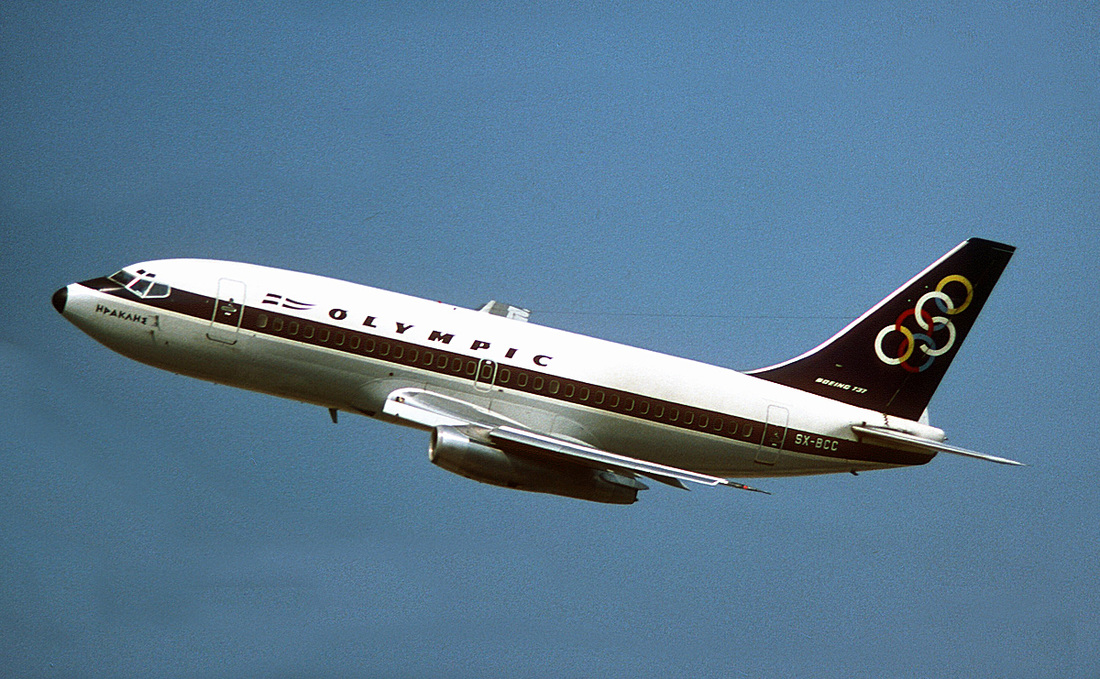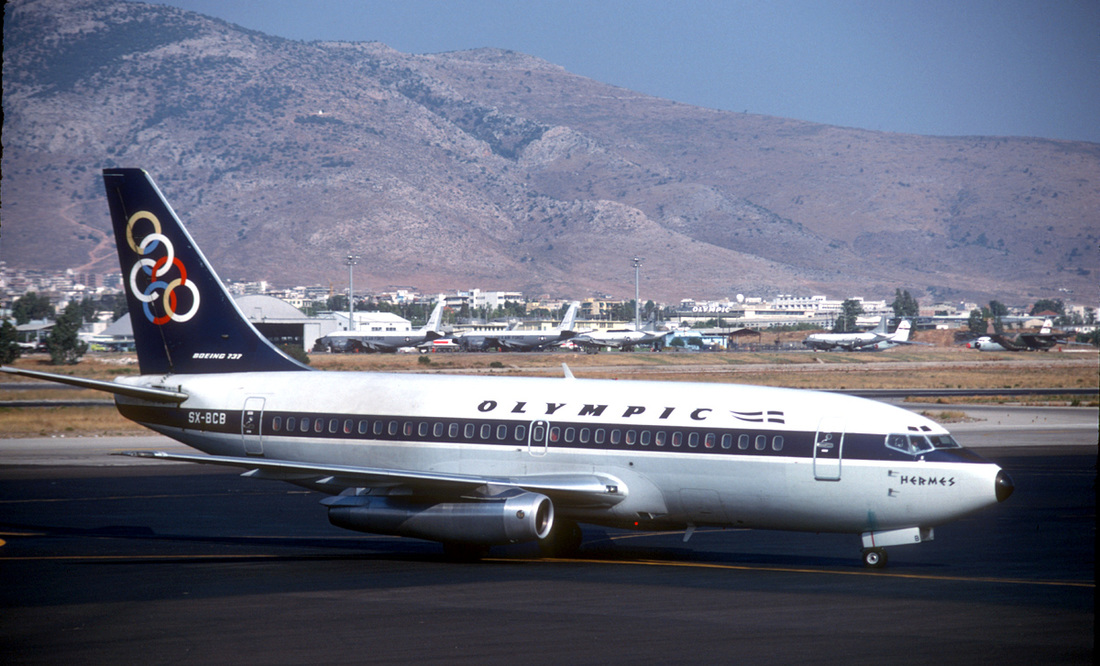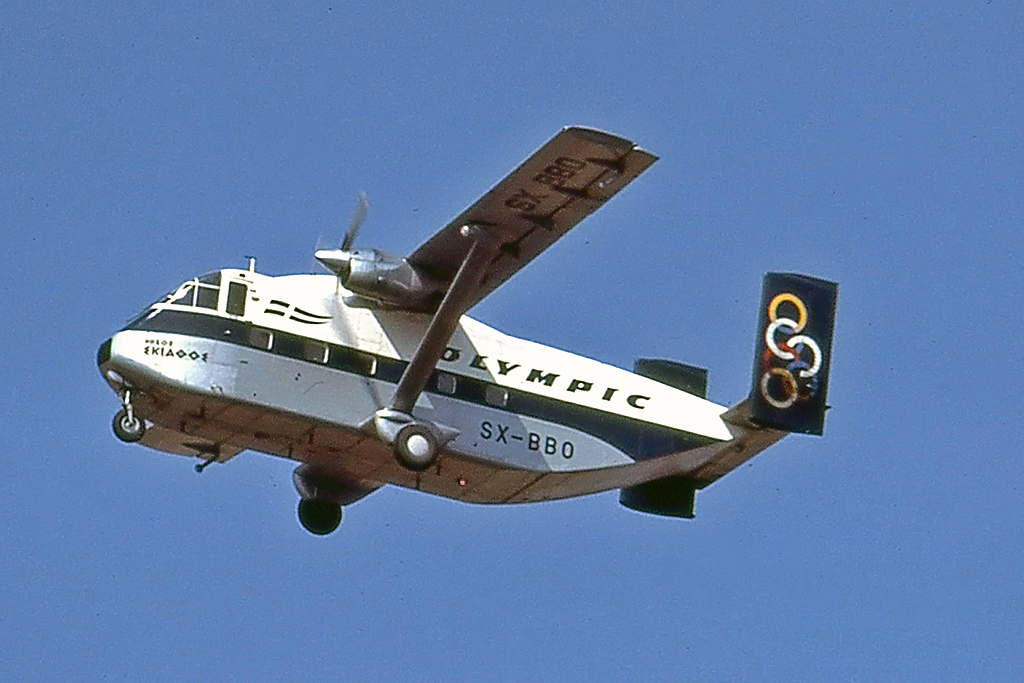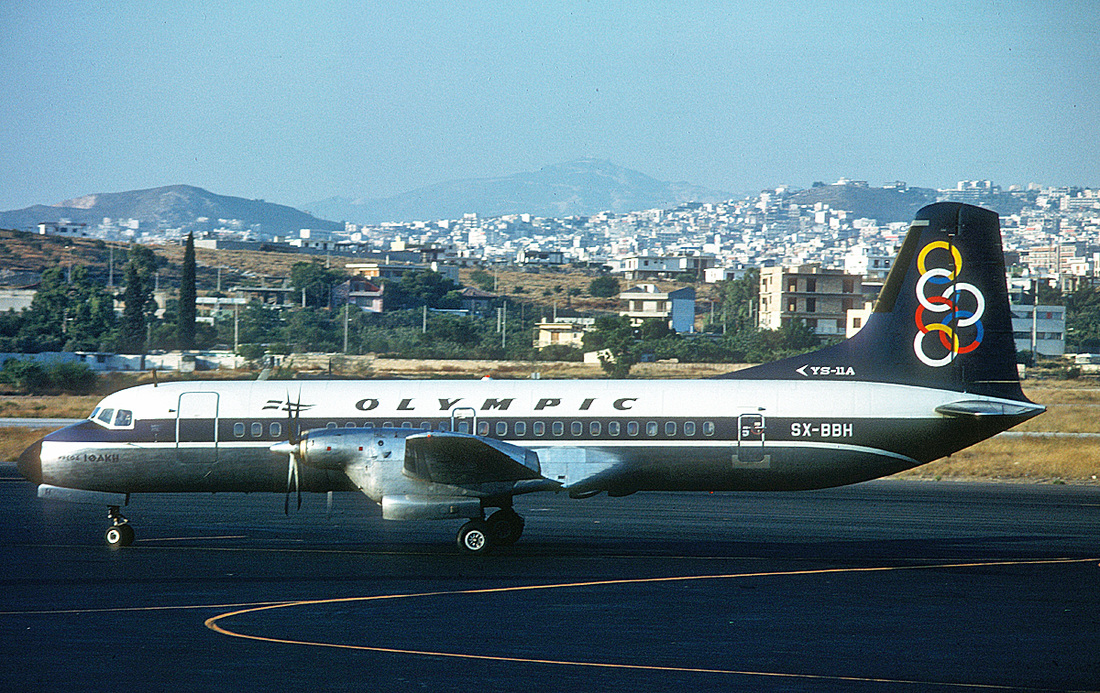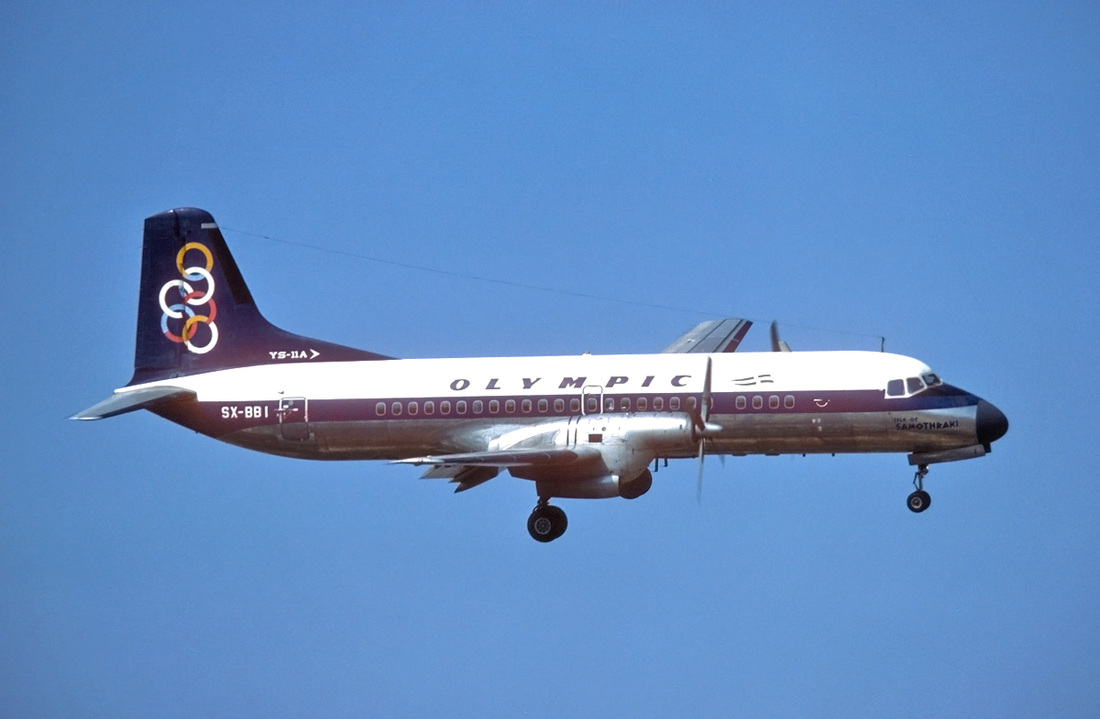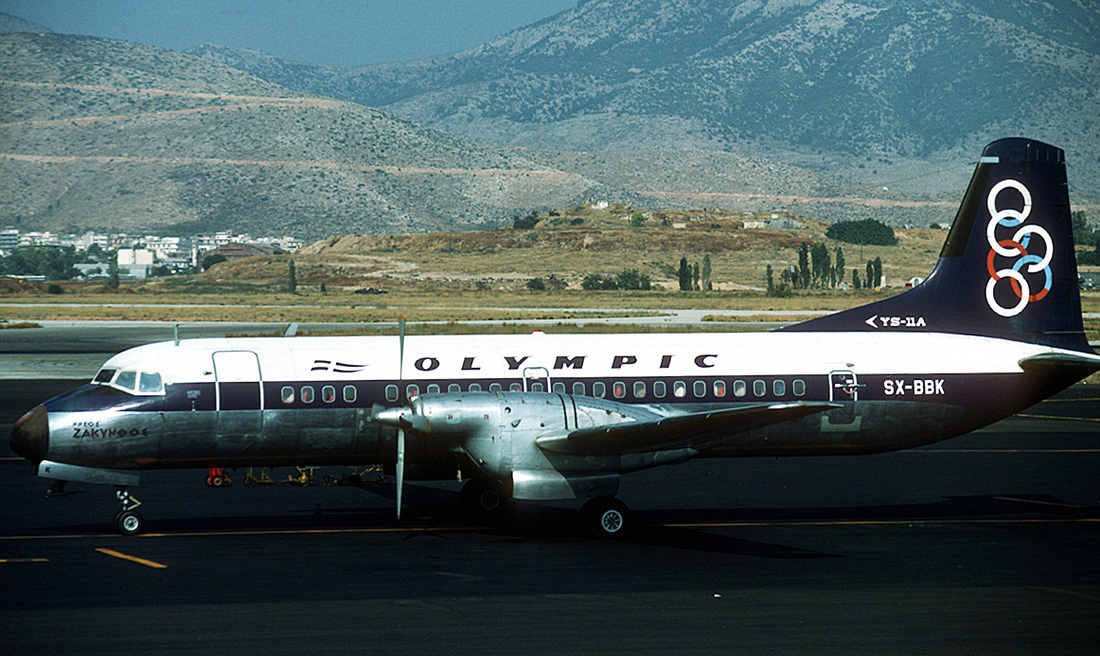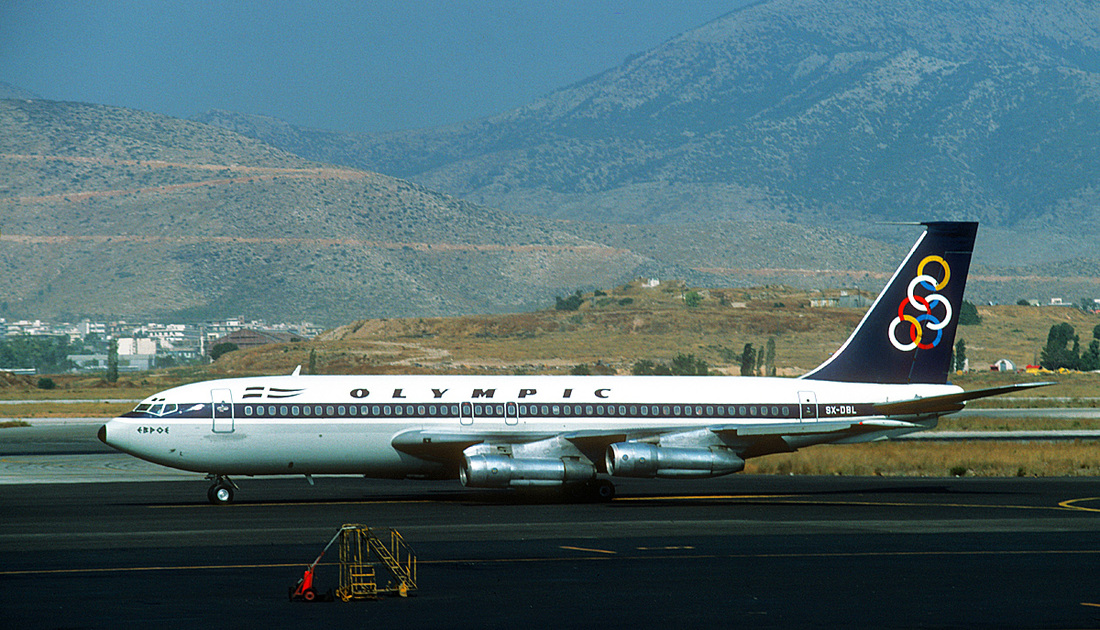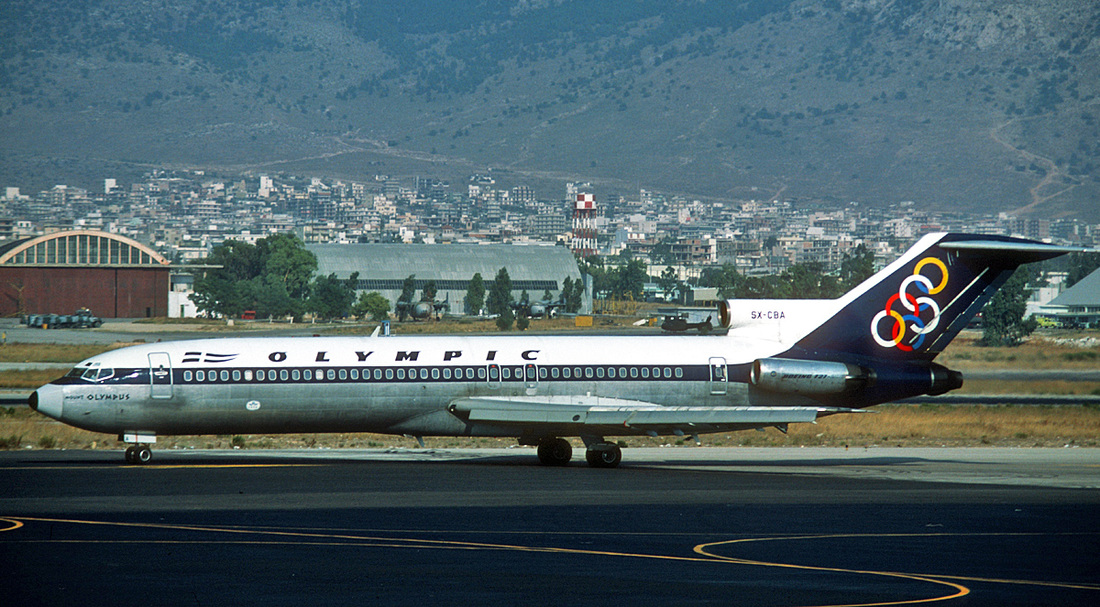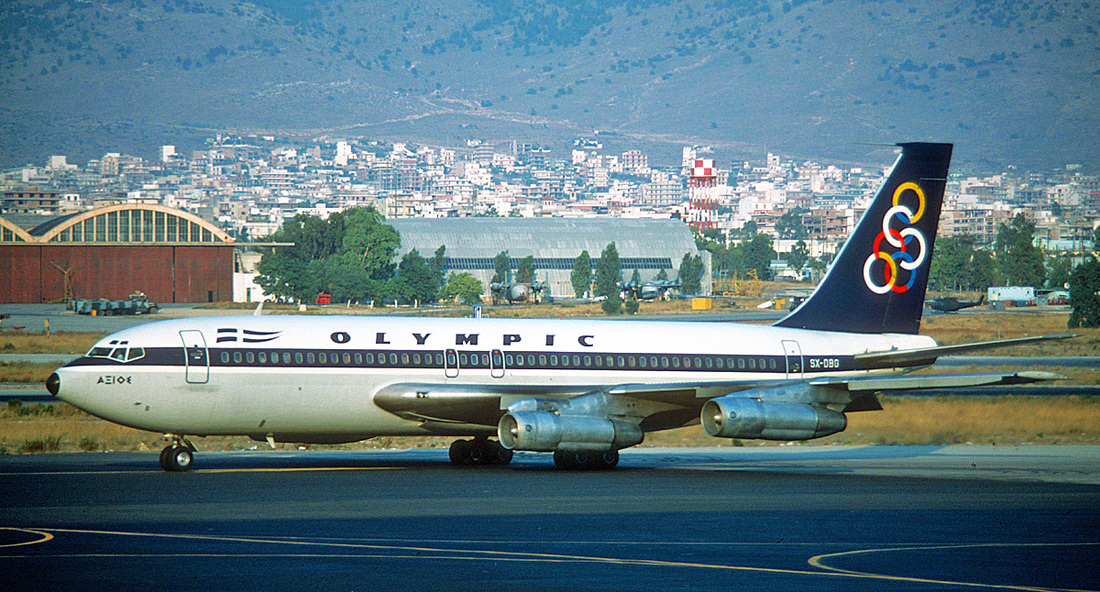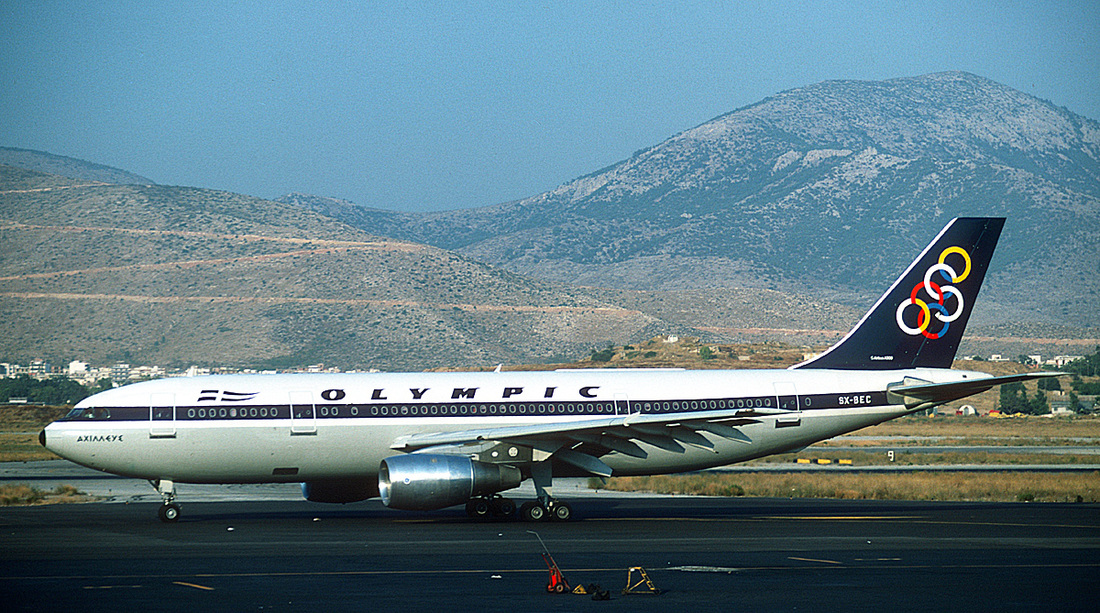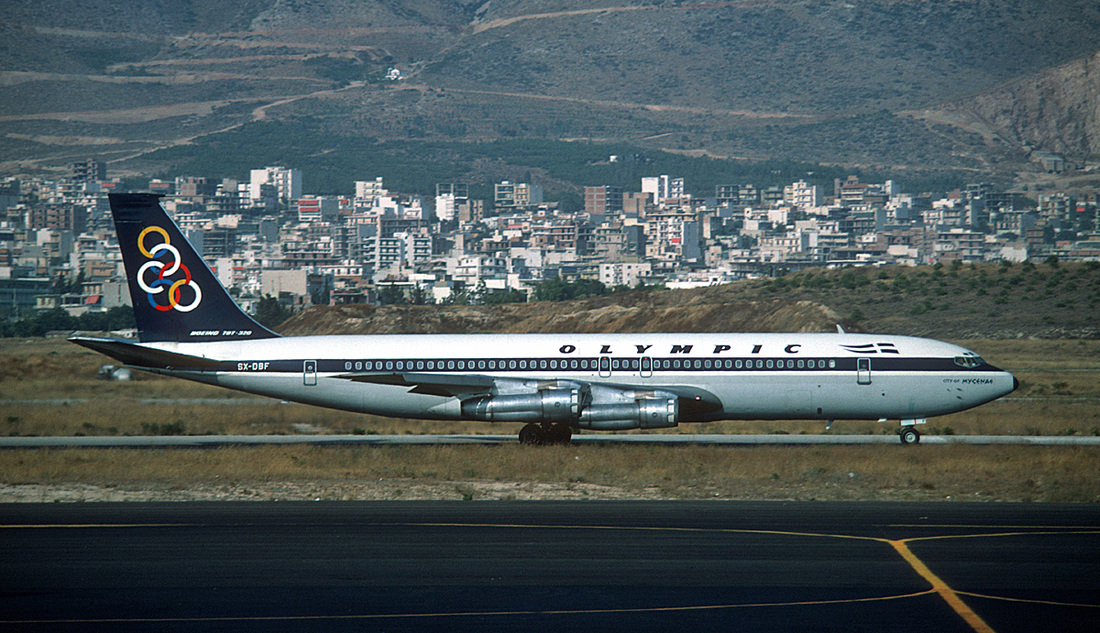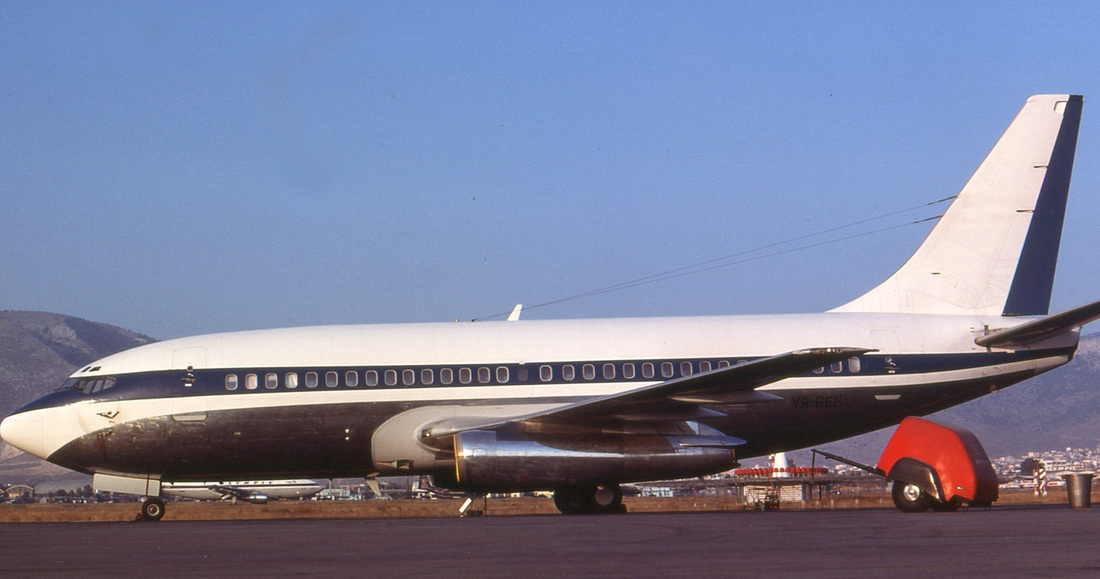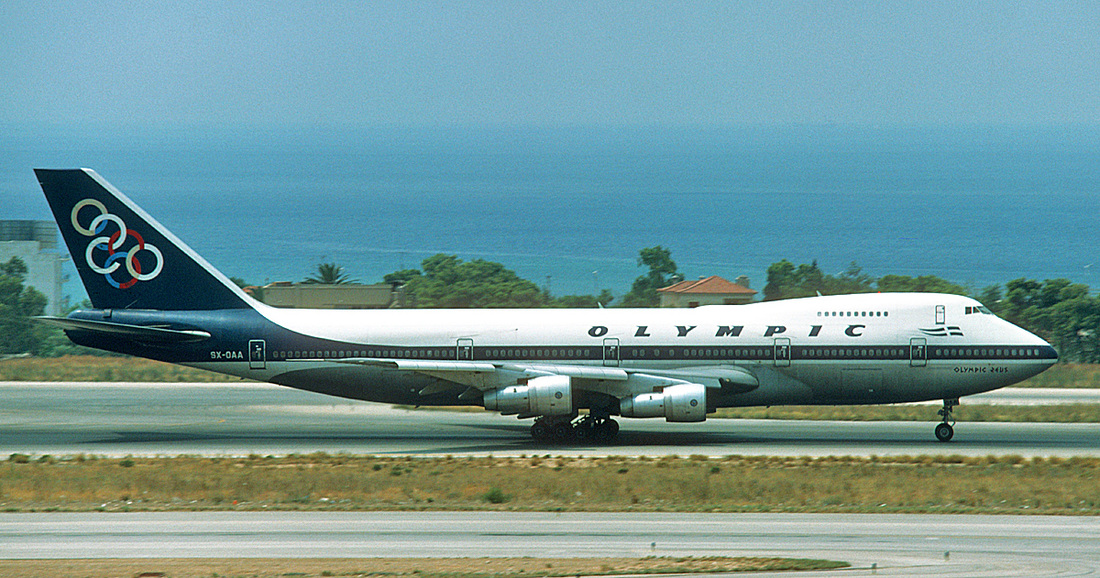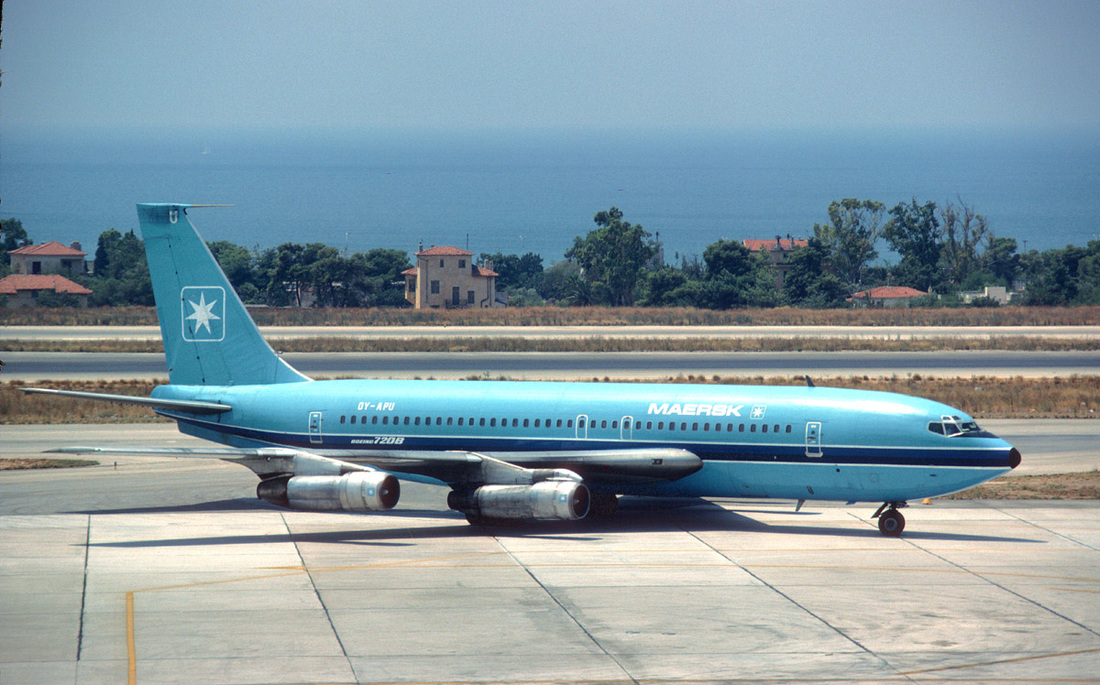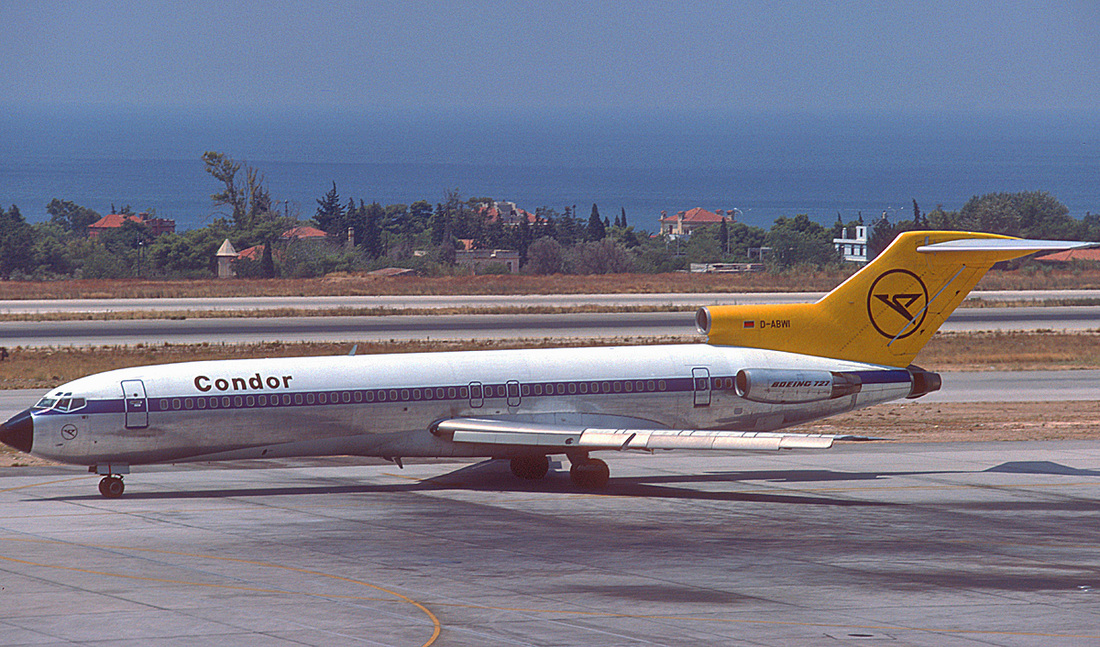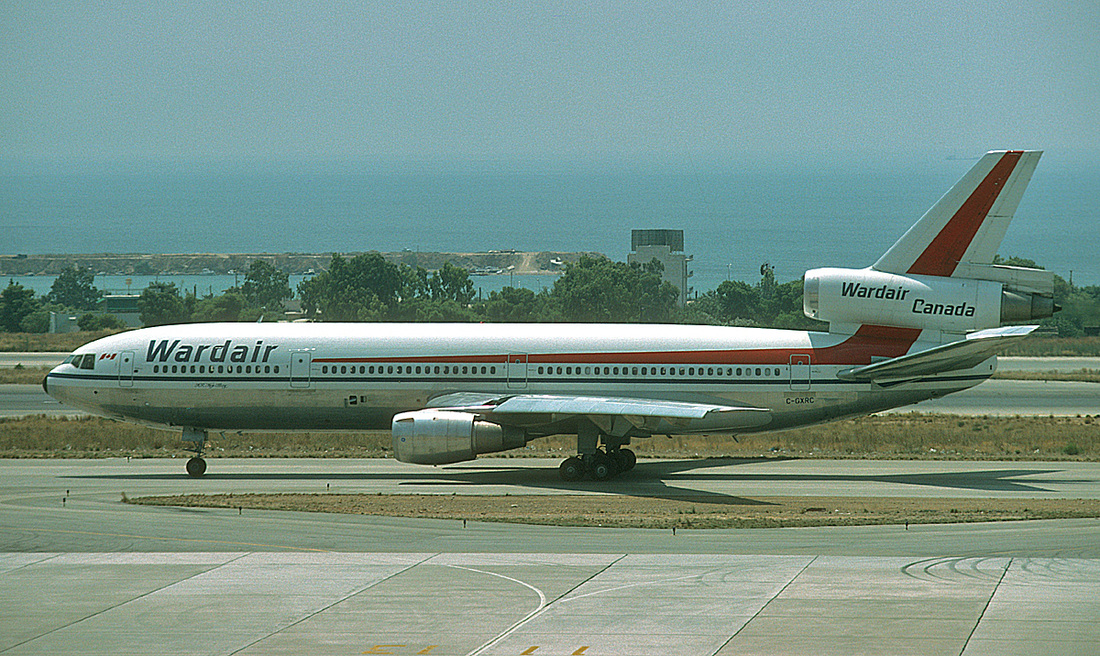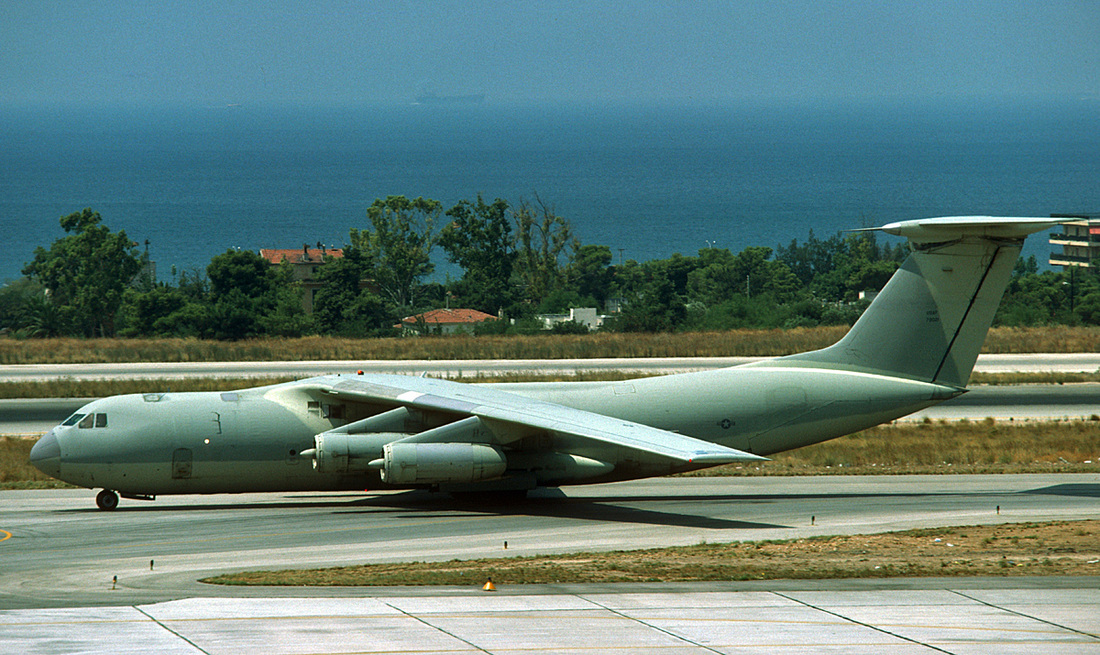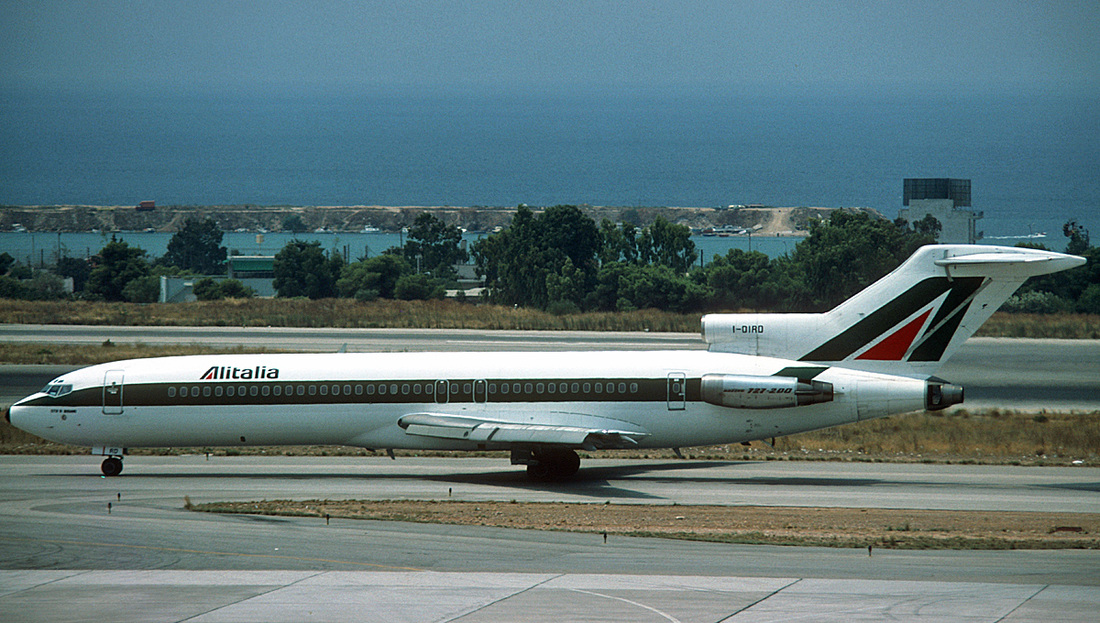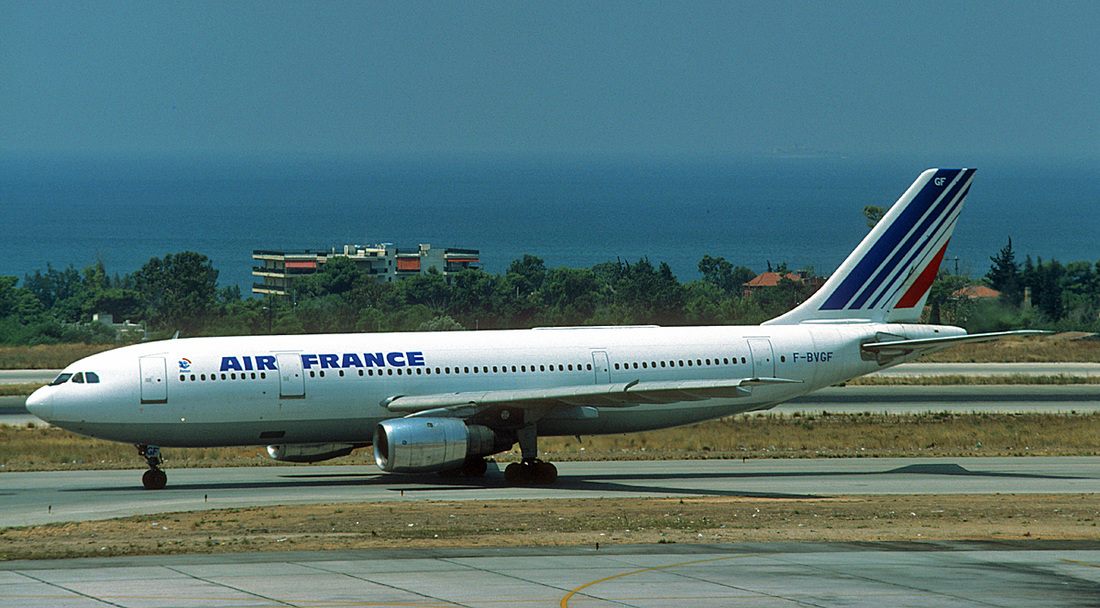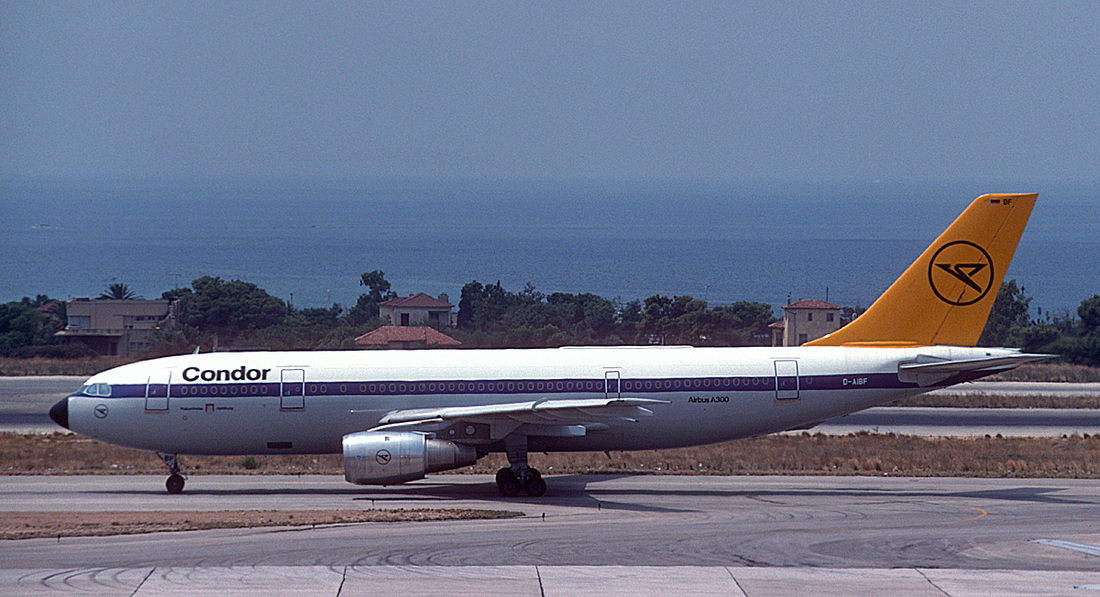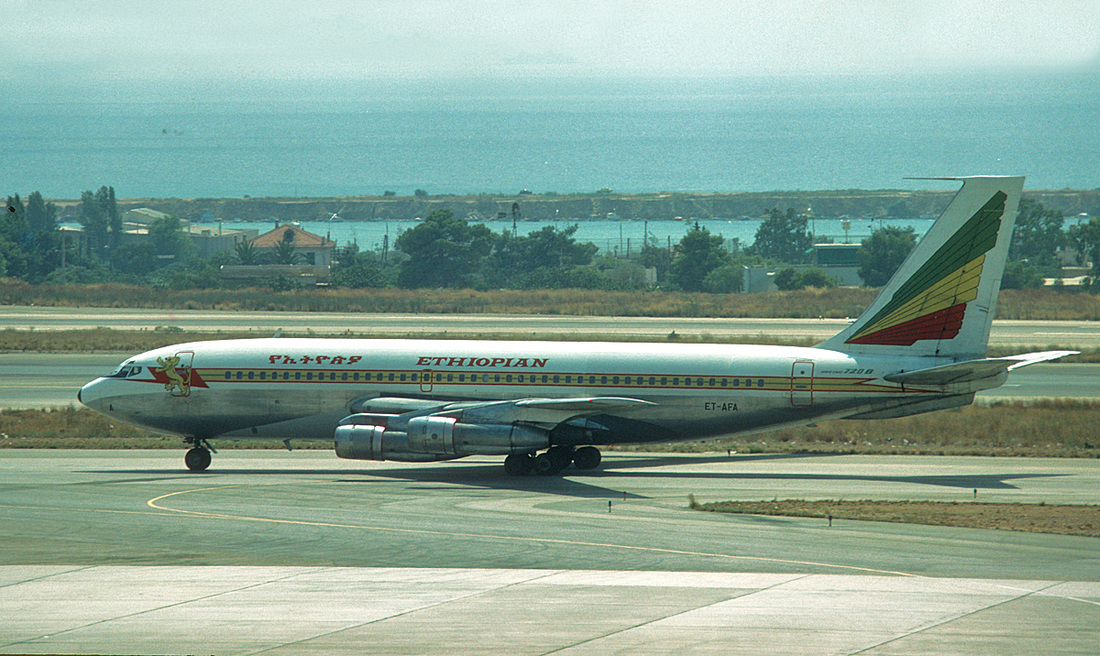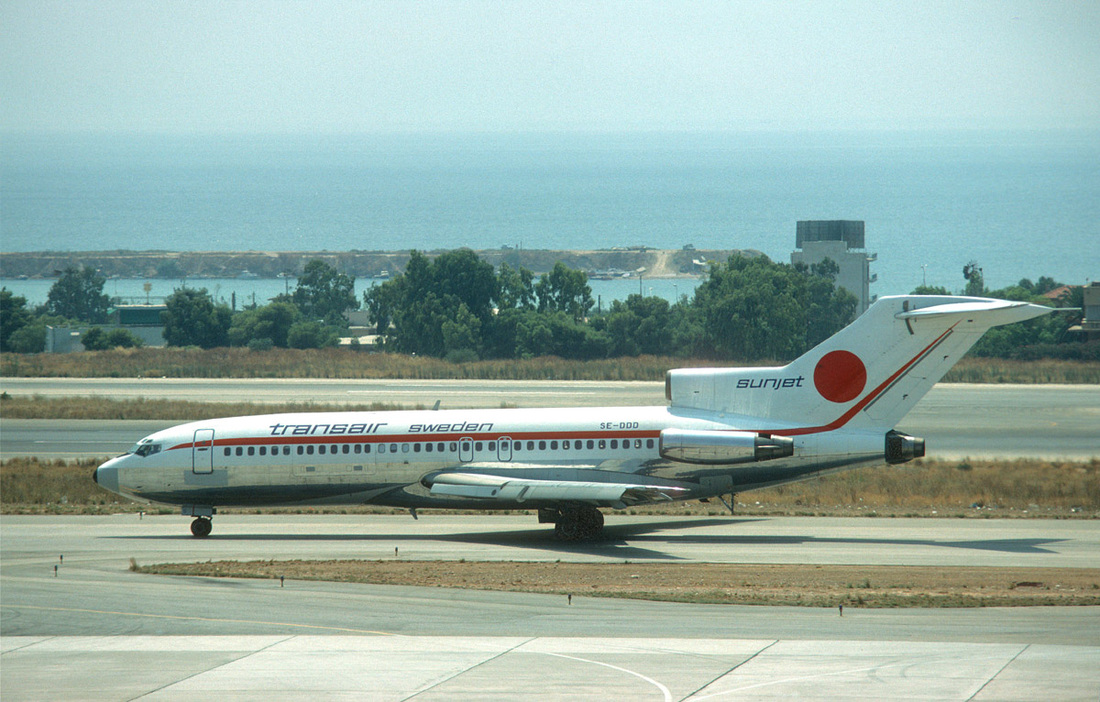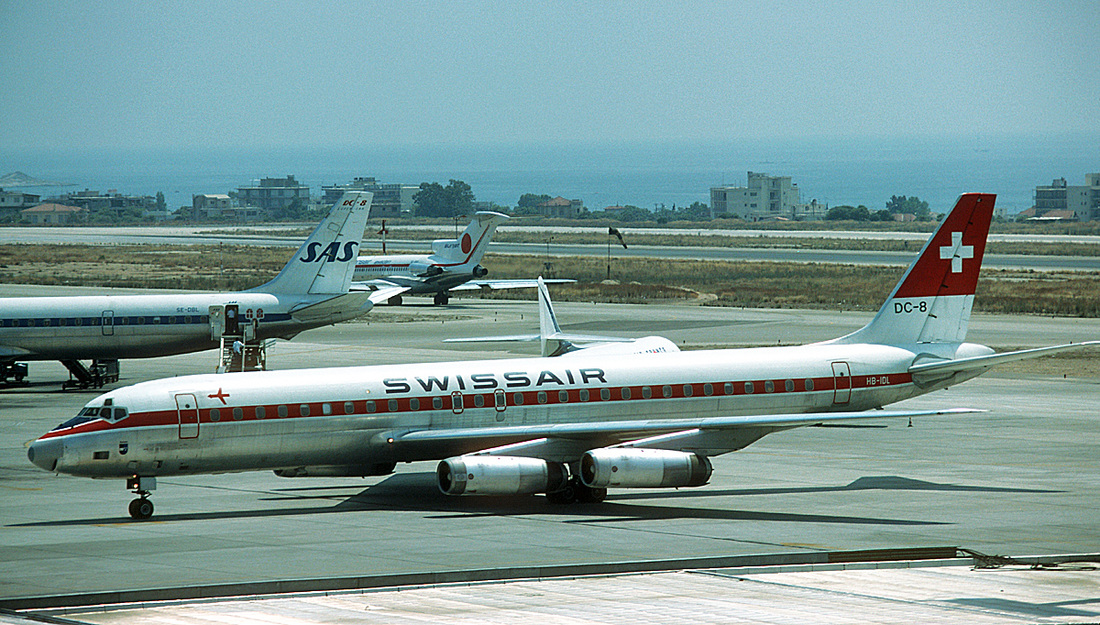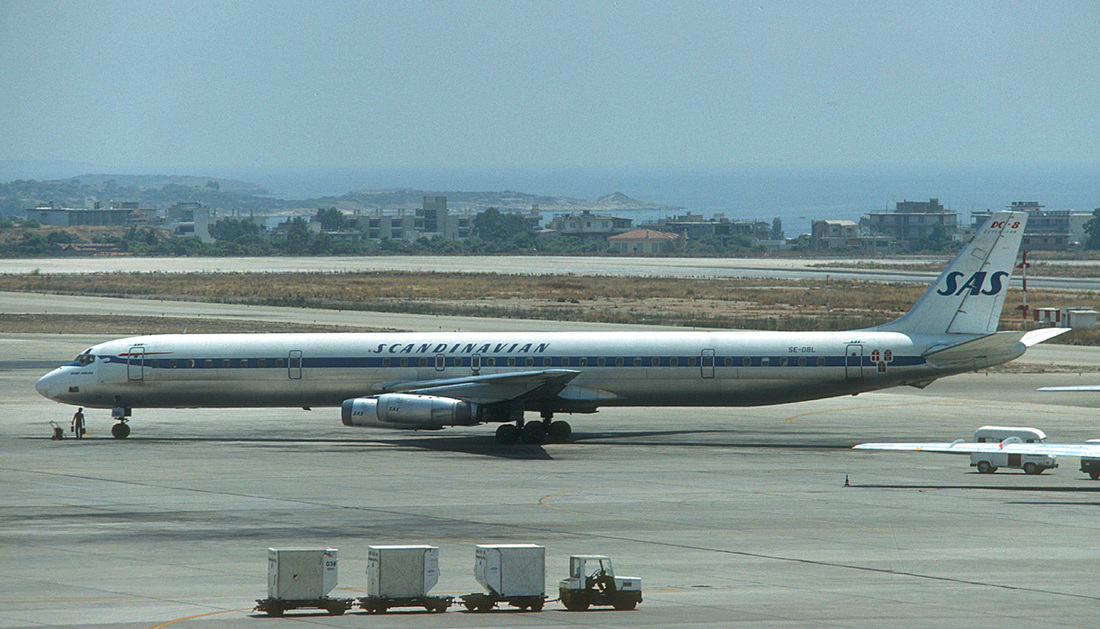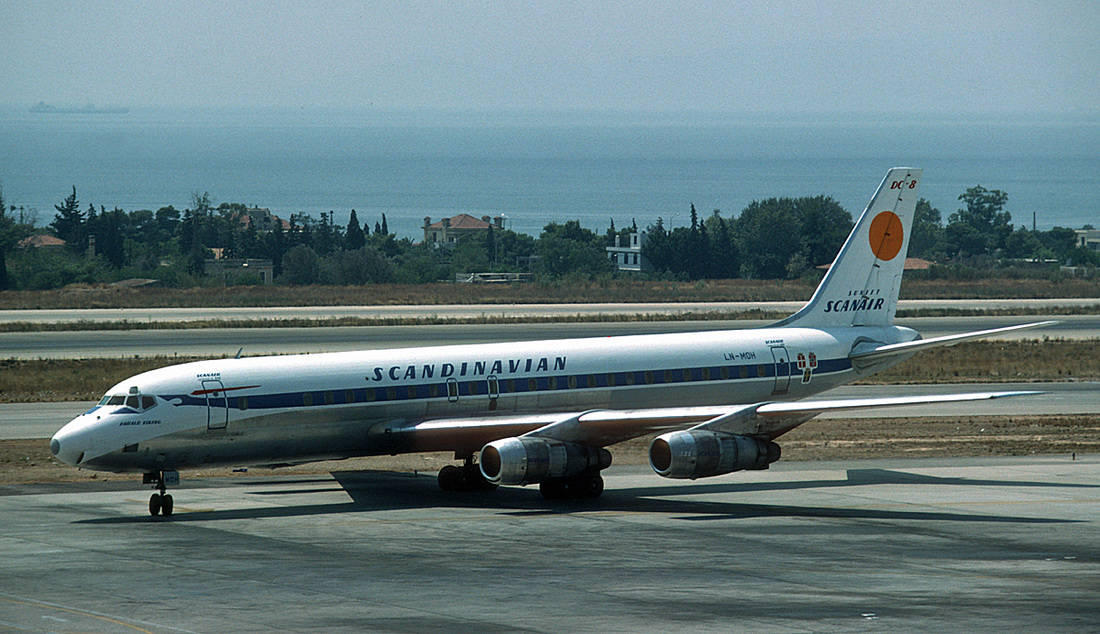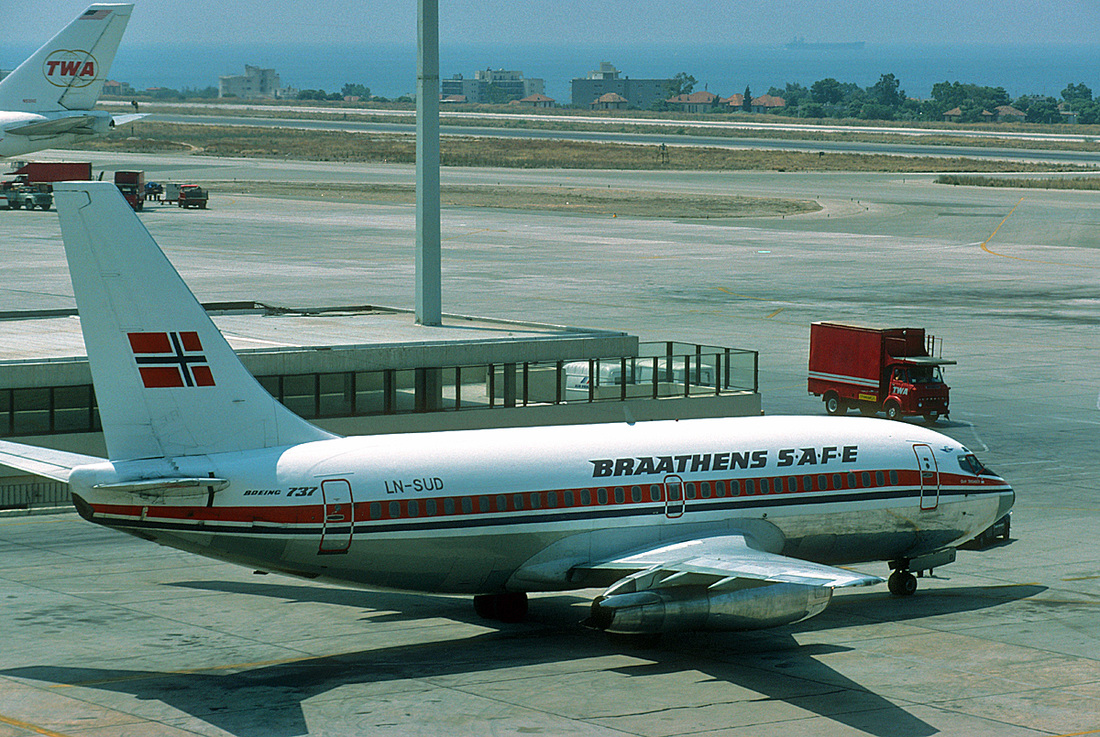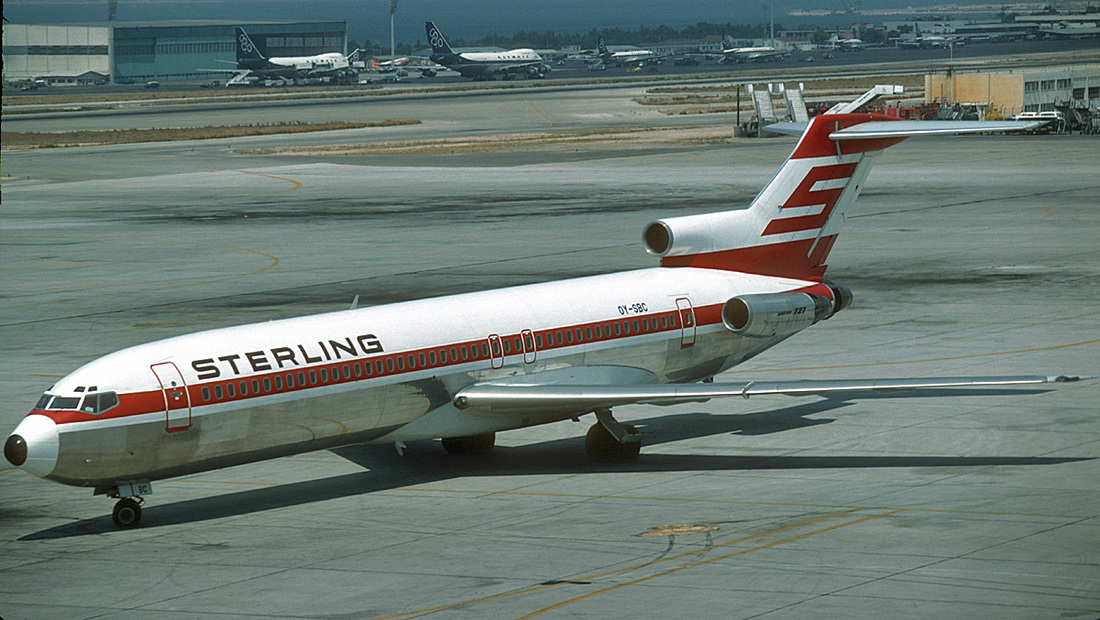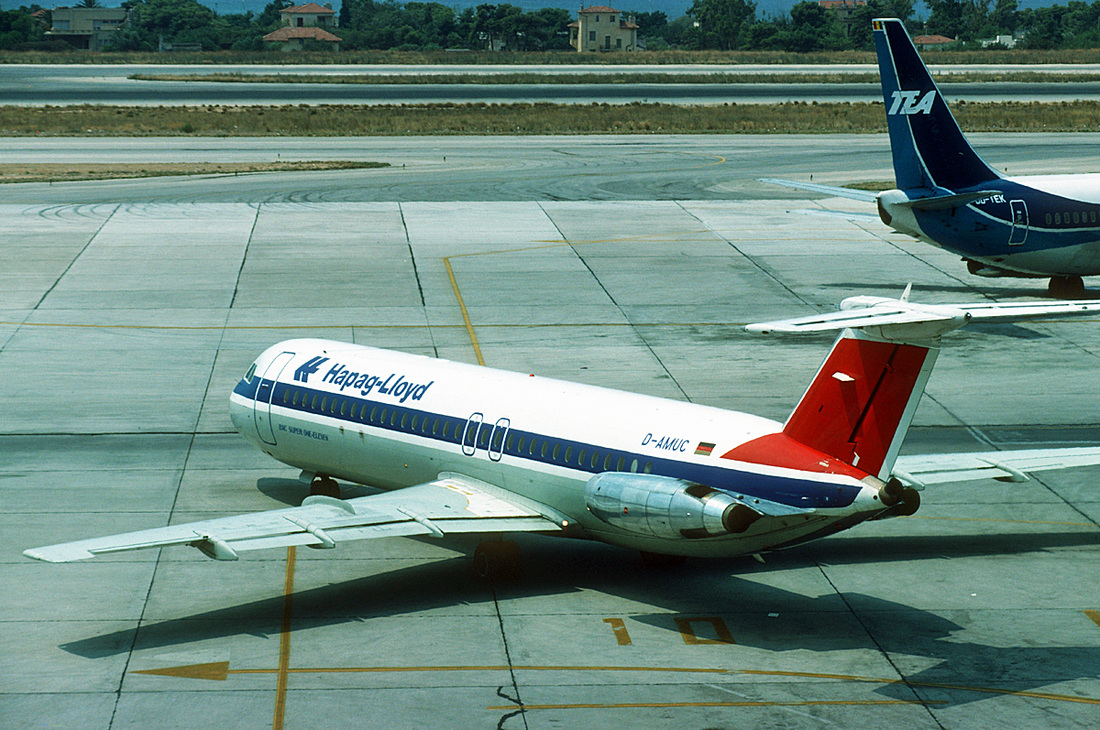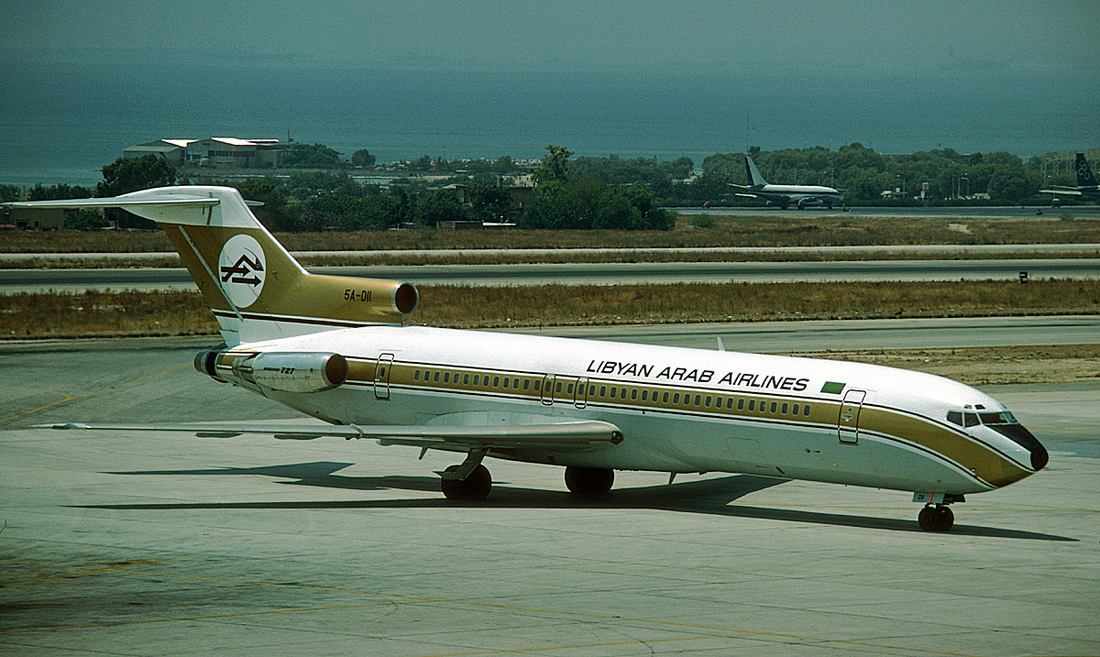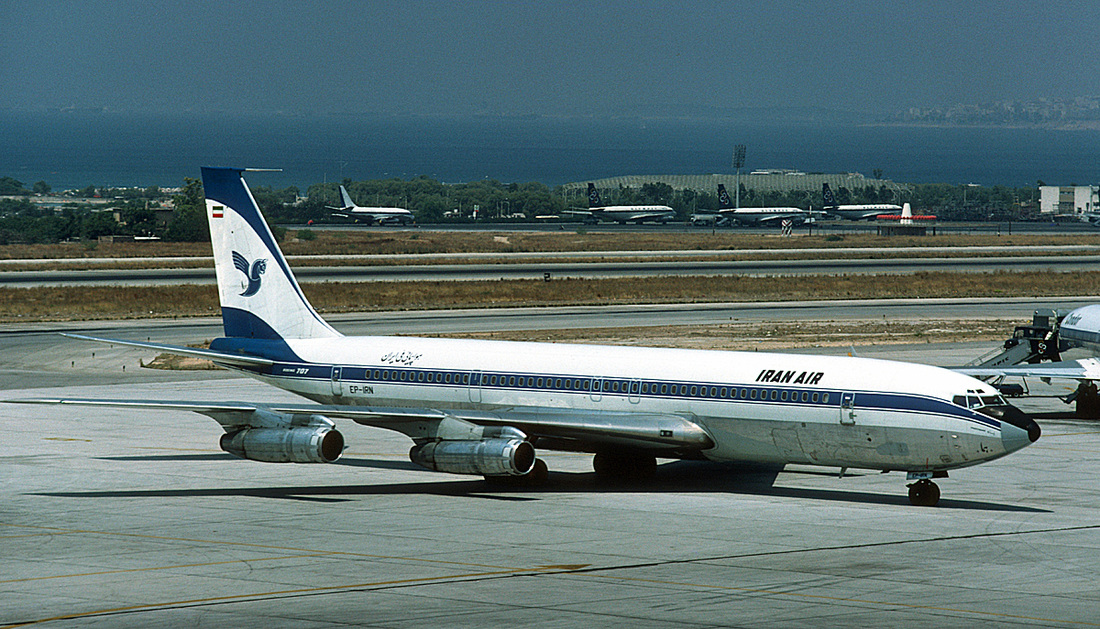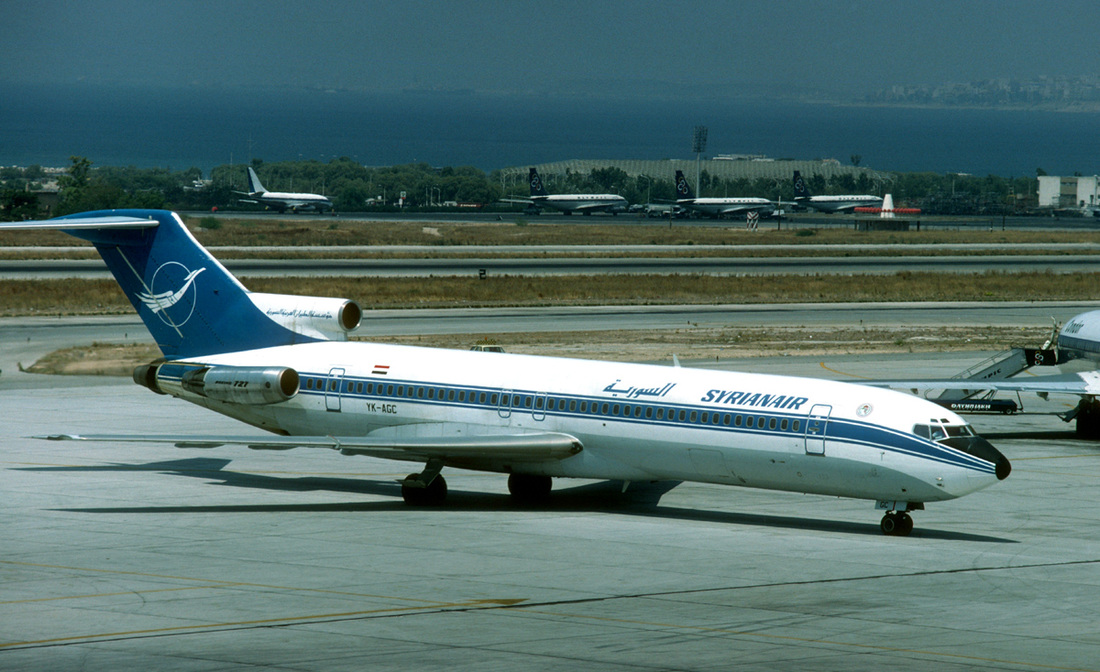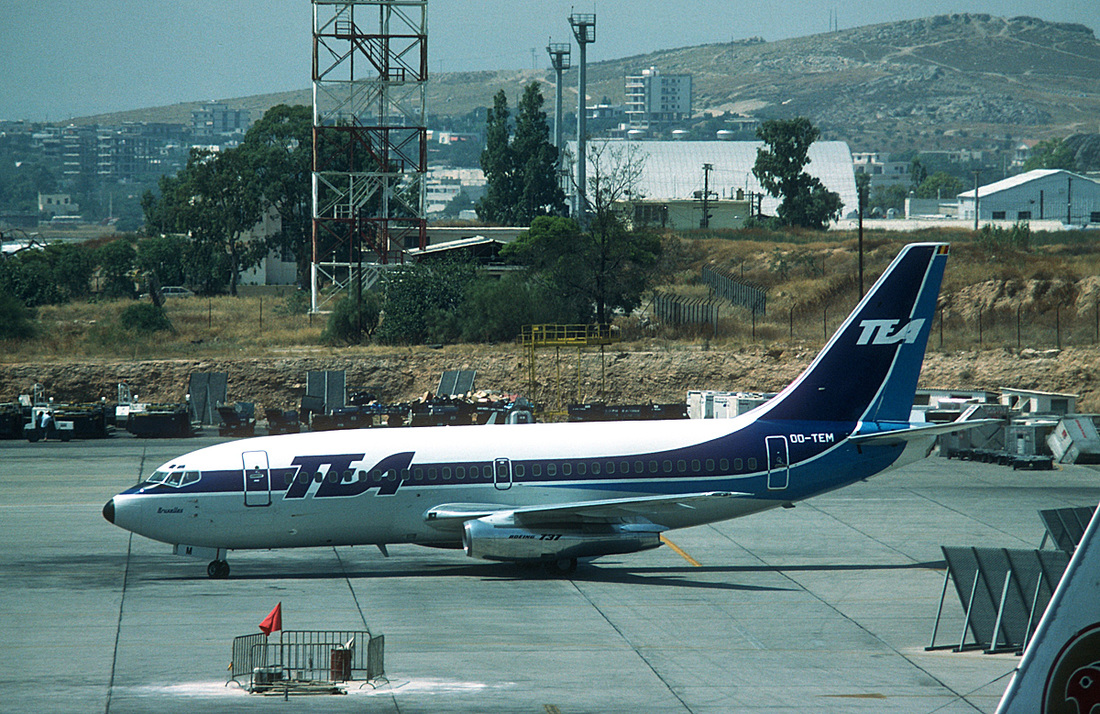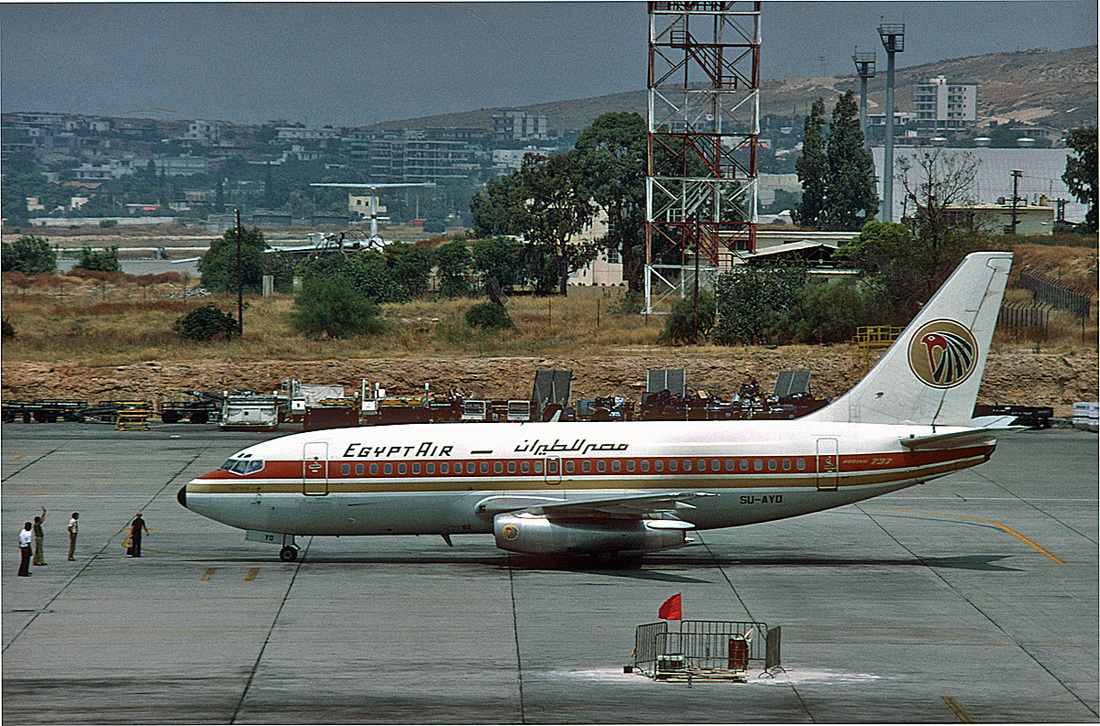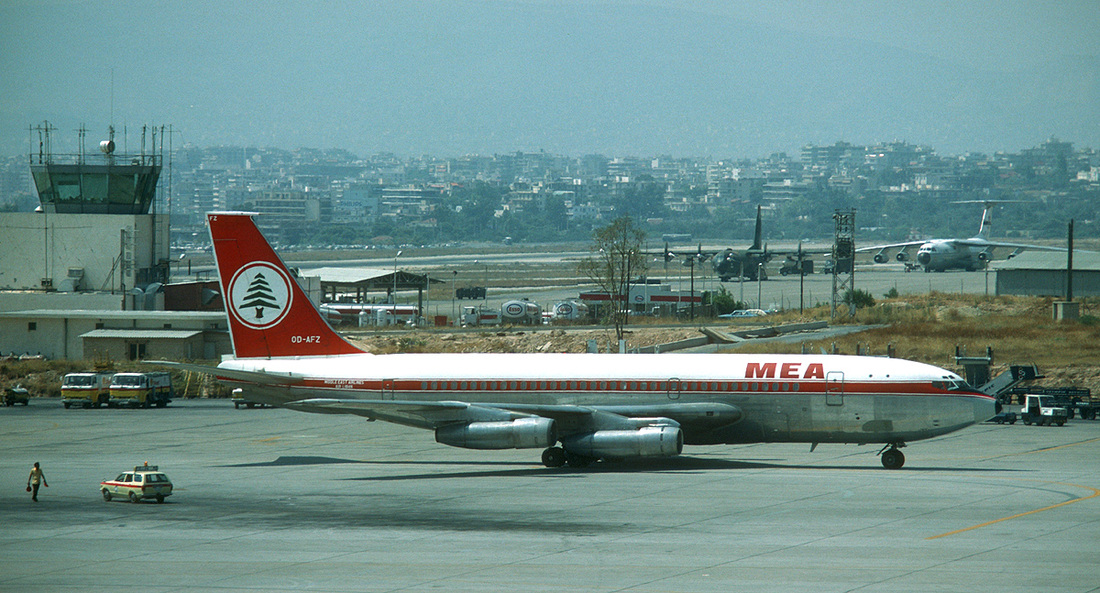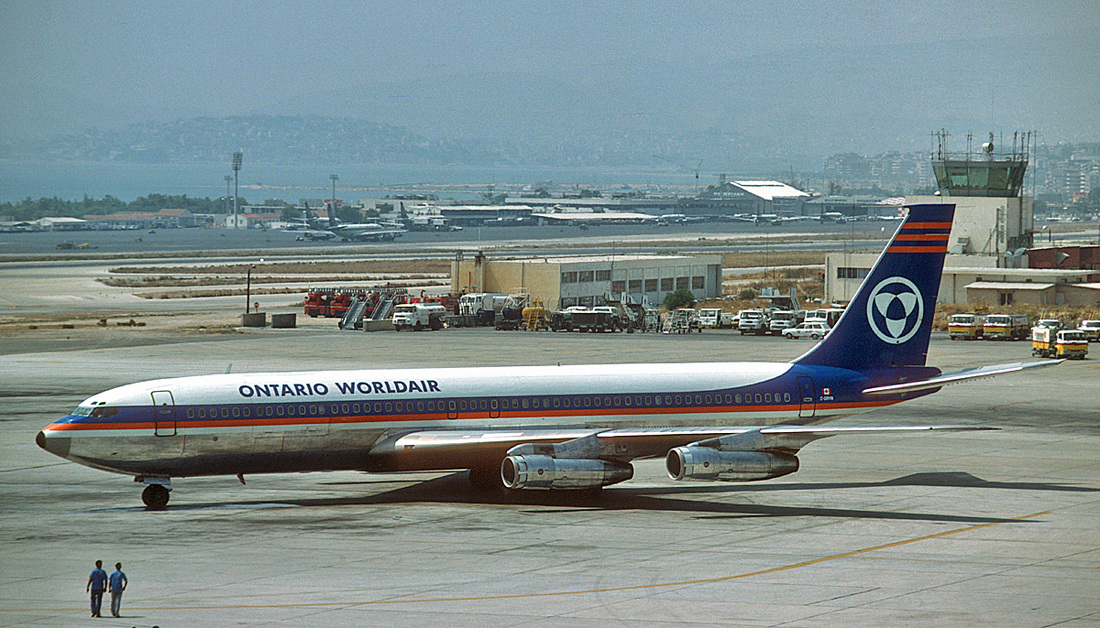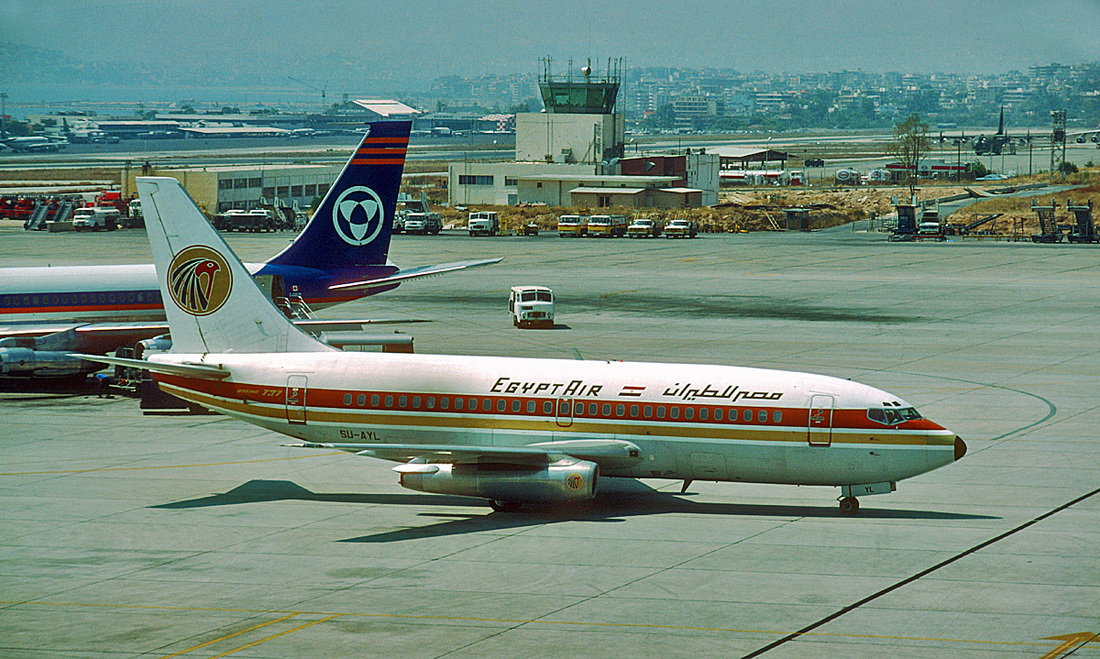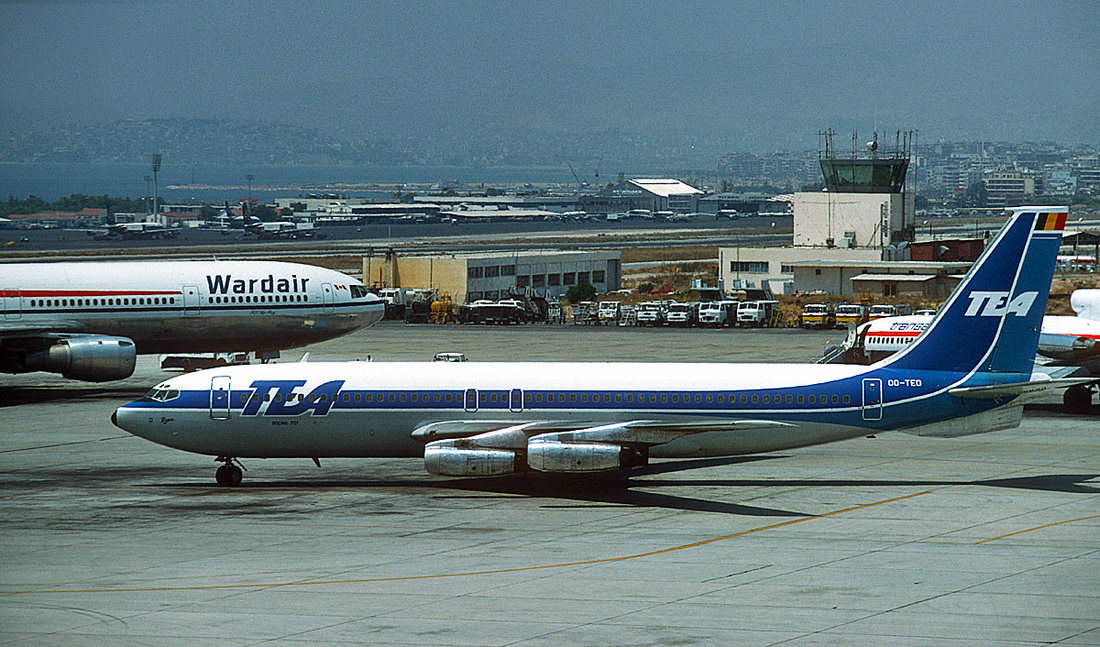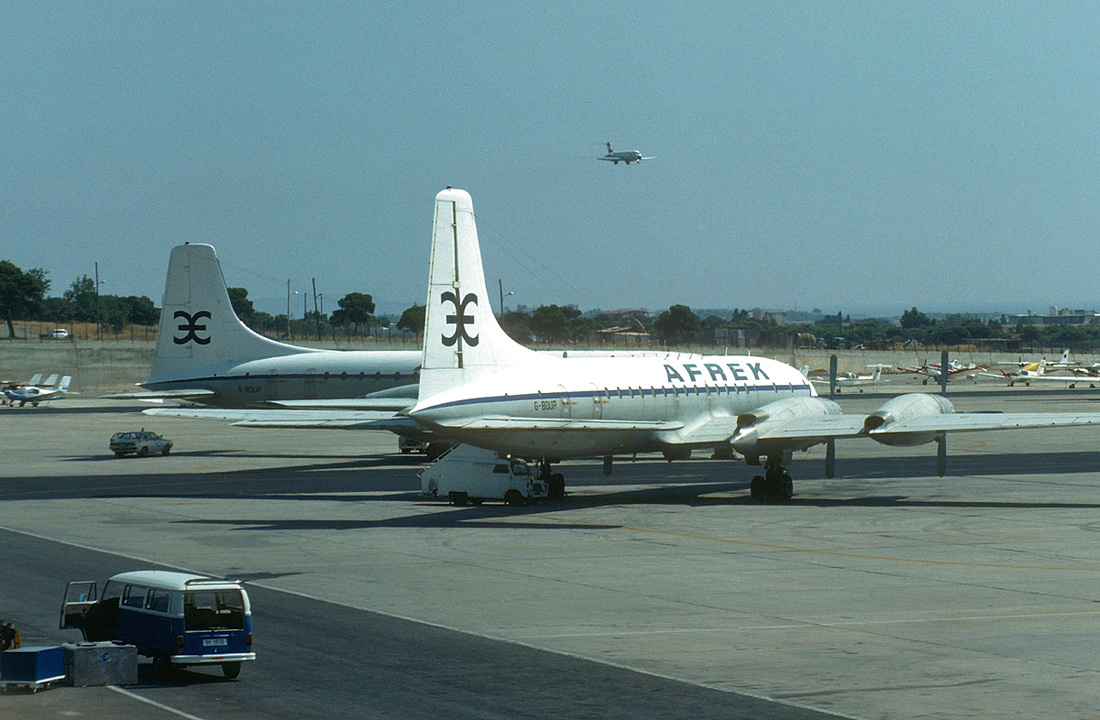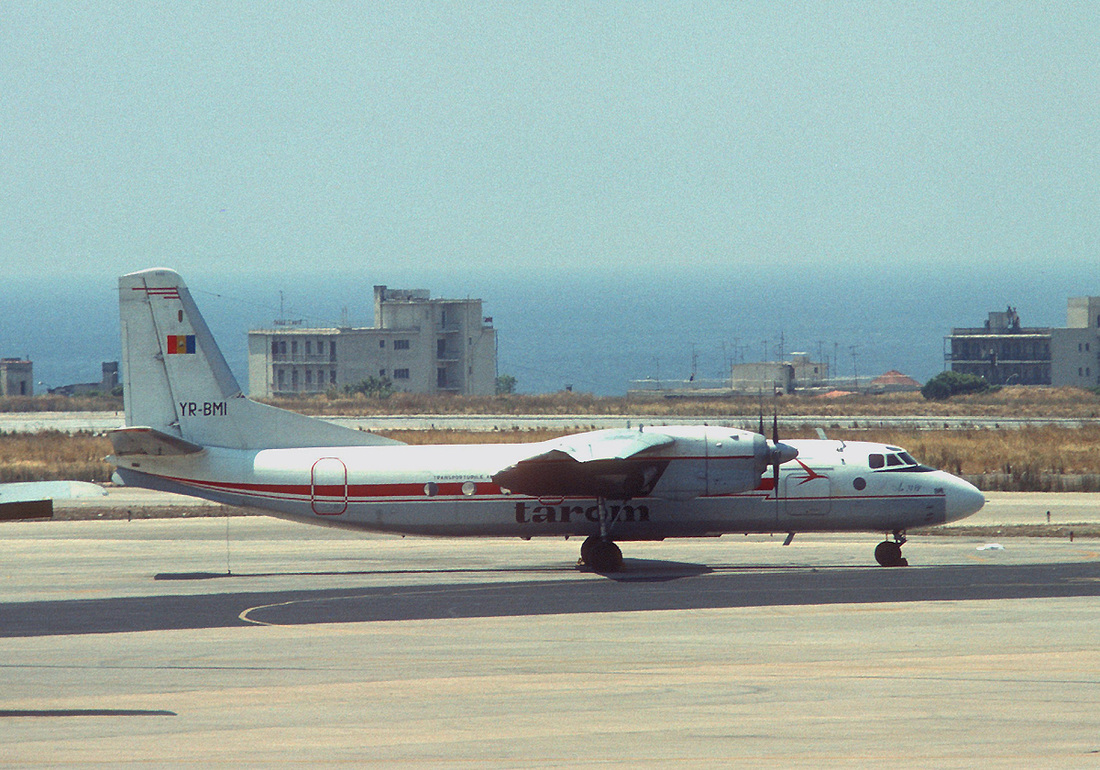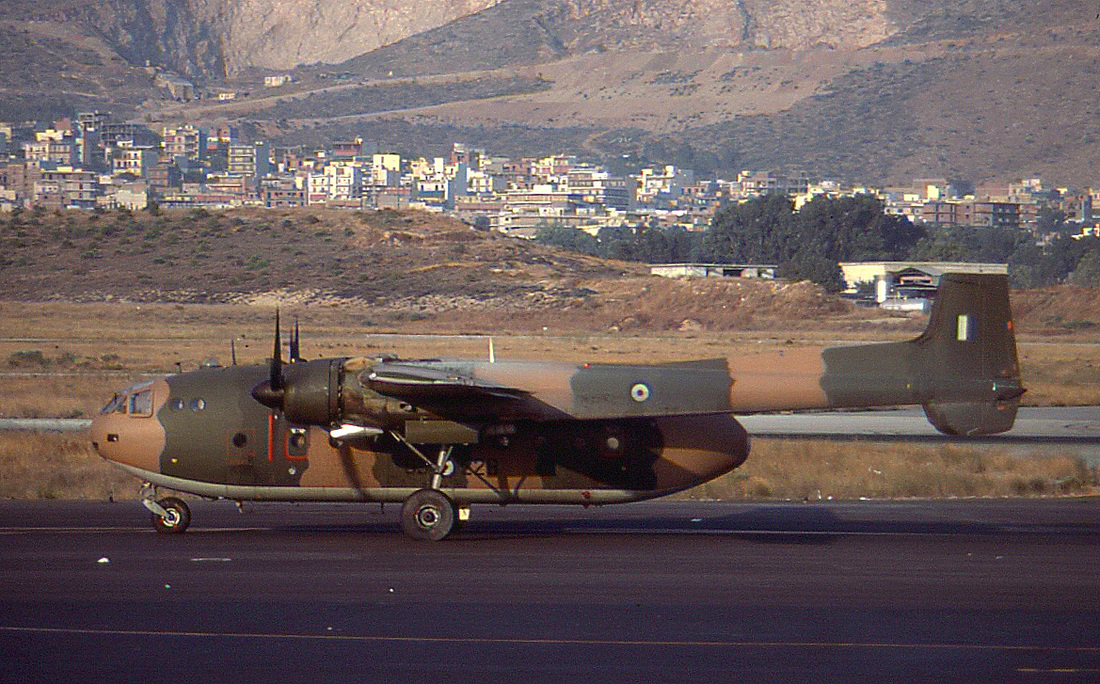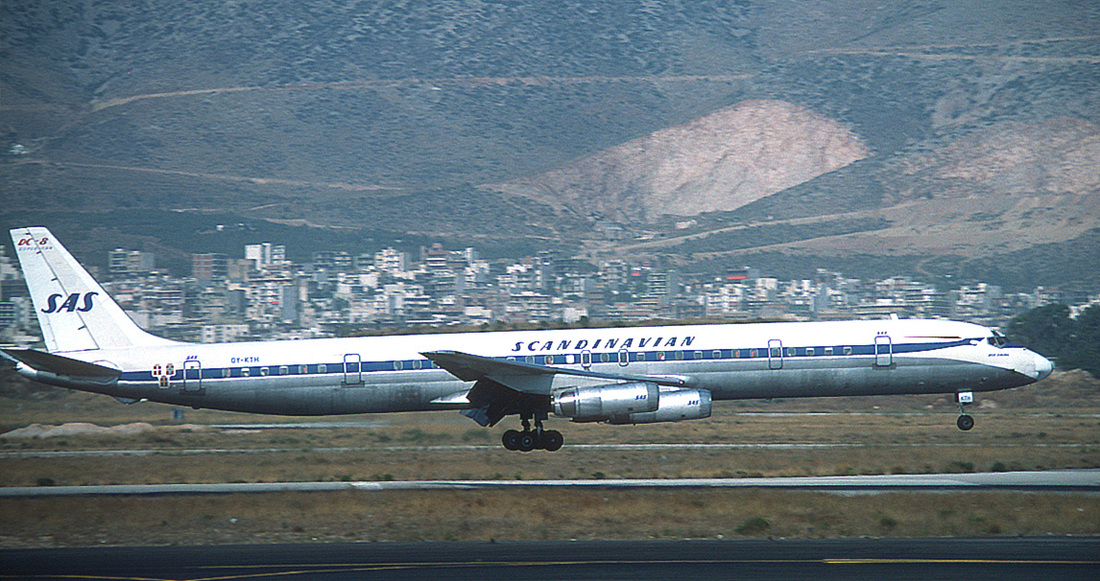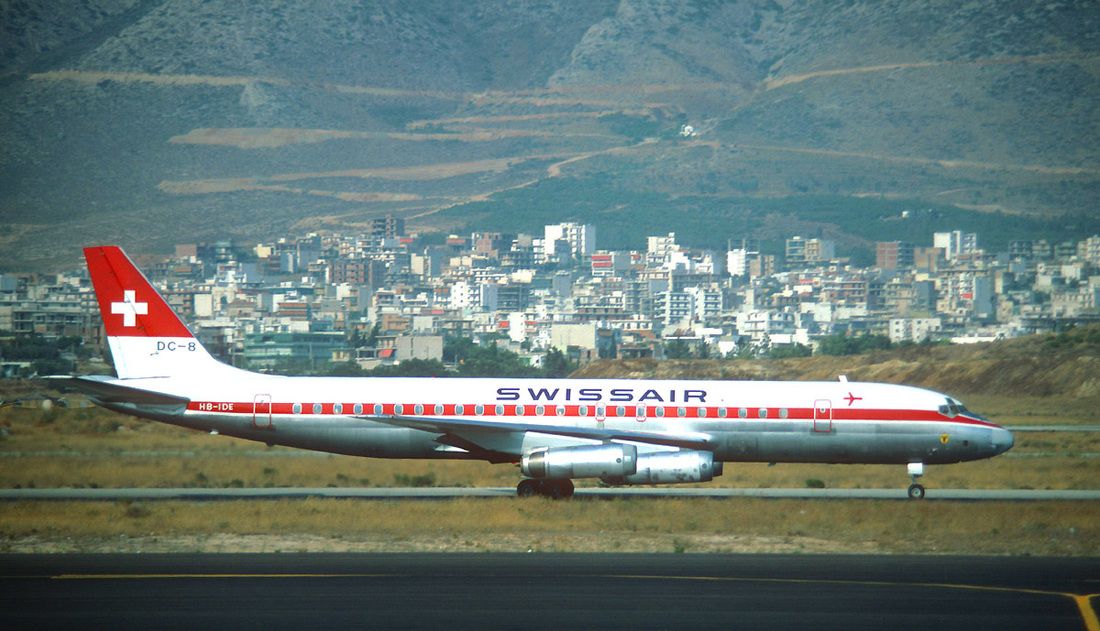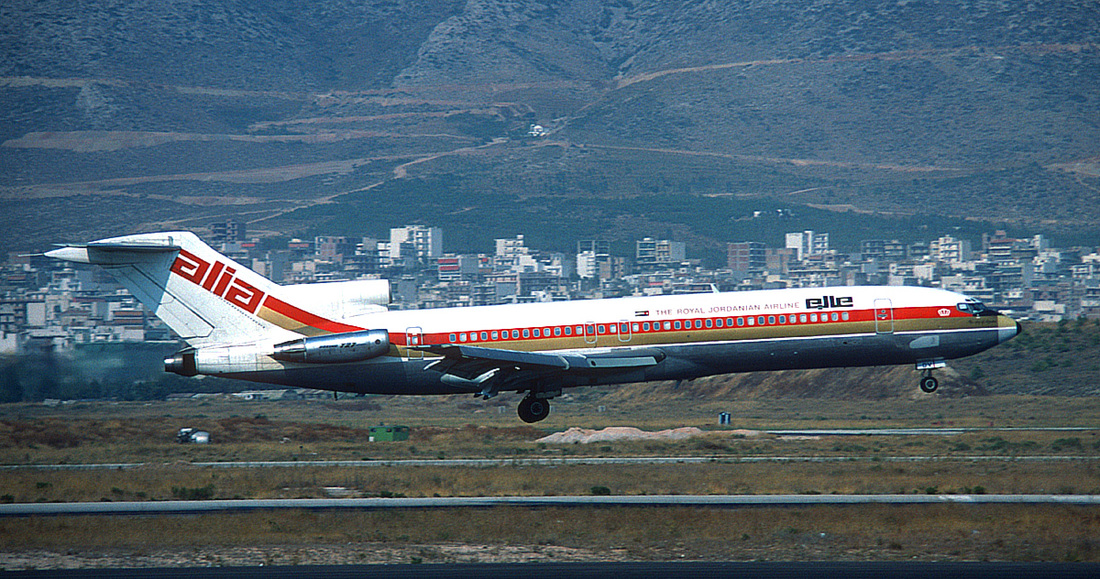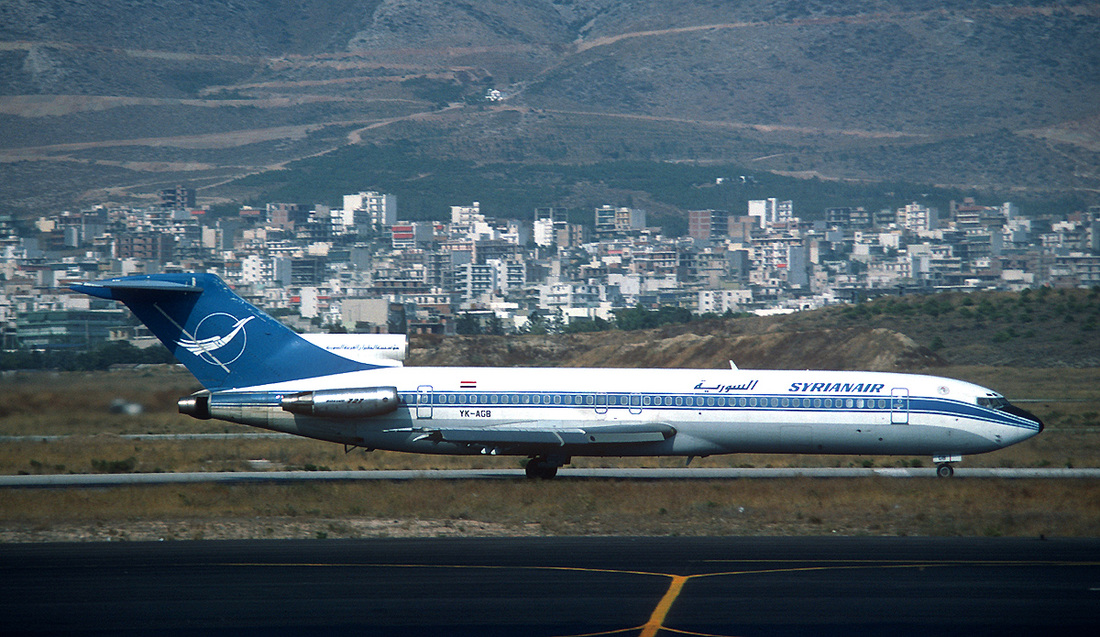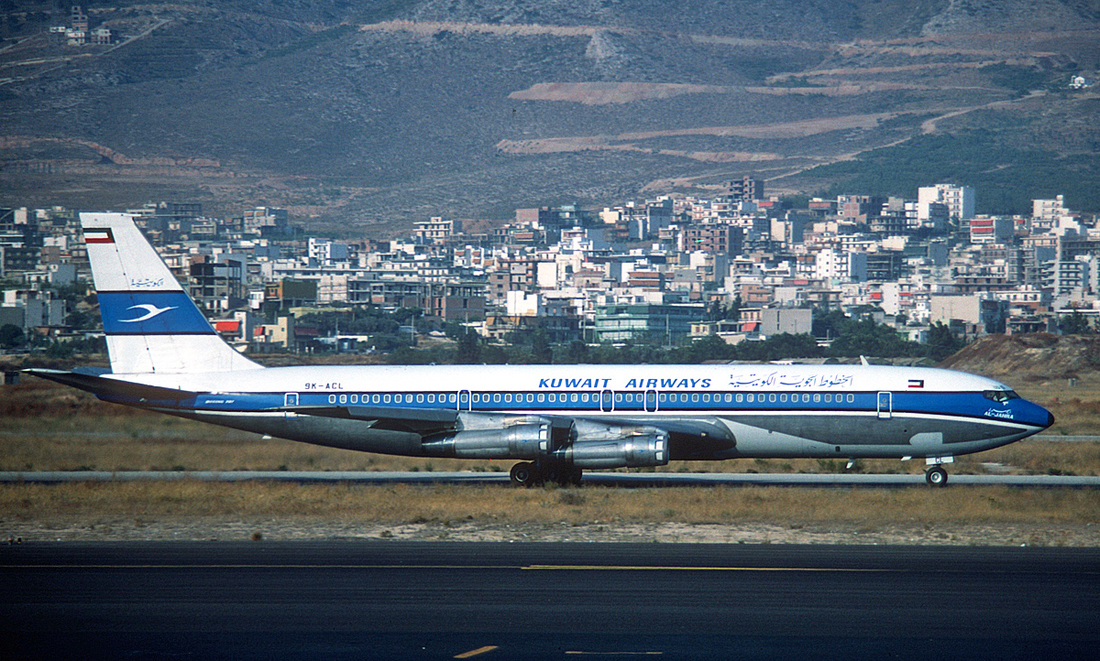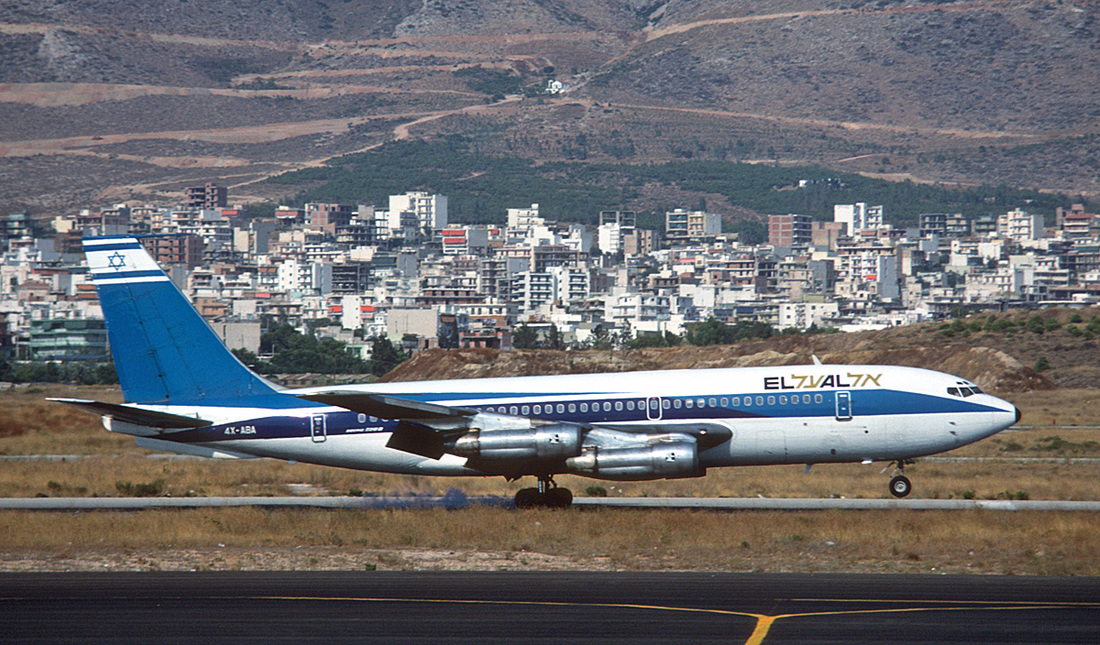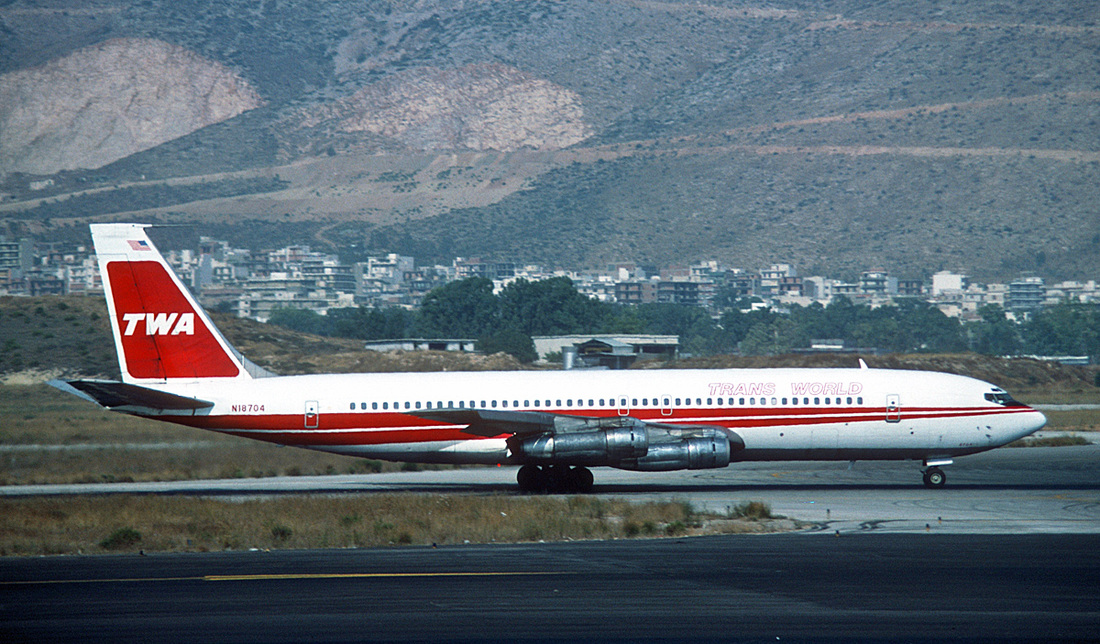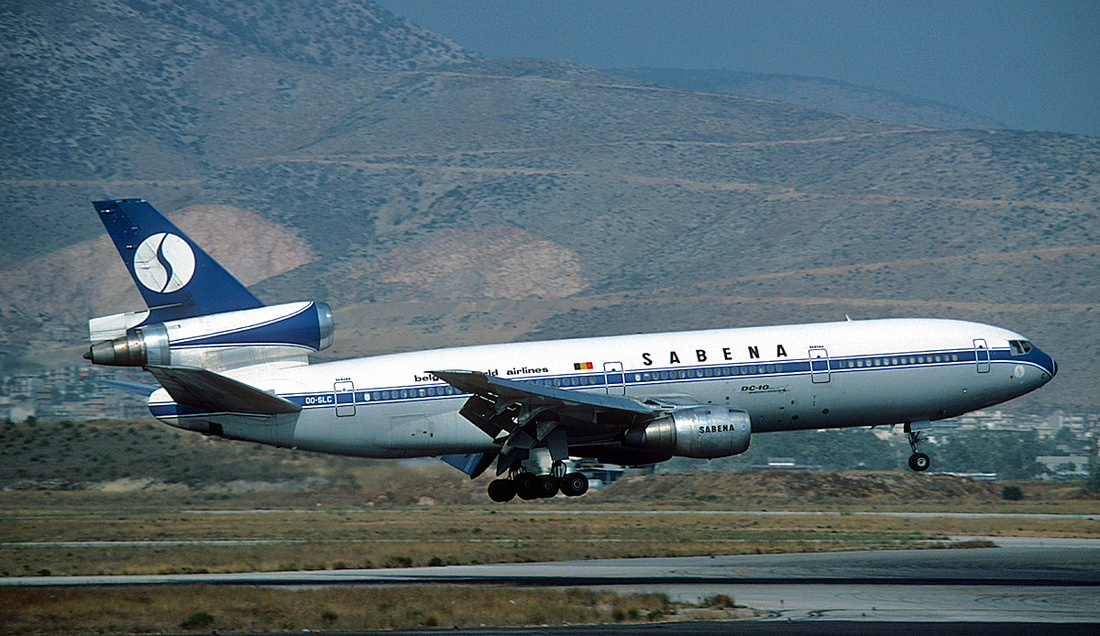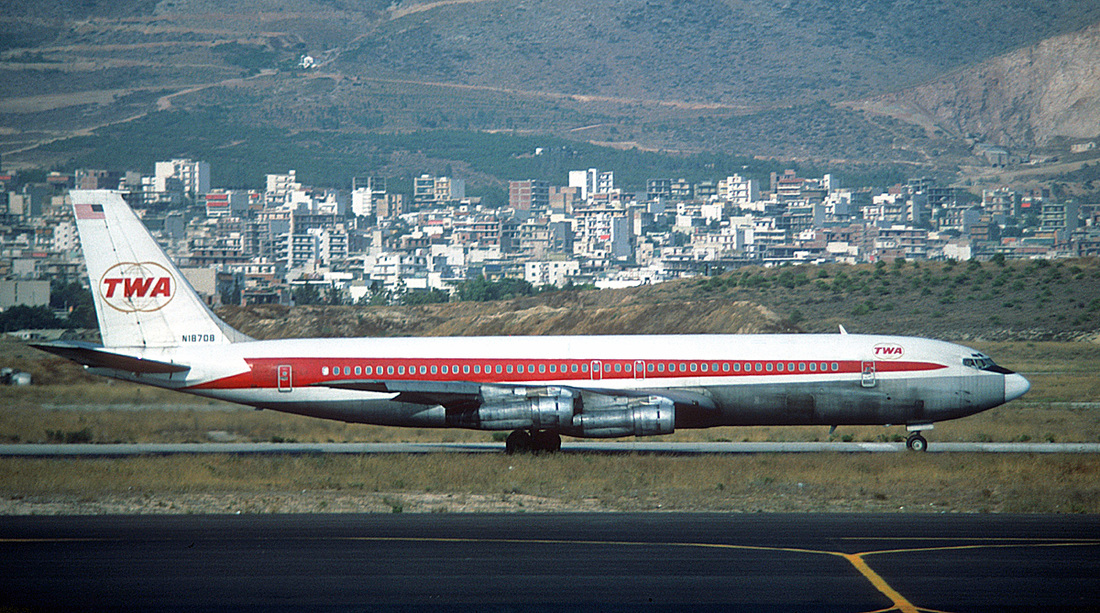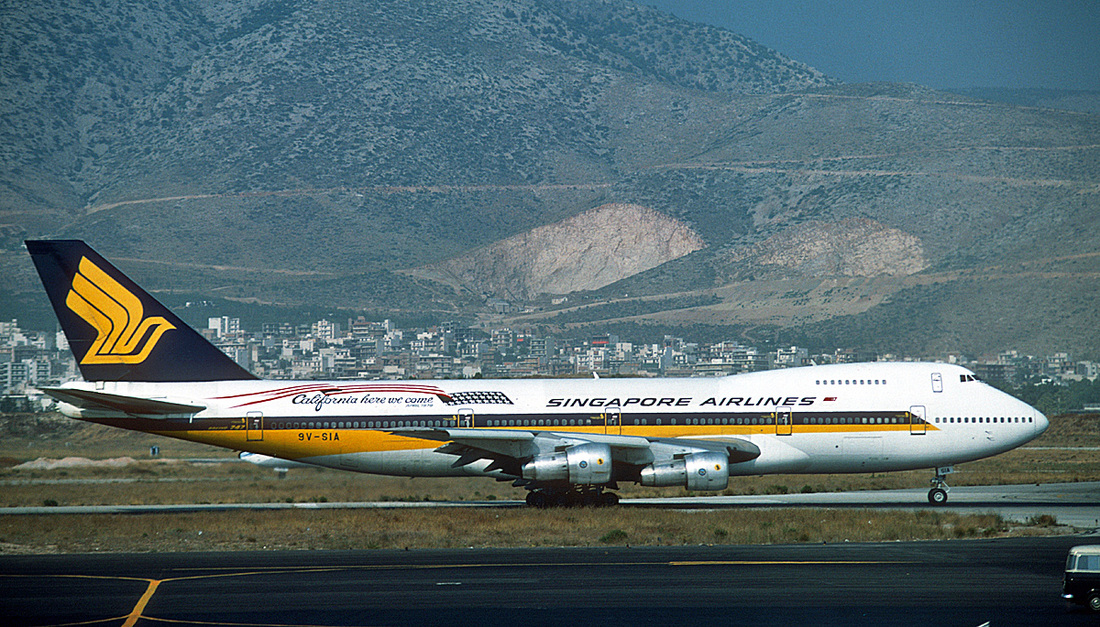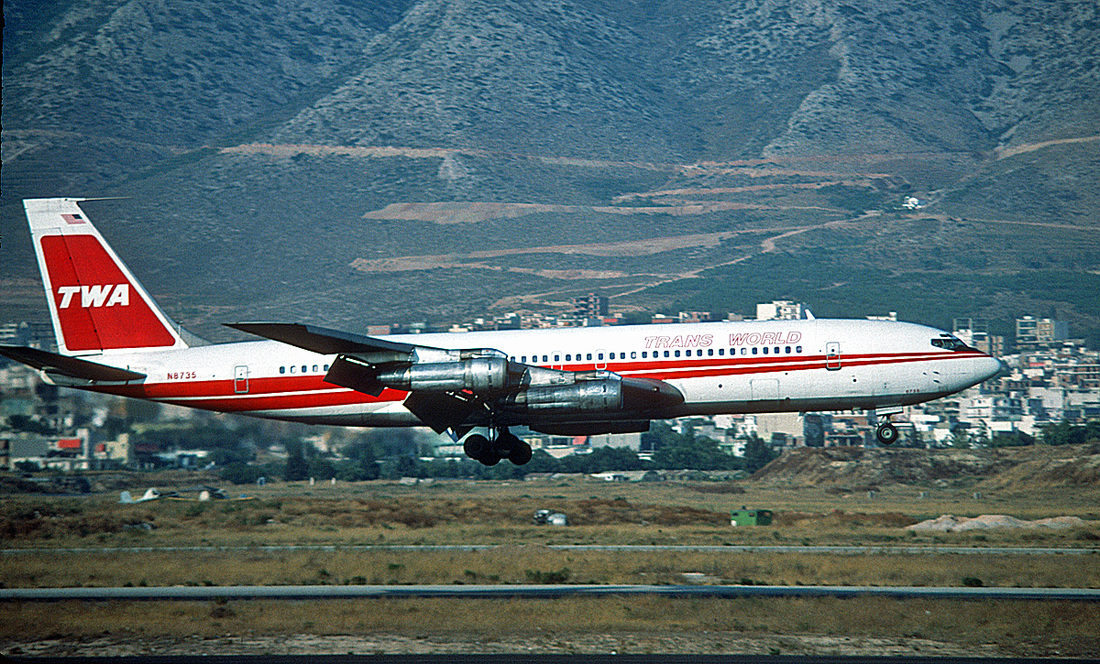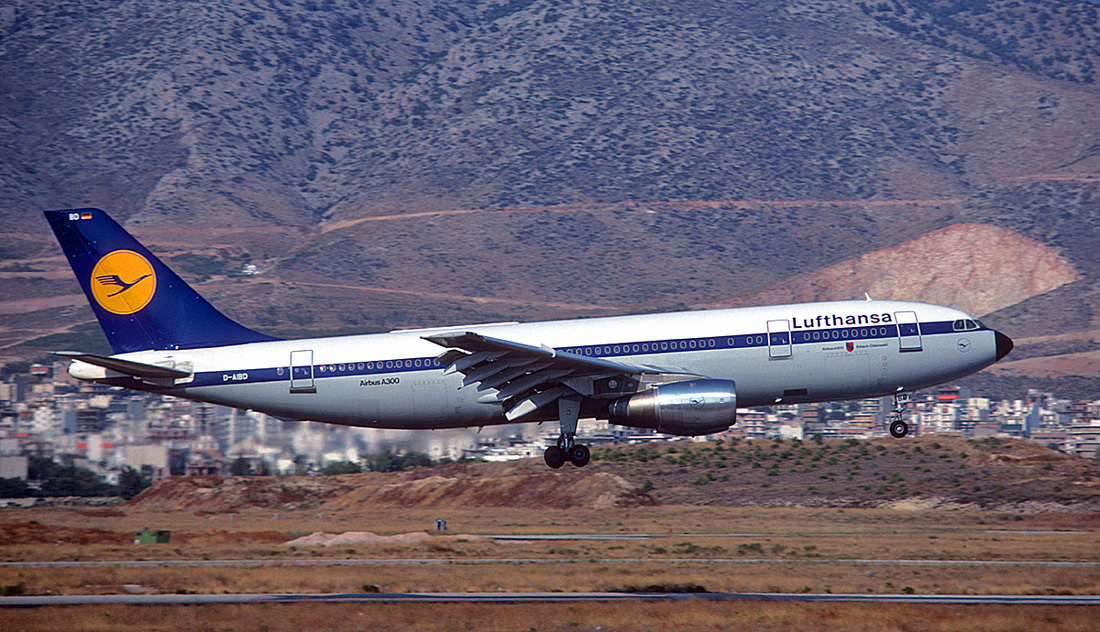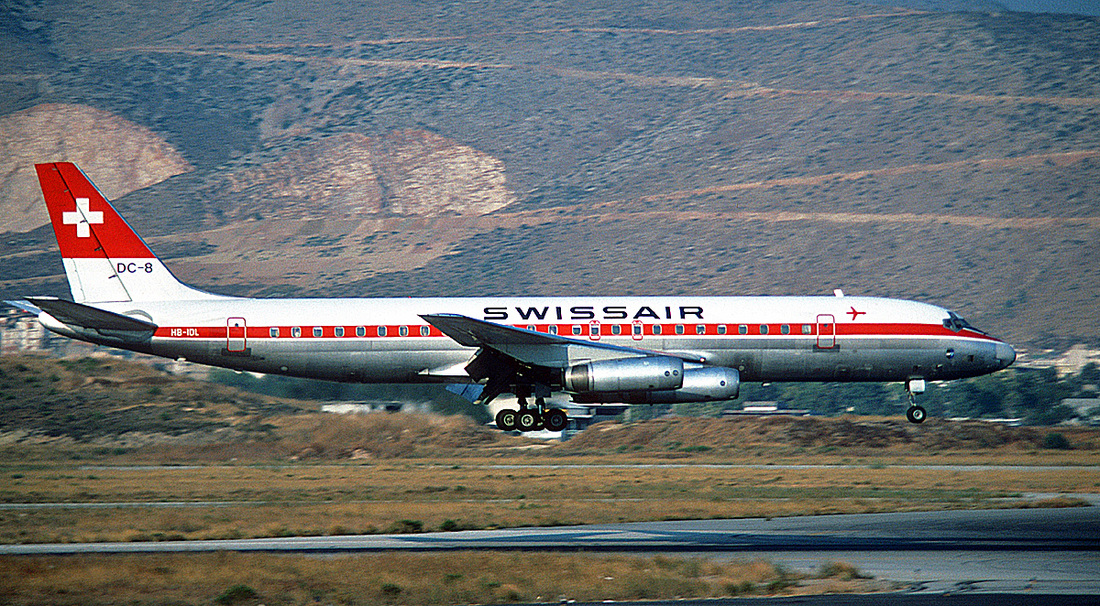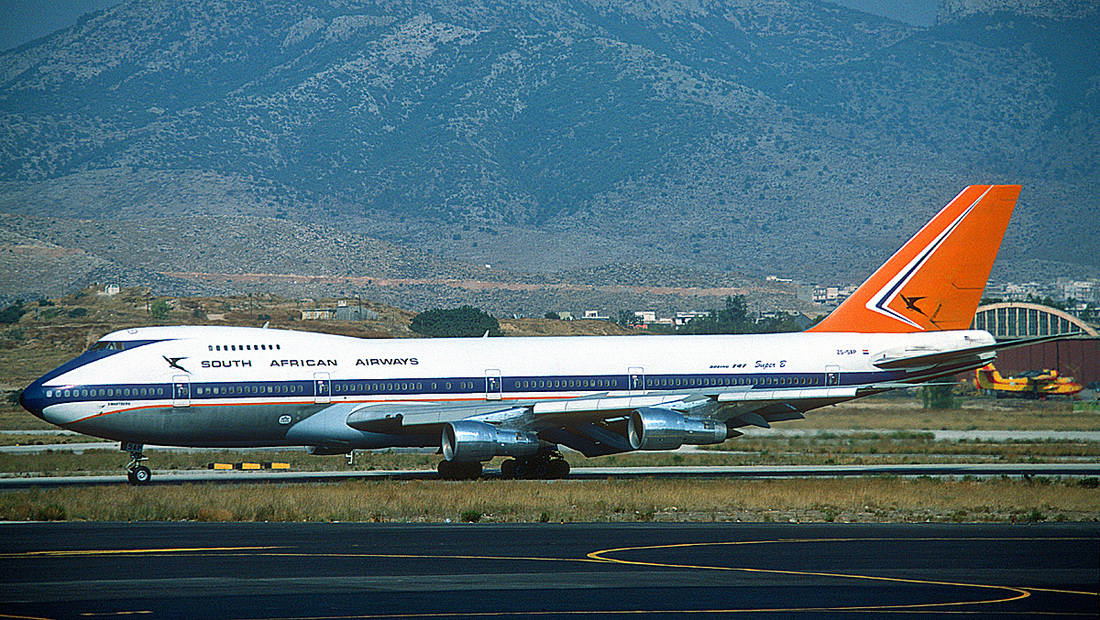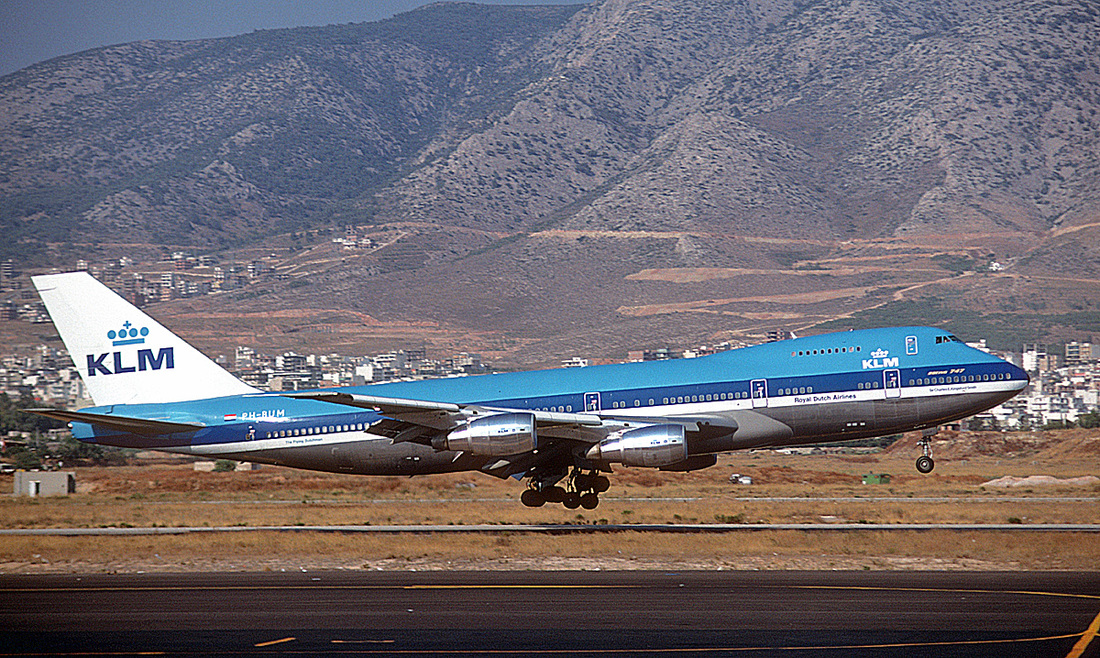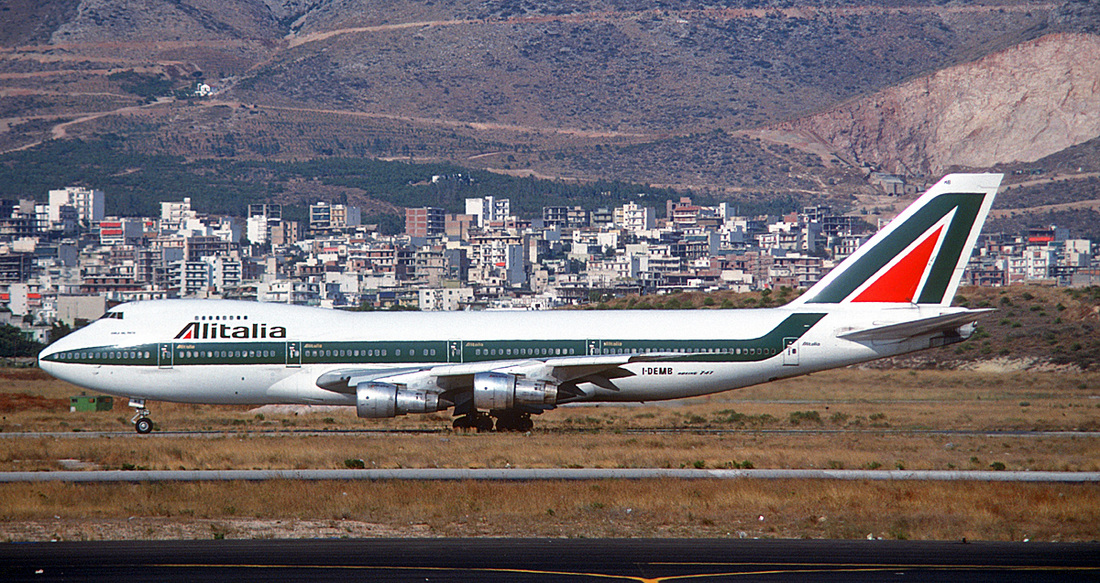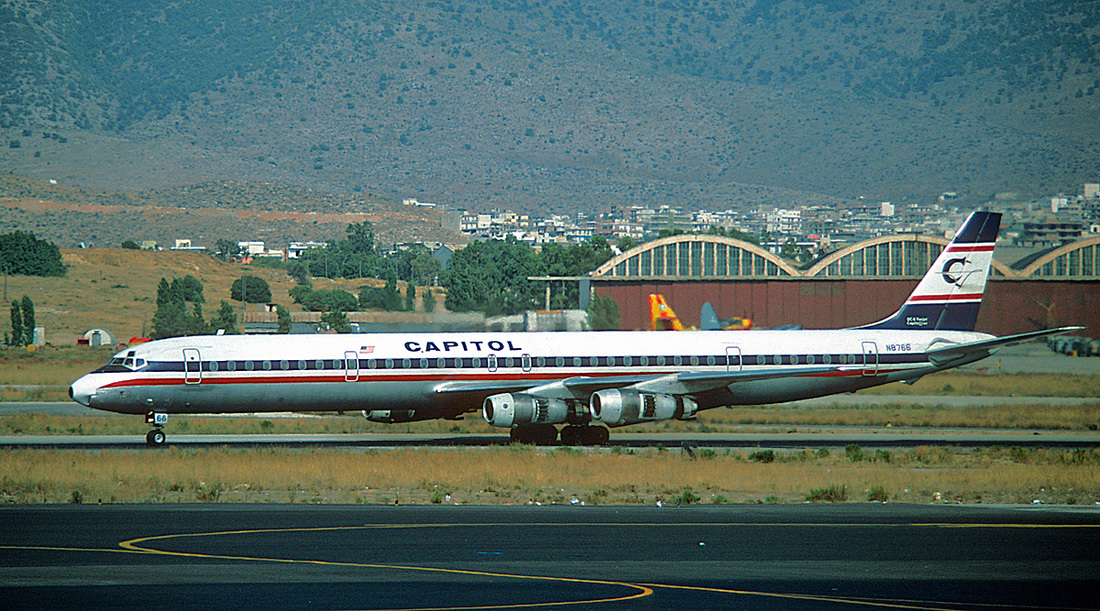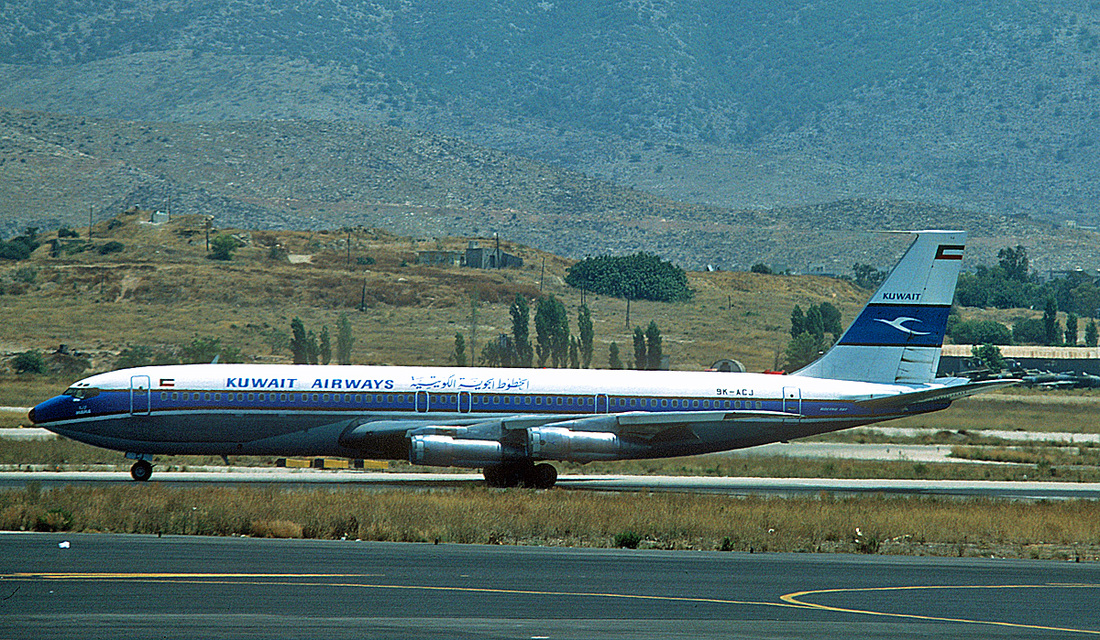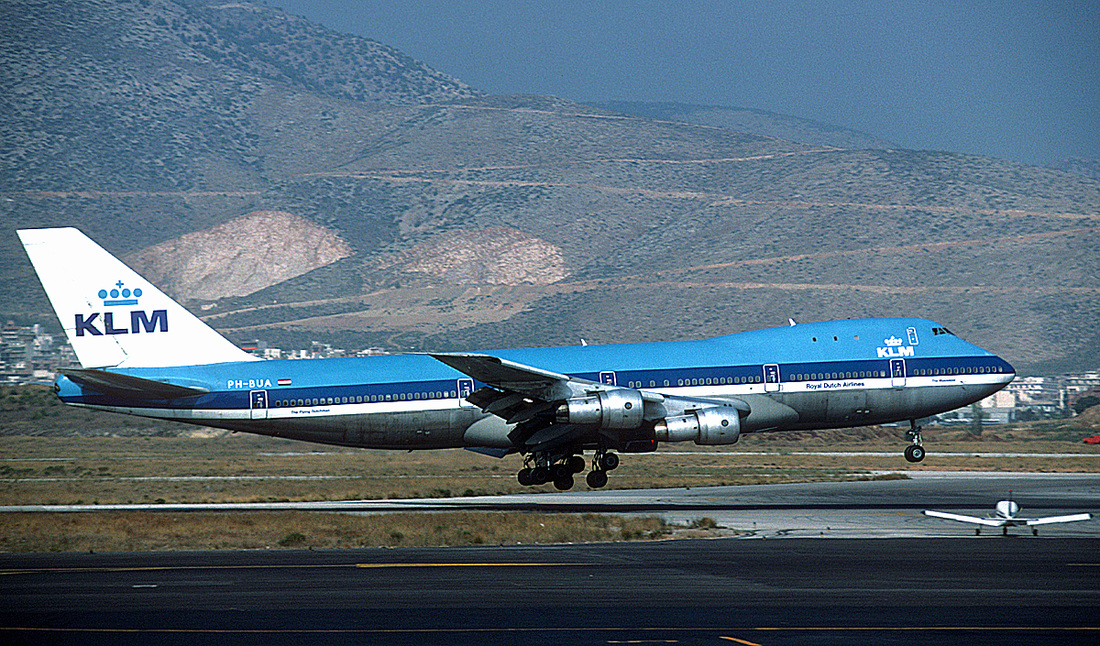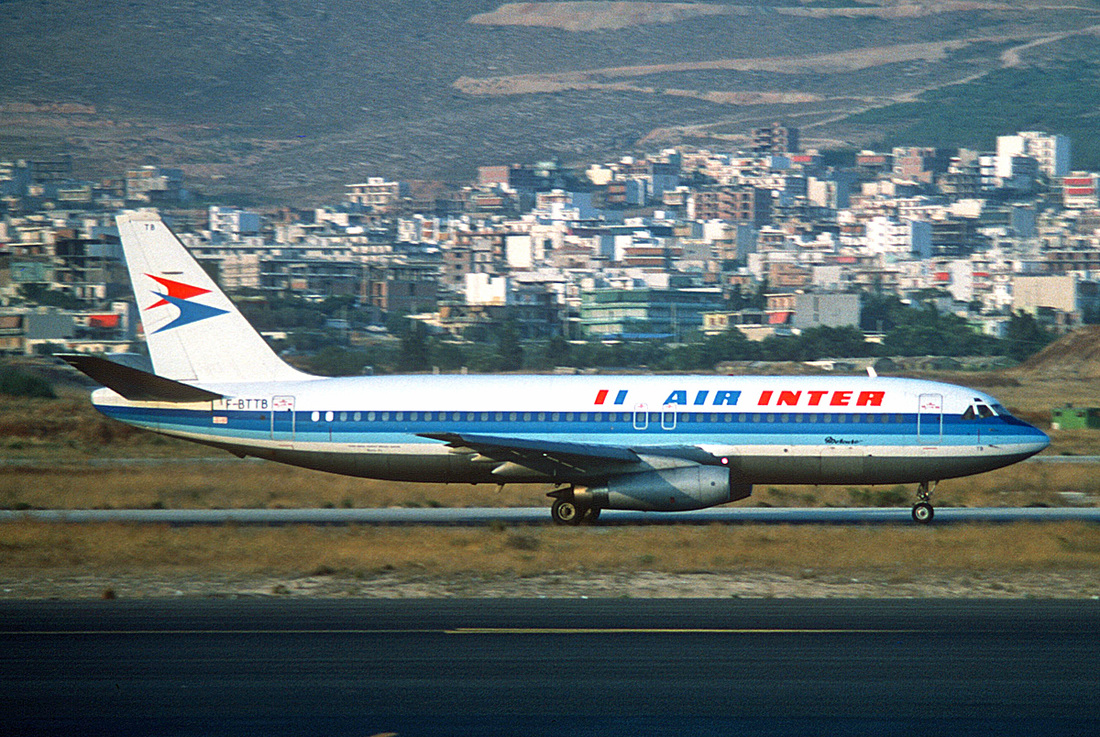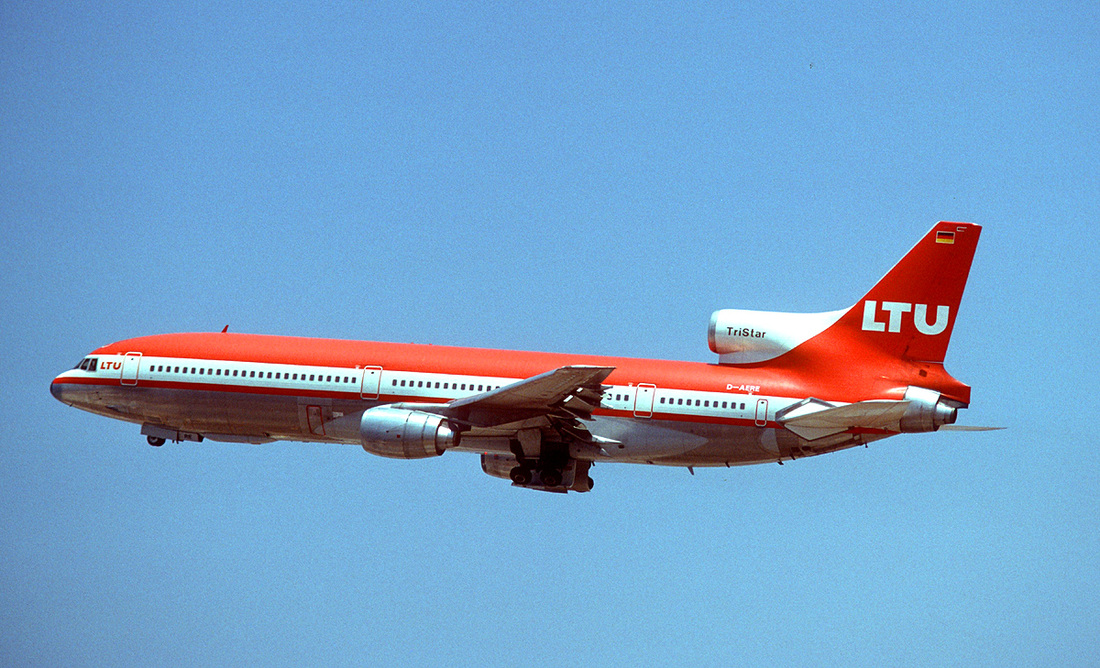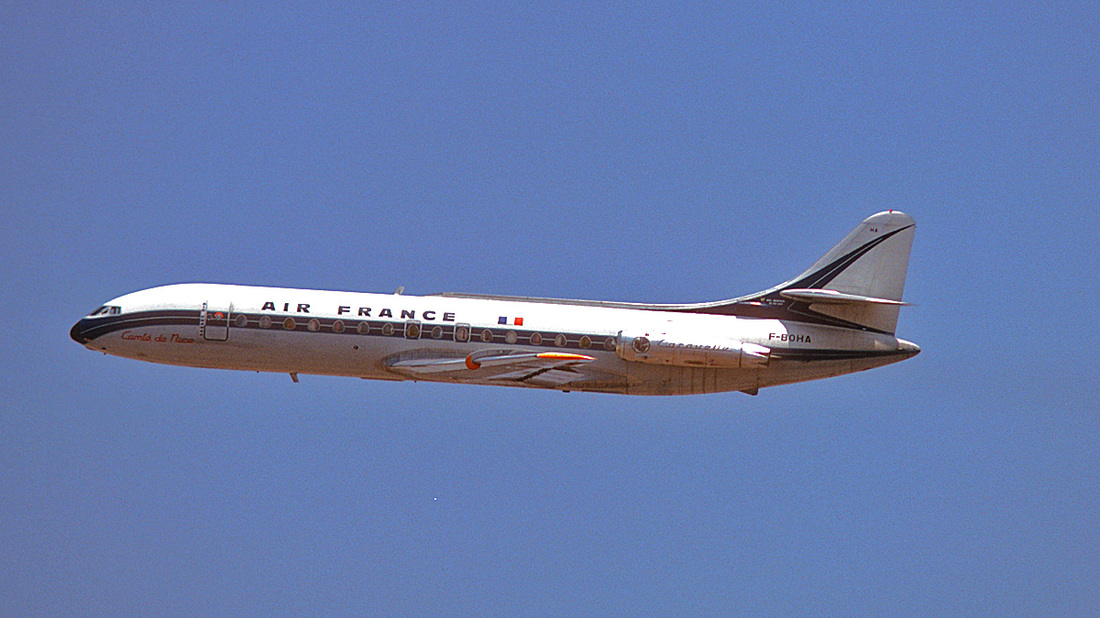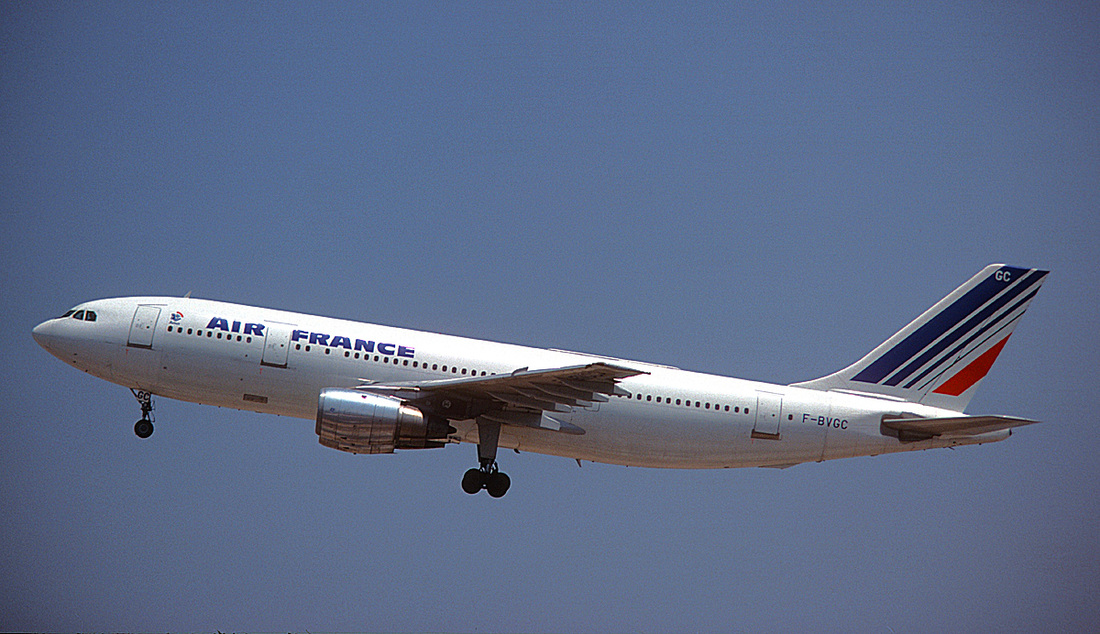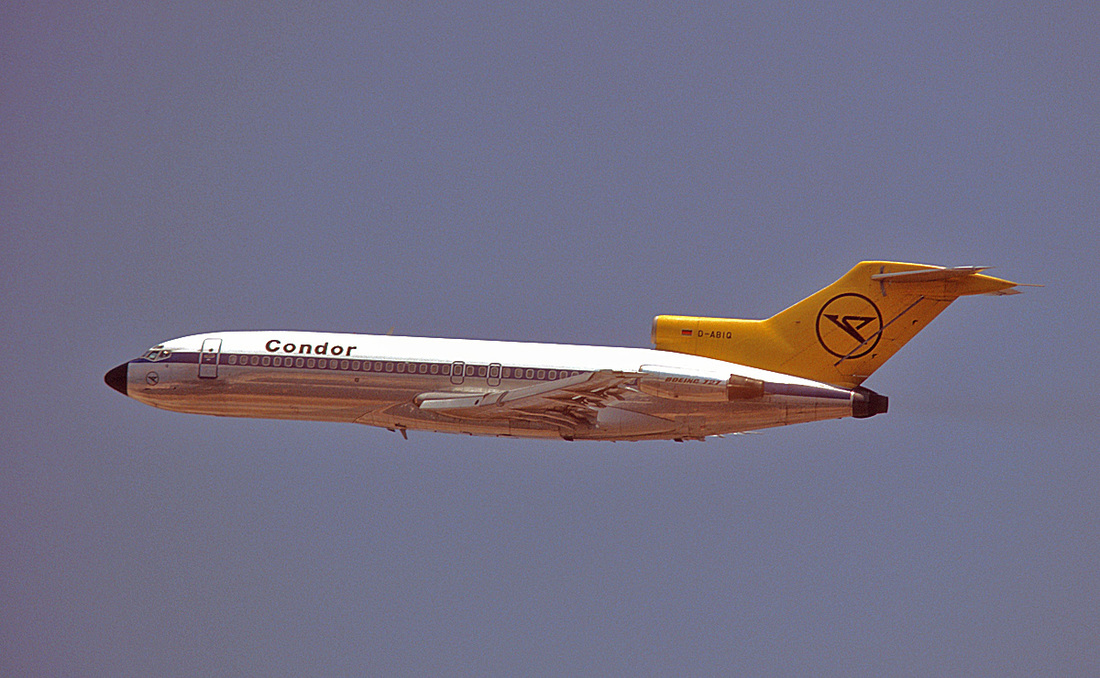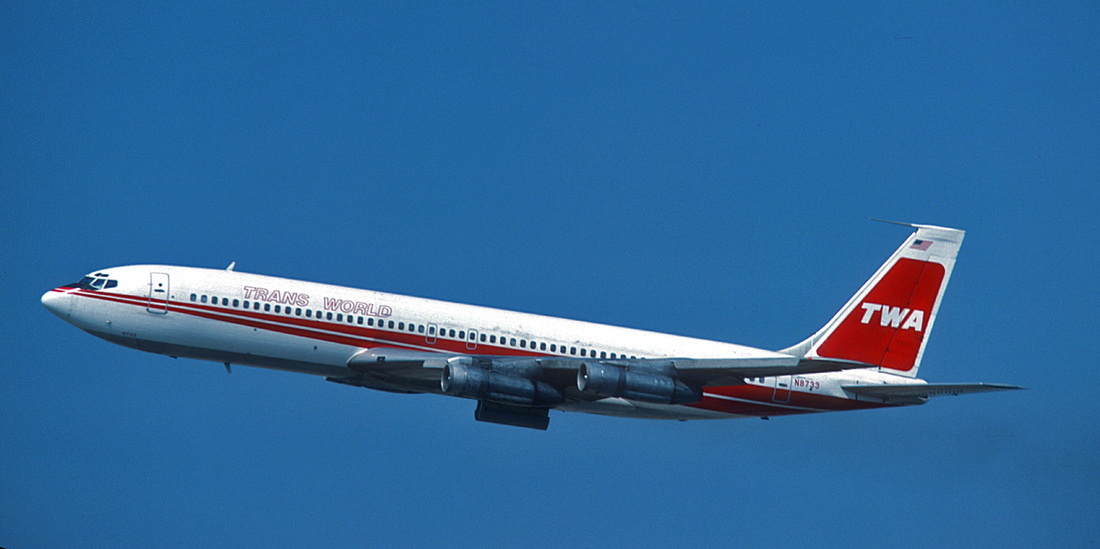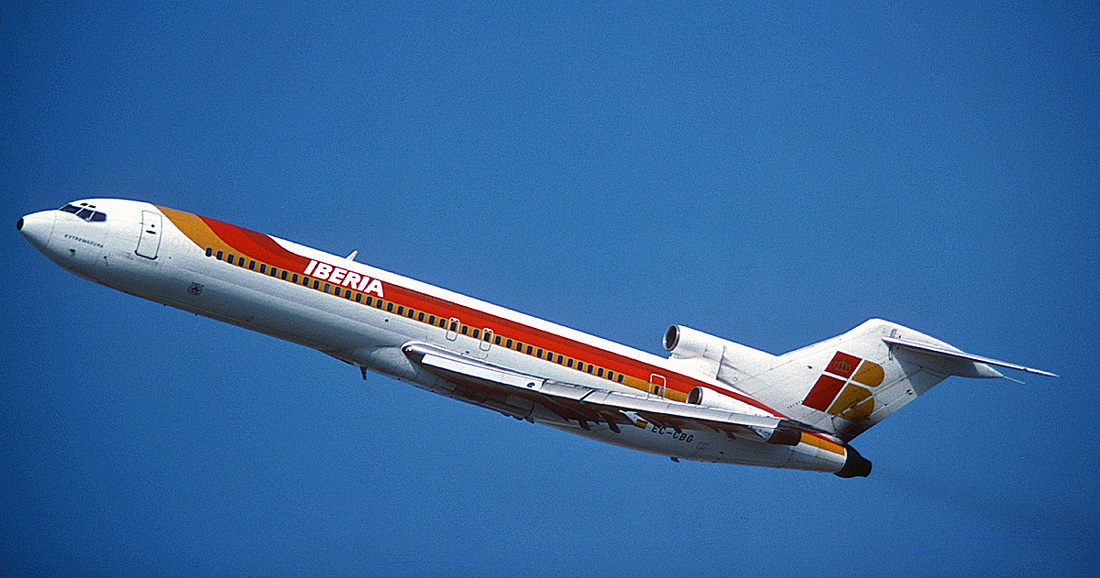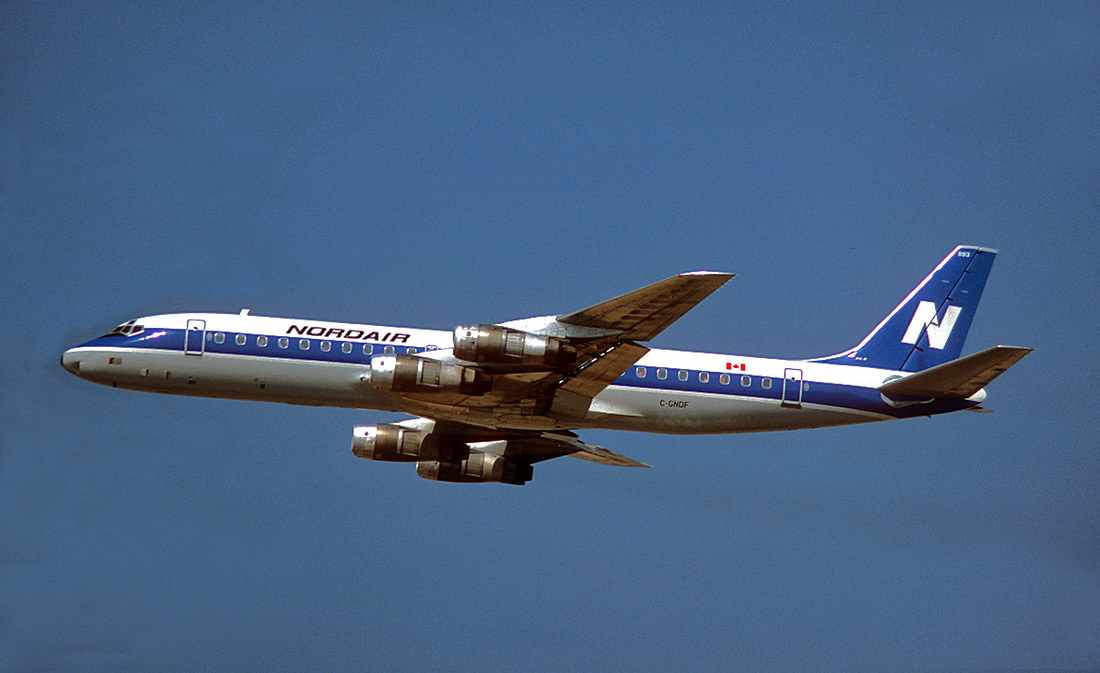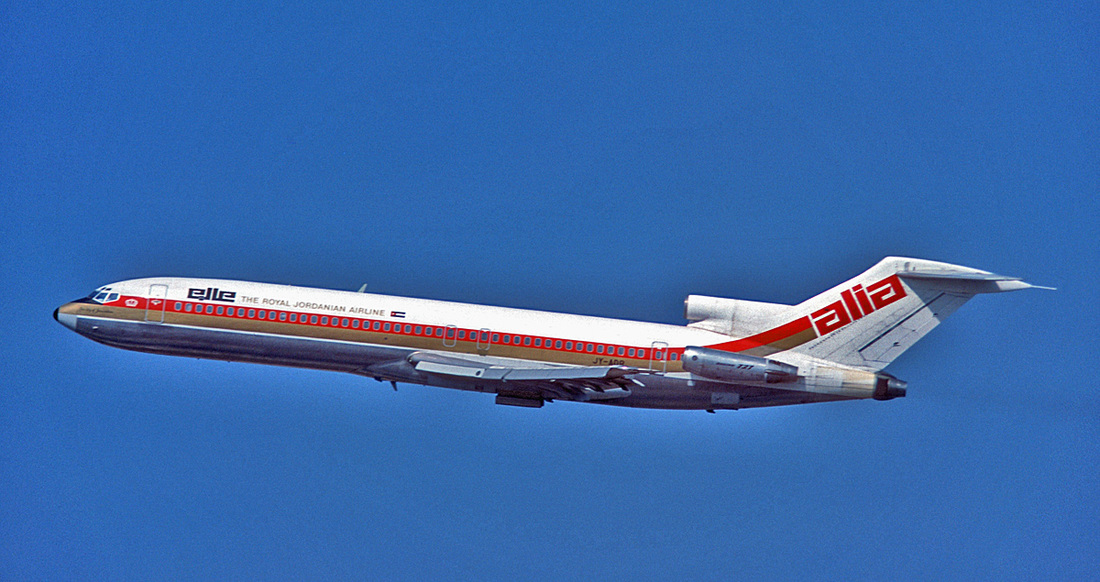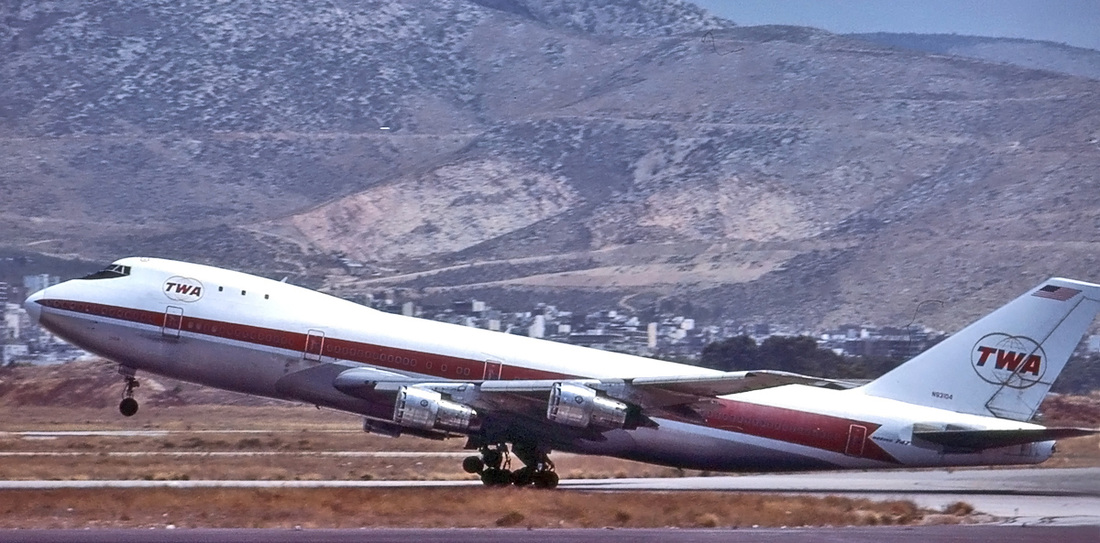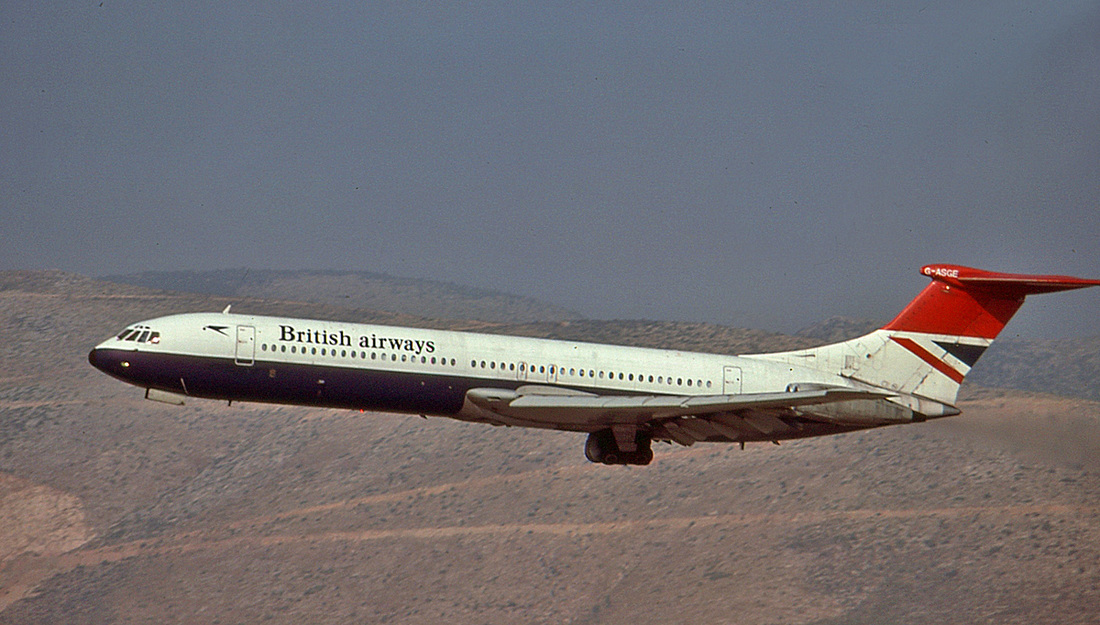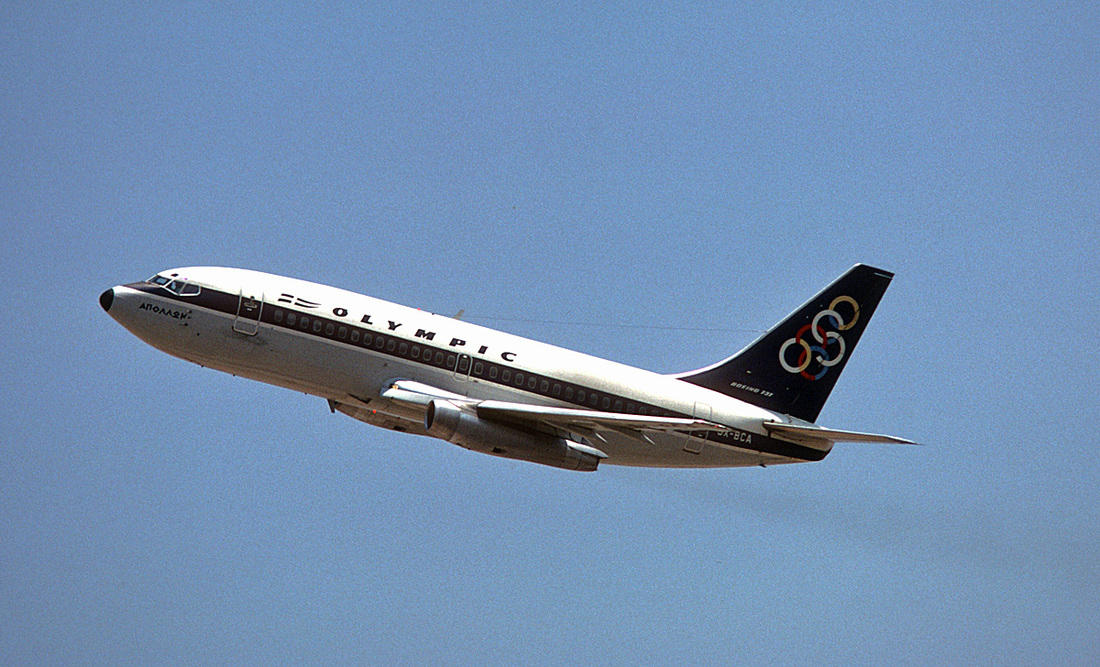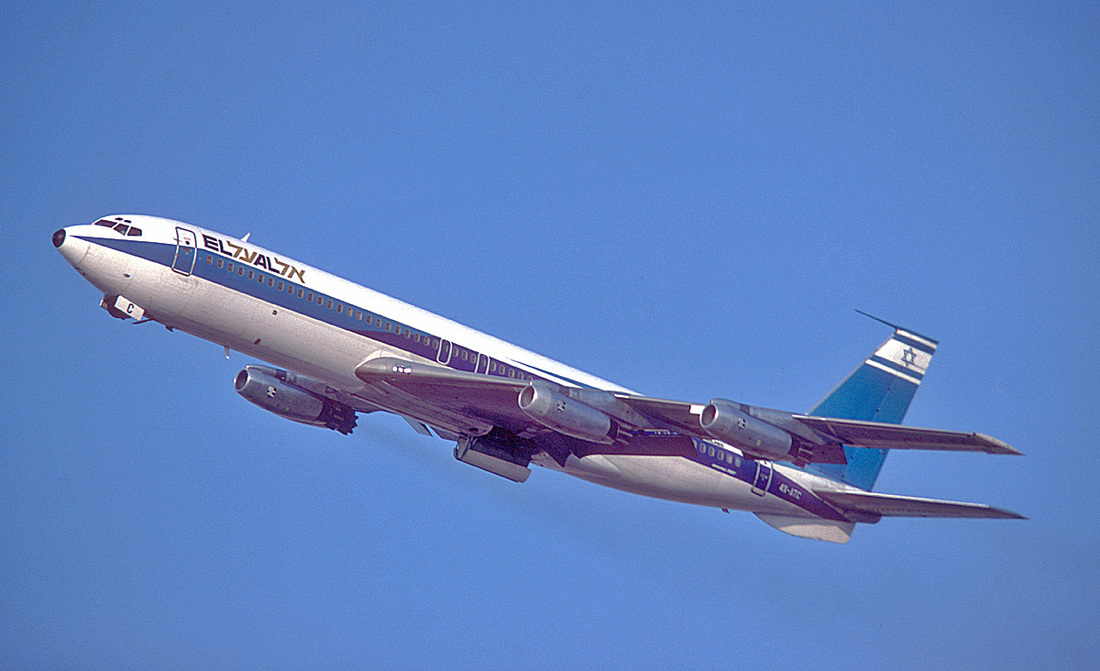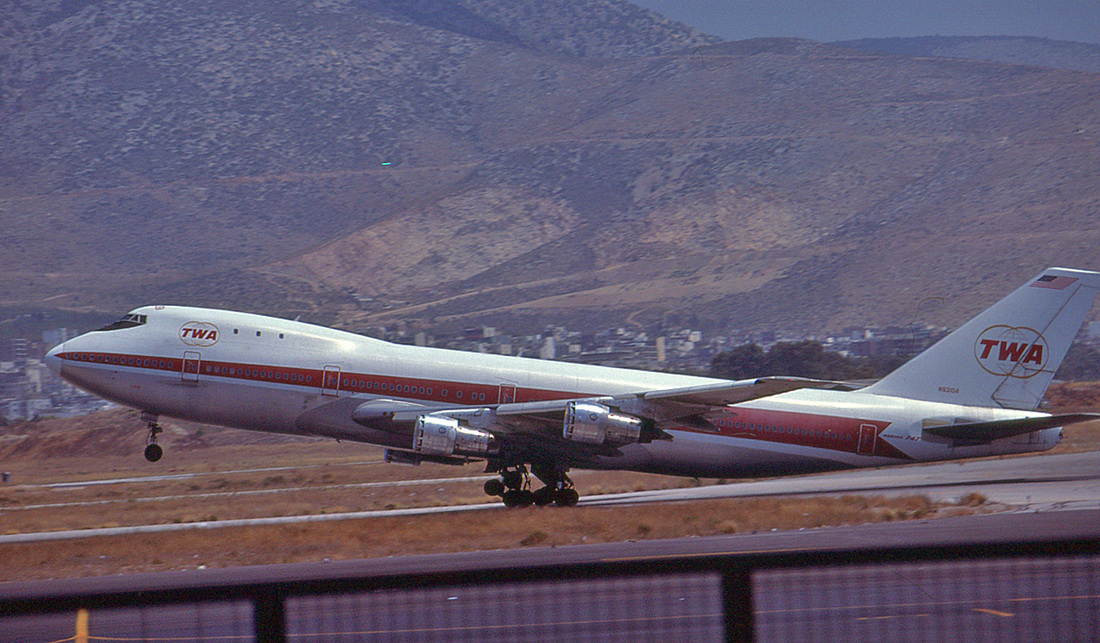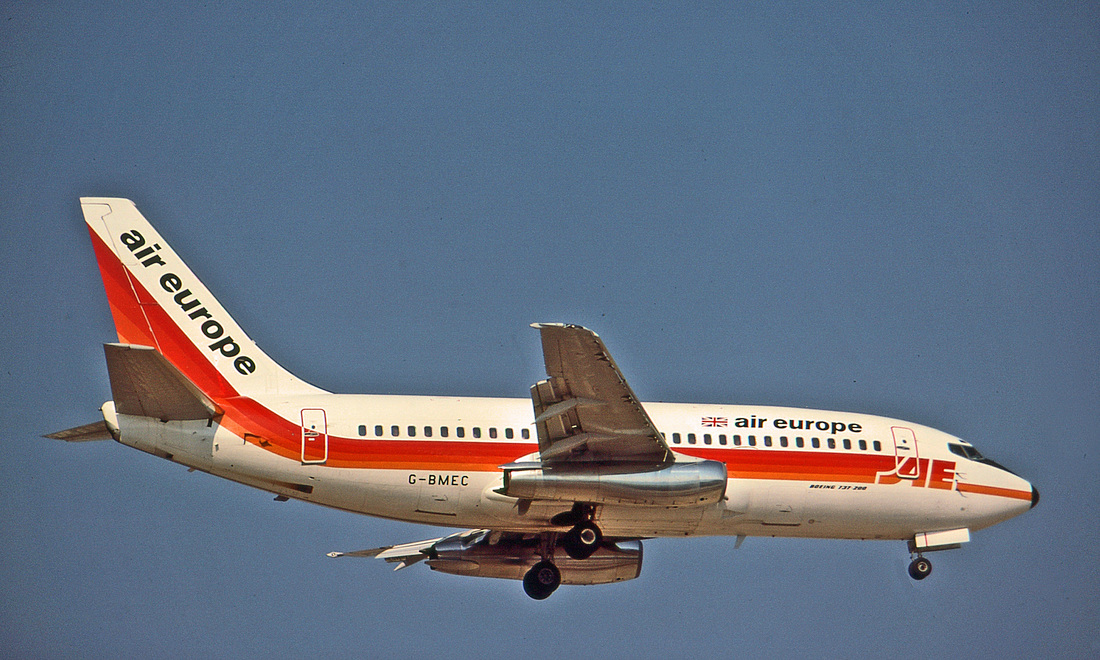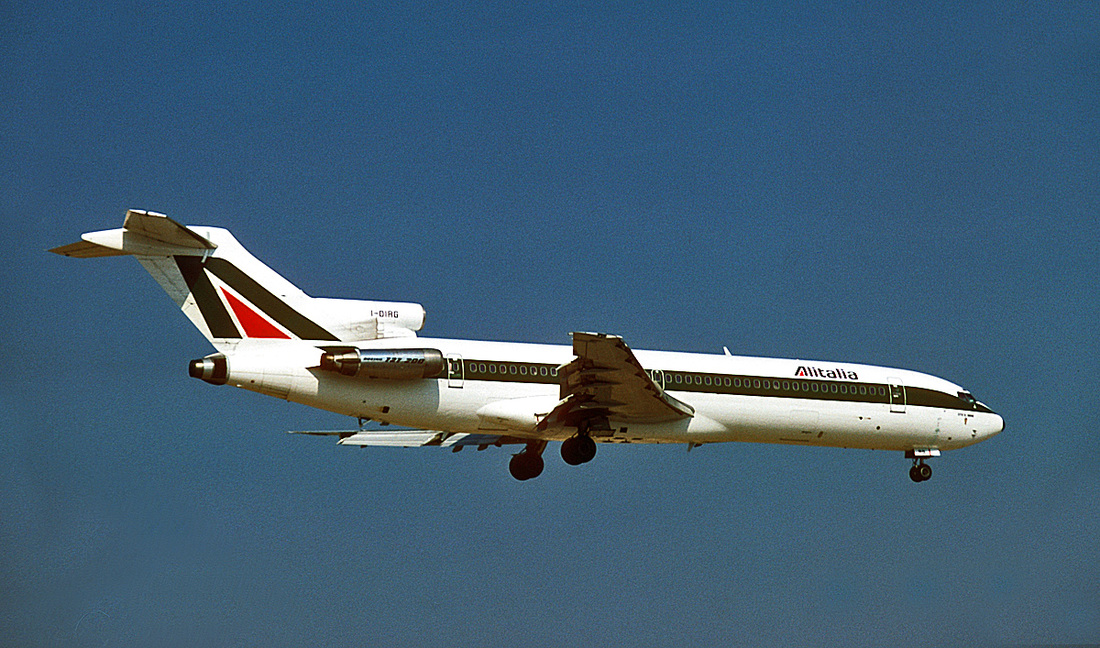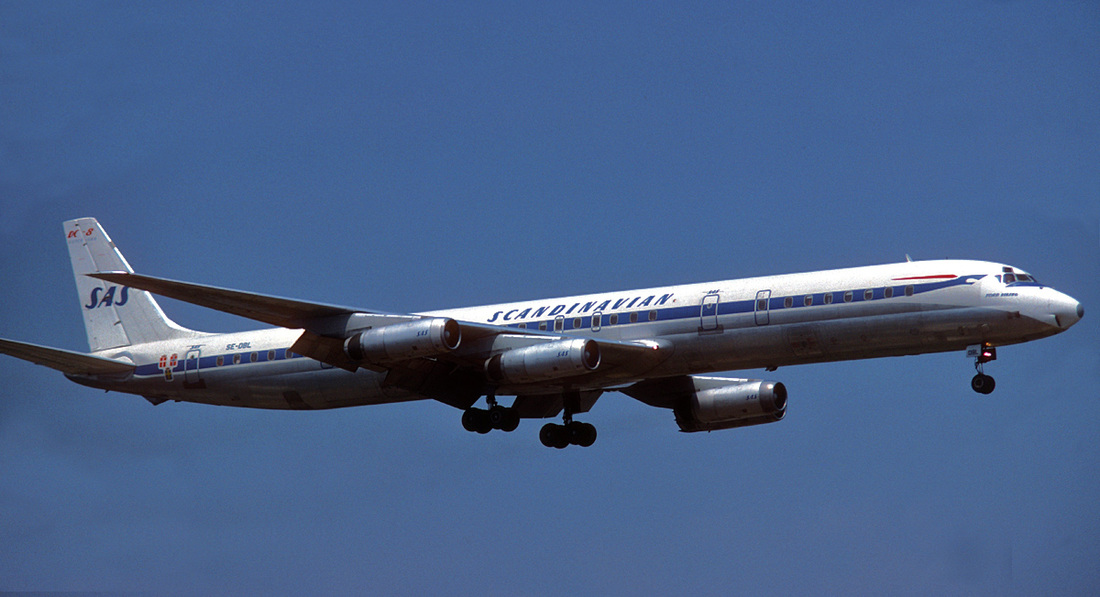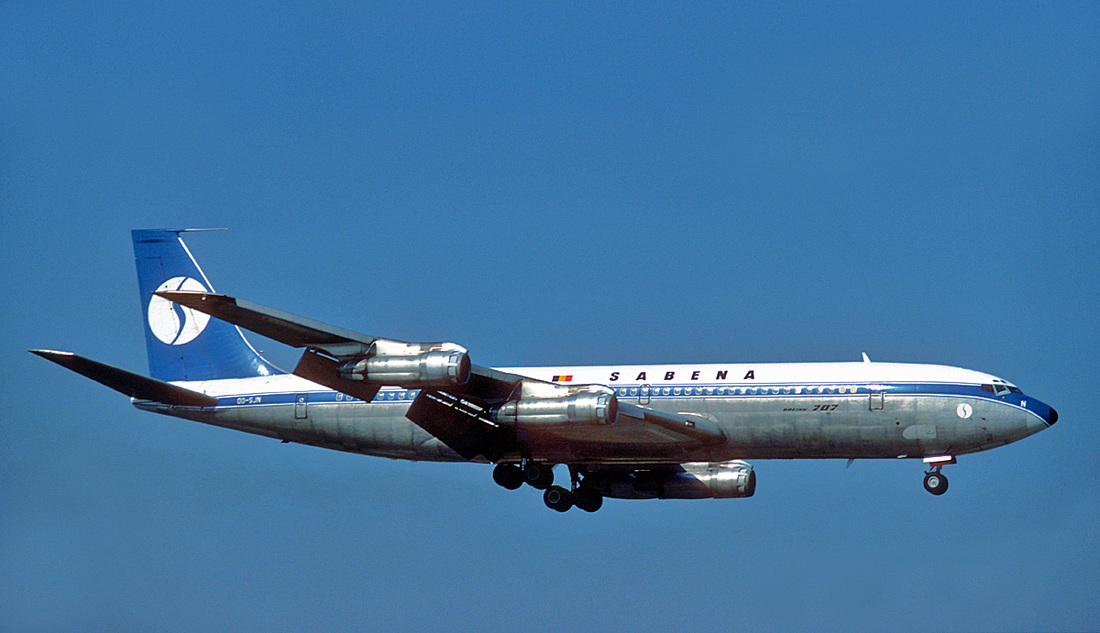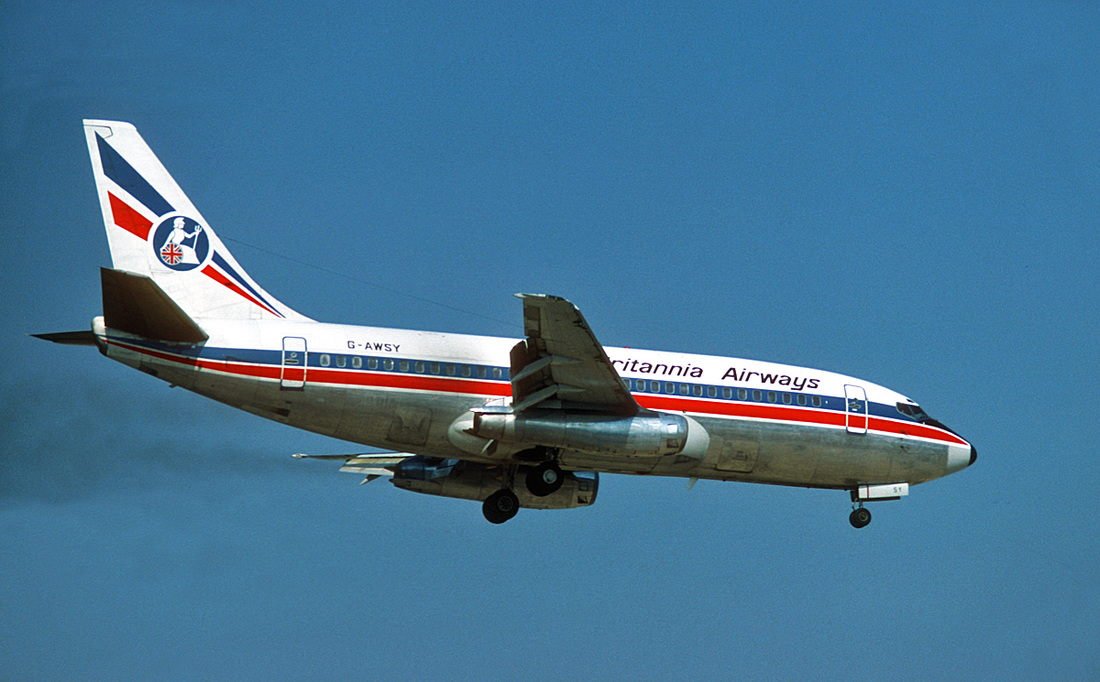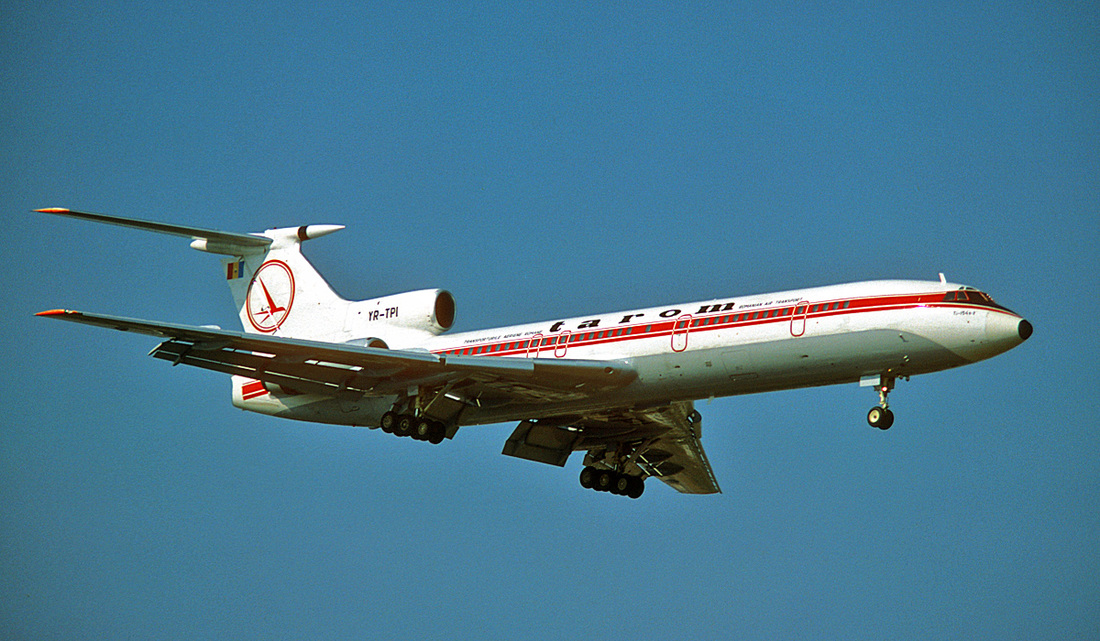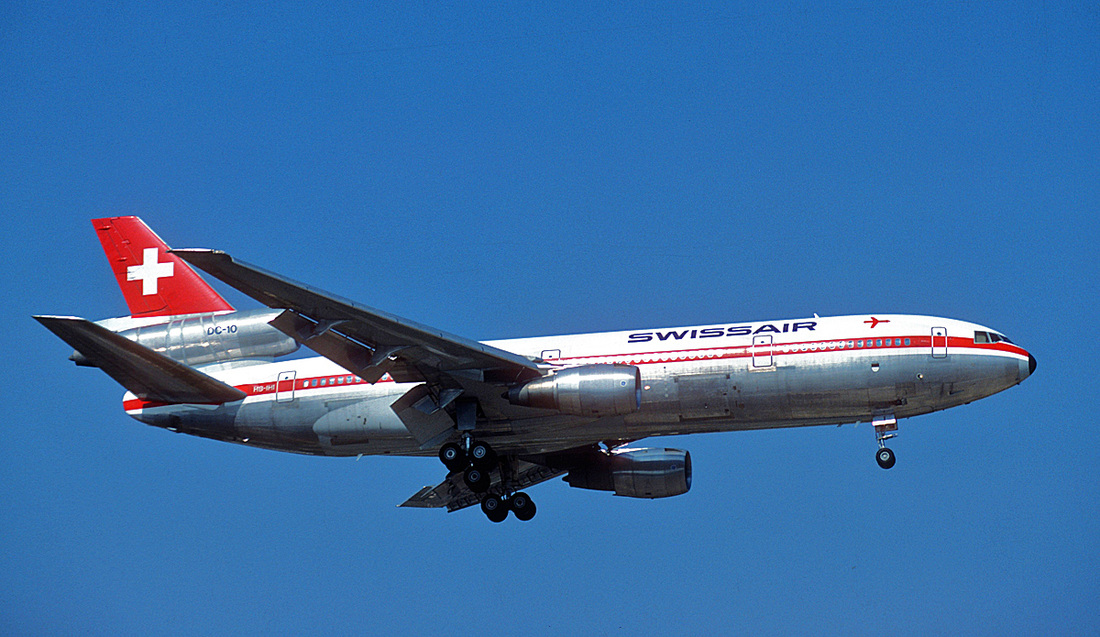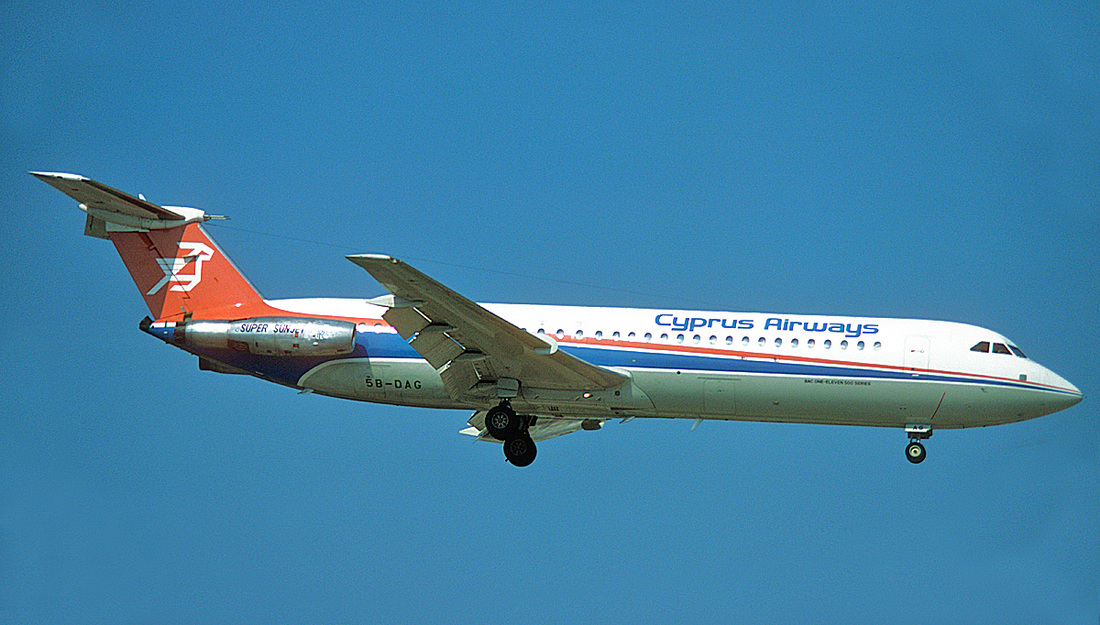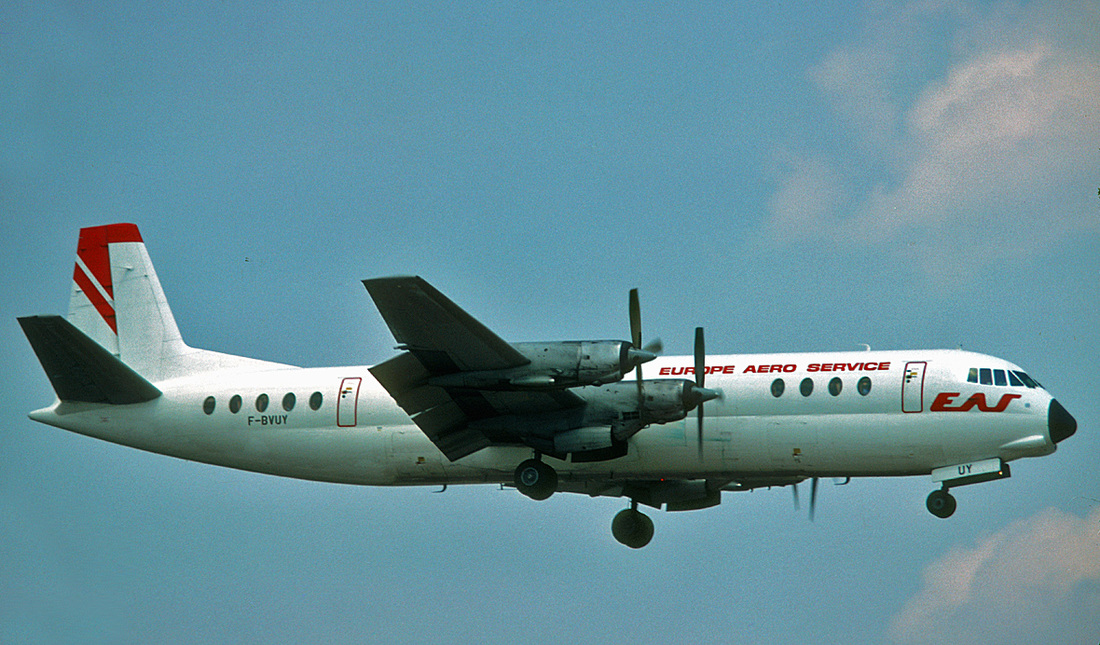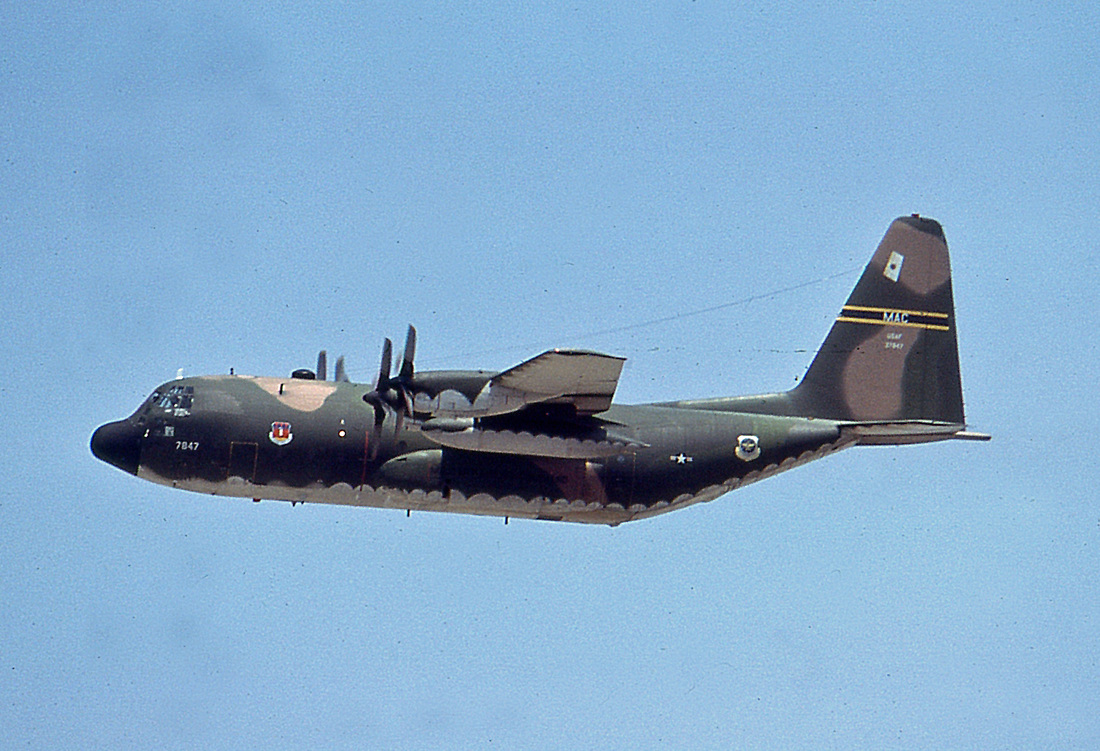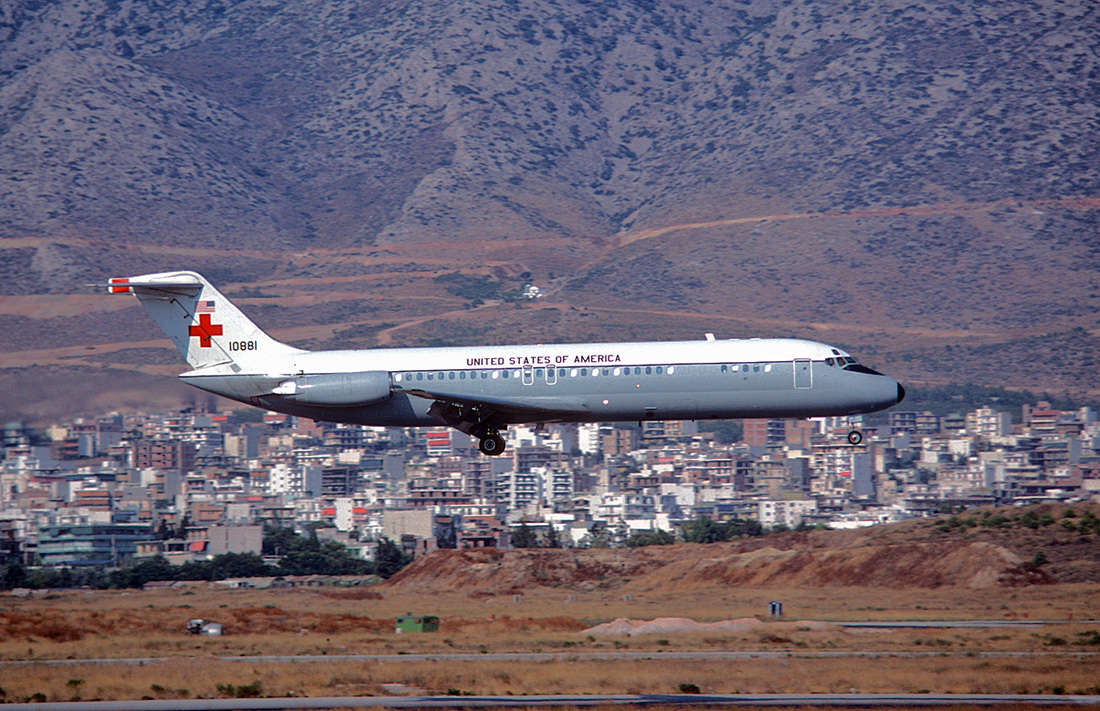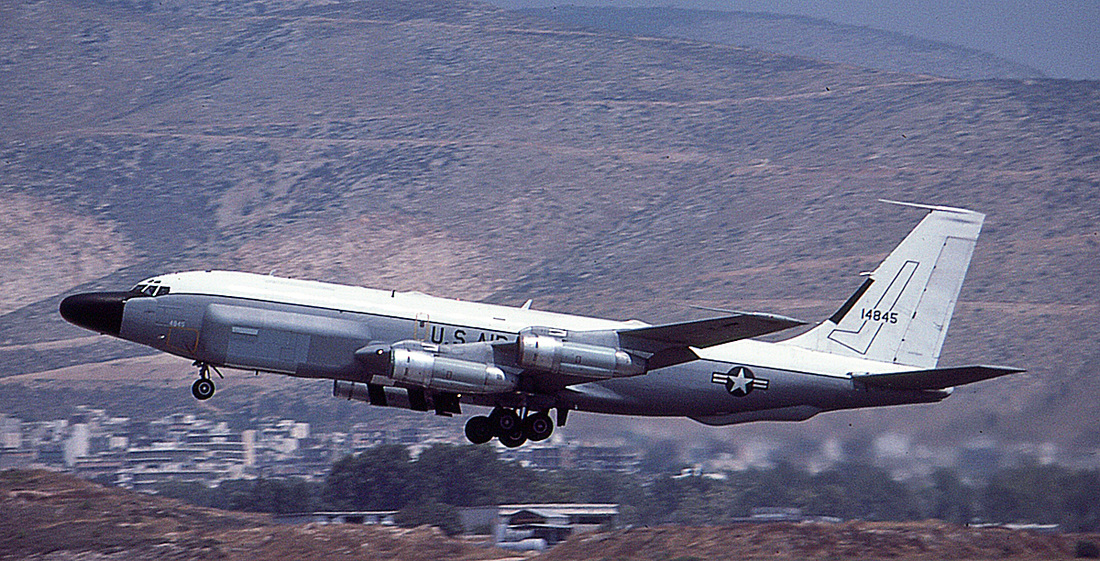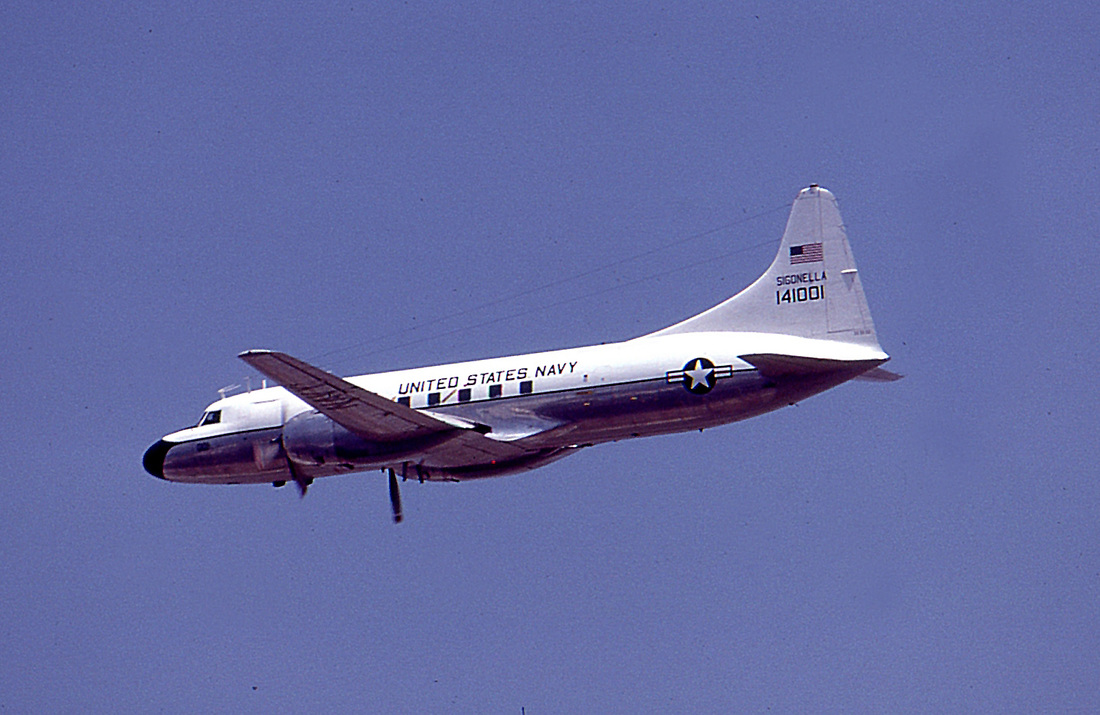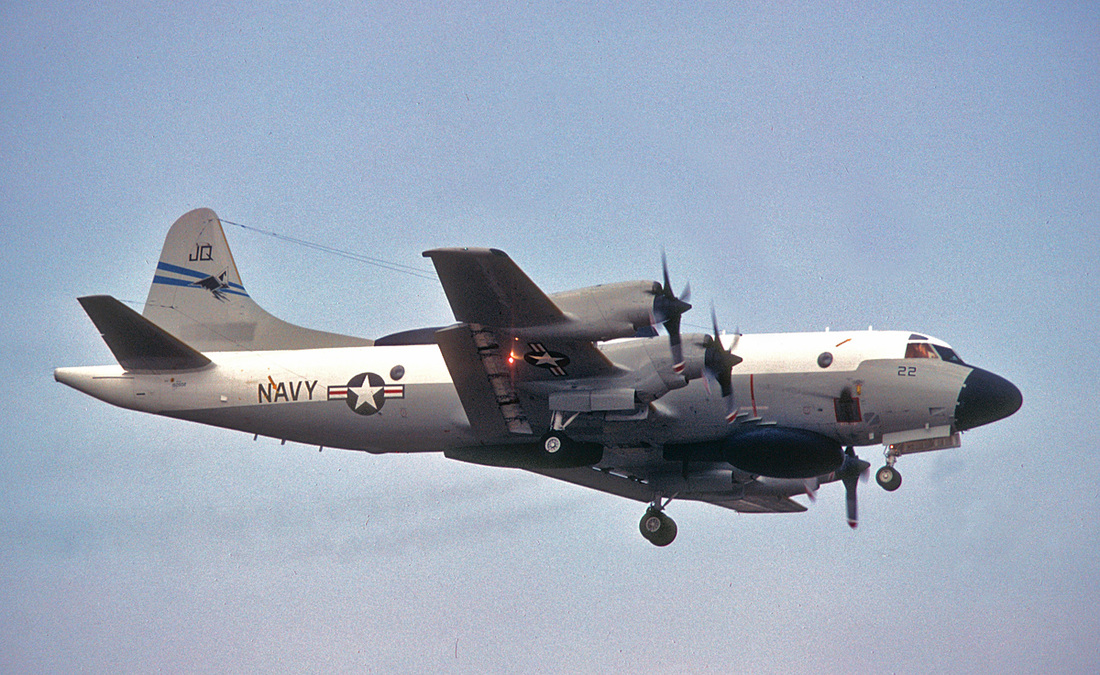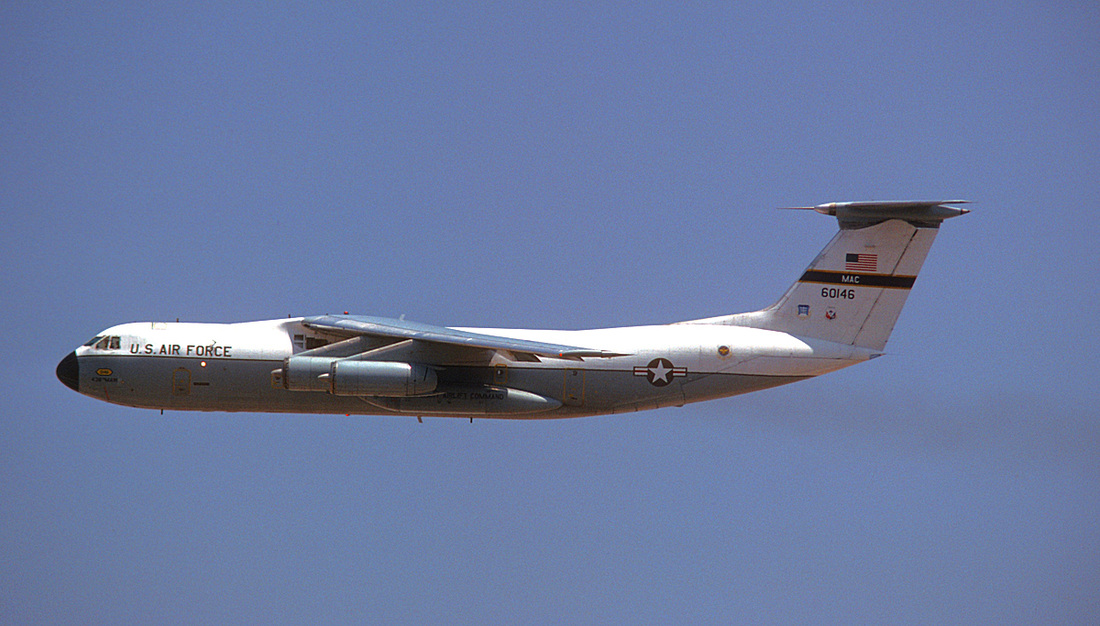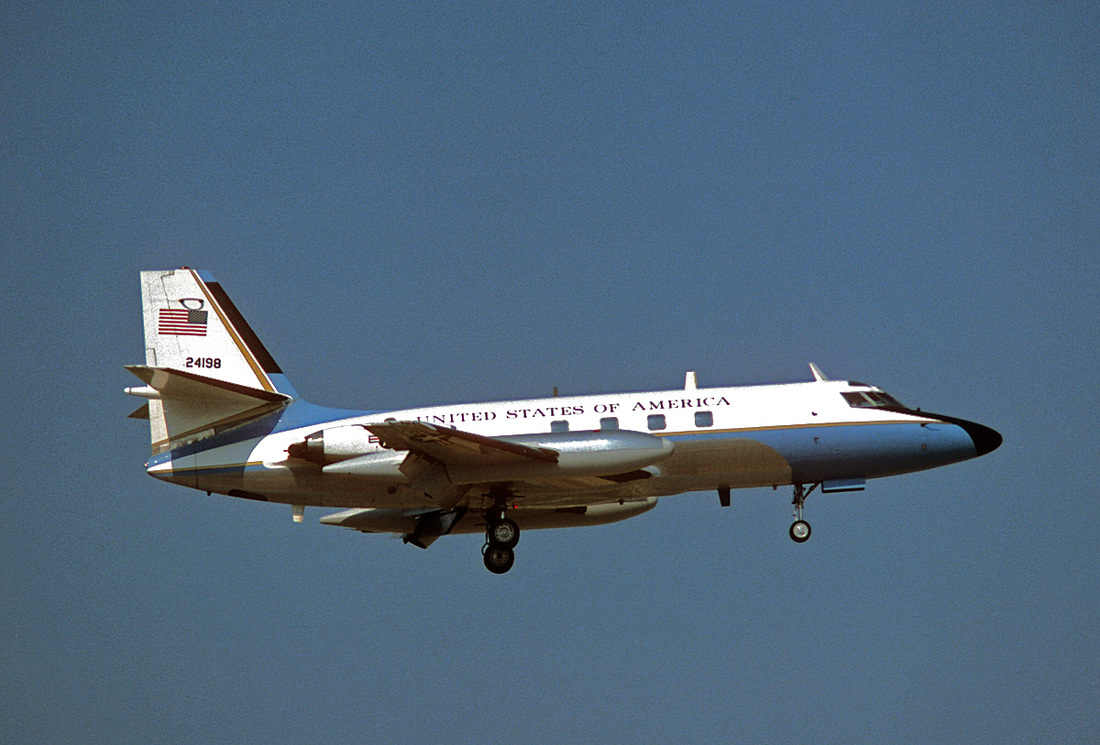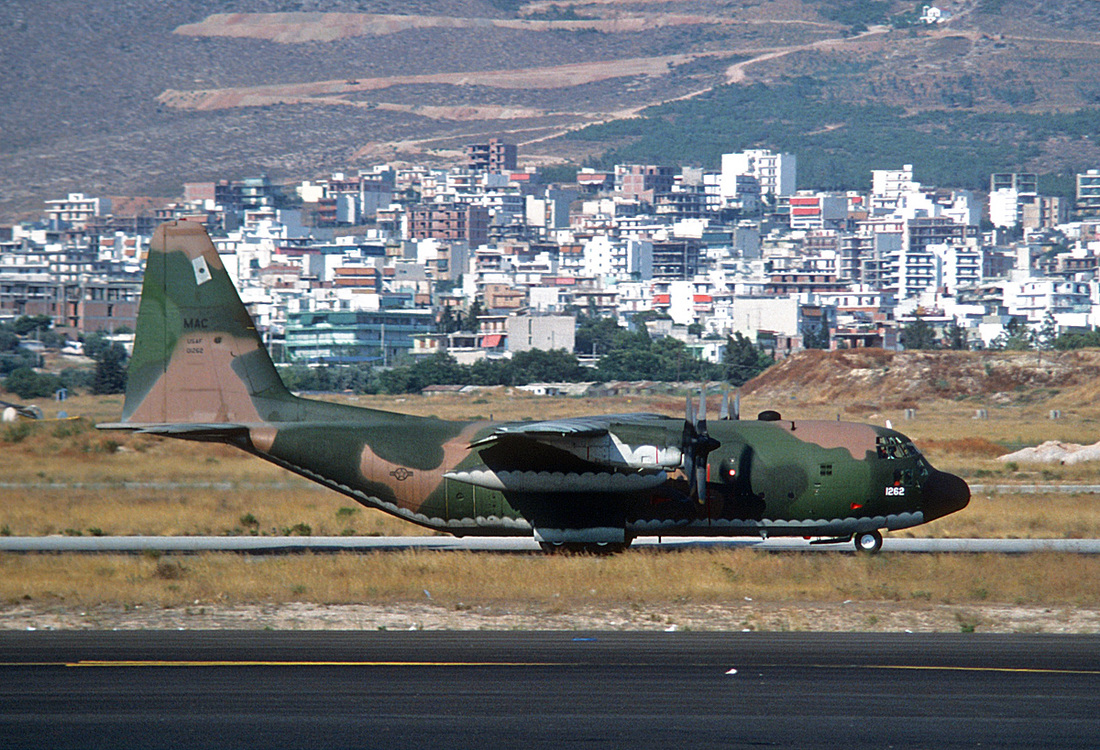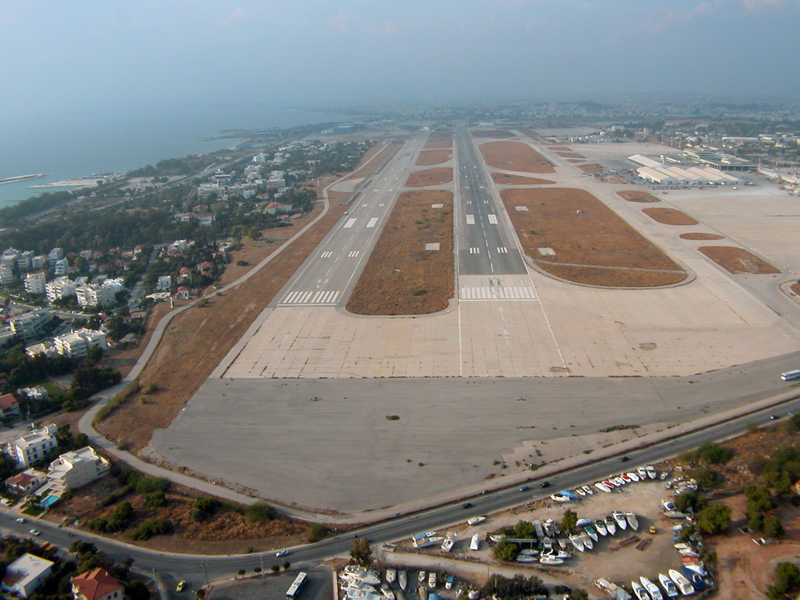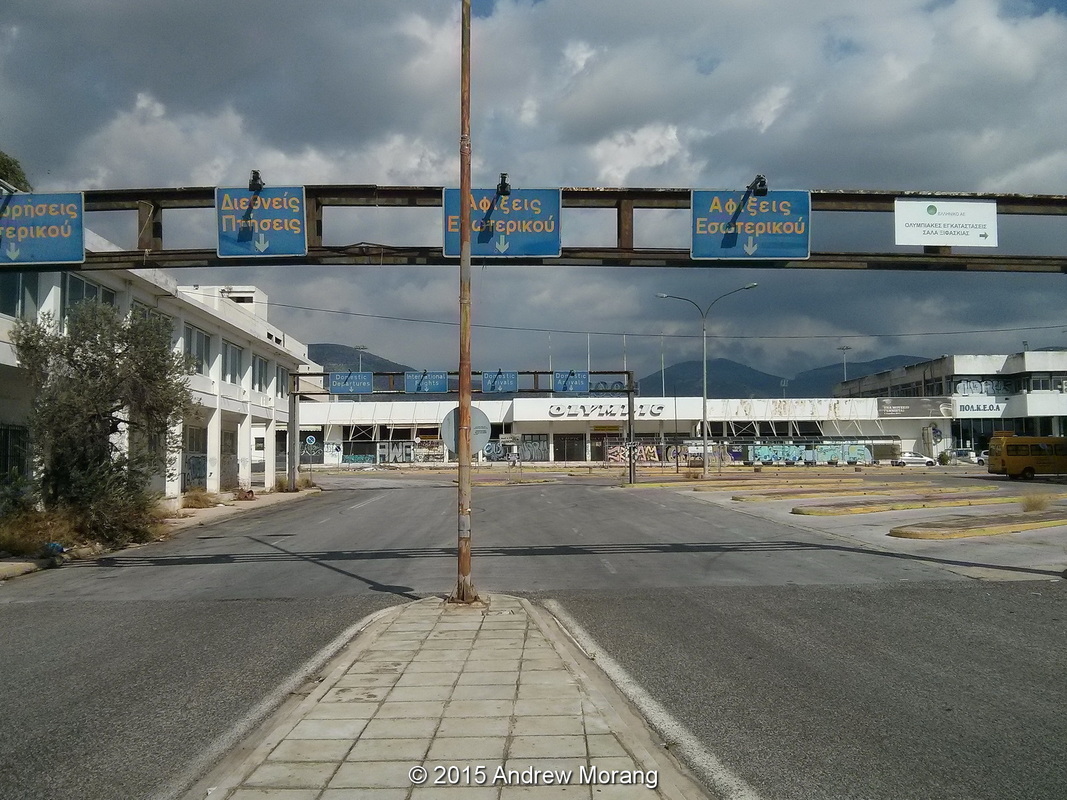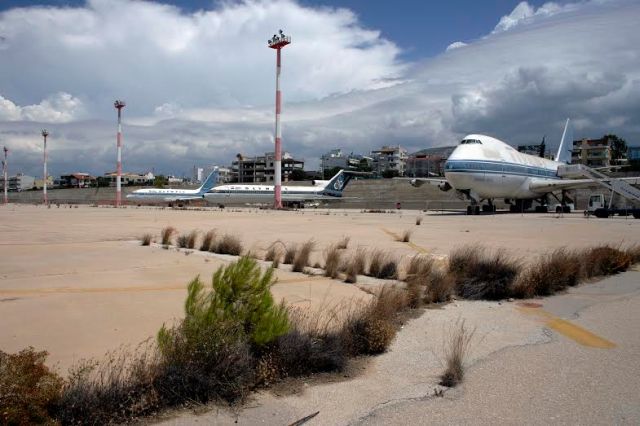Remember Athens Ellinikon Airport
A bustling airport in the late seventies
By Jan Koppen
|
In the summer of 1979, at the age of just 18 years, my aviation buddy Rob Hemelrijk and I traveled by train from Amsterdam to Athens to spot and photograph the bustling aviation activity at old Ellinikon airport. I just had bought my first camera, a Fujica 605N plus a second-hand telelens and made my first steps of photographing airliners. During these days, Kodakchrome K64 was the norm for aviation slides, and for some reason, excessive use of the color blue was the favorite of Mr. George Eastman of Kodak! My slides' quality output was meager, but nowadays we have photoshop, and with a lot of effort, I made the copy's presentable.
Ellinikon International Airport, sometimes spelled Hellinikon was the international airport of Athens, Greece for sixty years up until 2001, when it was replaced by the new Athens International Airport "Eleftherios Venizelos". The grounds of the airport are located 7 kilometres south of Athens and just west of Glyfada. It was named after the village of Elliniko, now a suburb of Athens. |
After 26 years of passenger service with Olympic, Boeing 737-284 SX-BCC was stored at Ellinikon in 2002. Eventually this 'Baby-Boeing' was sold in 2003 to a broker who in there turn sold her to Sriwijaya Air of Indonesia as PK-CJL. During 2011 she still operational and operating from Jakarta Soekarno Hatta airport.
|
"Hermes" seen here taxiing at Athens Ellinikon prior to departing on yet another flight. These were the days with the good, noisy and smoky -200's!".
First flight was June 21, 1978 and the delivery date to Olympic was June 30, 1978. The Greek airline sold this 'Baby-Boeing' 27 years later to Sriwijaya Air as PK-CJR. Presently this aircraft is stored at Jakarta-Cengkareng airport.
In the background two RC-135V's of the 6916th Security squadron providing electronic aerial surveillance of the eastern Mediterranean and the Middle-East.
First flight was June 21, 1978 and the delivery date to Olympic was June 30, 1978. The Greek airline sold this 'Baby-Boeing' 27 years later to Sriwijaya Air as PK-CJR. Presently this aircraft is stored at Jakarta-Cengkareng airport.
In the background two RC-135V's of the 6916th Security squadron providing electronic aerial surveillance of the eastern Mediterranean and the Middle-East.
|
History
The airport was built in 1938. The Nazis invaded Greece in 1941 and Kalamaki Airfield (as the site was then known) was used as a Luftwaffe air base during the occupation. After World War II, the Greek government allowed the United States to use the airport from 1945 until 1993. Known as Hassani Airport in 1945, it was used by the United States Army Air Forces as early as 1 October 1945, as a base of operations for Air Transport Command flights between Rome, Italy and points in the Middle East. By agreement with Greece, the USAF operated out of the airport for the next four decades. In 1988, Greece decided not to extend the arrangement and the USAF concluded its operations there in 1991. The airport was the base of operations by the Greek national carrier Olympic Airways and had two terminals: the West Terminal for Olympic Airways, and the East Terminal for all other carriers. In 1963, the Finnish star architect Eero Saarinen designed the East Terminal building. The airport is bounded in the west by beaches, in the south by the Glyfada Golf Club and the Ellinikon-Glyfada municipal boundary, and by residential area. Athens geographical position was identical for ferry flights, technical stops, refueling etc. The main runway was the 15L/33R and the secondary runway 15R/33L was mainly used as a taxiway for Olympic Airways’ aircrafts. Elliniko was one of the most popular airports for plane-spotters worldwide due to the rarity of its movements. |
"This is how you reached the smaller Greek Islands by air in these days!".
Shorts SC-7 Skyvan Mk.3 SX-BBO, named Isle of Skiathos was delivered new Olympic Aviation in 1969. The flying shoebox served with the Greek regional for 21 years before being cancelled from Greek register. From 1994 to 2006 the Skyvan was used by the Gotherburg Parachute Club until sold to the DRC as 9Q-CLD of Malu Aviaiton. Malu is operating this Skyvan from there Bukavu base. The plane damaged its nose-gear in an accident in Kasese, Maniema province in November or December 2010, but it got repaired and it was active again since September 2011. The Short SC.7 Skyvan is a 19-seat twin-turboprop aircraft manufactured by Short Brothers of Belfast, Northern Ireland. The Skyvan is a high wing, twin-engined all-metal monoplane with a mid-mounted tailplane and twin rudders. Construction started at Sydenham Airport in 1960, and the prototype first flew on 17 January 1963. The Skyvan is an all-metal, high-wing monoplane, with a braced, high aspect ratio wing and an unpressurised, square-section fuselage. In 1968, production switched to the Skyvan Series 3 aircraft, which replaced the original engines with Garrett AiResearch TPE331 turboprops. A total of 153 Skyvan's was produced before production ended in 1986. The Skyvan is affectionately called "the shed" by pilots and crew. |
"NAMC YS-11 SX-BBH takes a break between operations".
SX-BBH was purchased from NAMC in 1970 and named Isle of Ithaca. During 1981 she was transferred to the Hellenic Air Forces. Her military career ended in 1995 and presently she is preserved at the heritage park of Elefsina AFB.
The NAMC YS-11 is a turboprop airliner built by a Japanese consortium, the Nihon Aircraft Manufacturing Corporation. In the mid-to-late 1950s, the Japanese Ministry of International Trade and Industry identified a requirement for a short-haul airliner to replace Douglas DC-3s flying on Japan's domestic routes, and encouraged companies in Japan's aircraft industry to collaborate to develop and produce the new airliner. A joint venture between Mitsubishi Heavy Industries, Kawasaki Heavy Industries, Fuji Heavy Industries (now better known as the parent company of automobile manufacturer Subaru), Shin Meiwa, Showa Aircraft Industry Company and Japan Aircraft Industry Company was set up in 1957, being formalised as the Nihon Aeroplane Manufacturing Company (NAMC) in 1959.
SX-BBH was purchased from NAMC in 1970 and named Isle of Ithaca. During 1981 she was transferred to the Hellenic Air Forces. Her military career ended in 1995 and presently she is preserved at the heritage park of Elefsina AFB.
The NAMC YS-11 is a turboprop airliner built by a Japanese consortium, the Nihon Aircraft Manufacturing Corporation. In the mid-to-late 1950s, the Japanese Ministry of International Trade and Industry identified a requirement for a short-haul airliner to replace Douglas DC-3s flying on Japan's domestic routes, and encouraged companies in Japan's aircraft industry to collaborate to develop and produce the new airliner. A joint venture between Mitsubishi Heavy Industries, Kawasaki Heavy Industries, Fuji Heavy Industries (now better known as the parent company of automobile manufacturer Subaru), Shin Meiwa, Showa Aircraft Industry Company and Japan Aircraft Industry Company was set up in 1957, being formalised as the Nihon Aeroplane Manufacturing Company (NAMC) in 1959.
"Olympic, Athens based, YS-11s were hard working airplanes".
NAMC YS-11A-520 SX-BBI is one of a small number of YS-11's that have been imported into Europe. During her operational live with Olympic she was named Isle of Samothraki. In 1981 she was transferred to the Hellenic Air Force and in 1995 withdrawn from use.
NAMC designed a low-winged twin-turboprop monoplane seating 60 passengers. Although the aircraft was mainly designed and manufactured in Japan, the engines were built by Rolls-Royce, with the 3,050 hp Rolls-Royce Dart RDa.10/1 being selected for the new aircraft. Electronic equipment, avionics, mechanical and fuselage components were supplied either by Japanese companies or foreign suppliers during the YS-11's production lifetime.
NAMC YS-11A-520 SX-BBI is one of a small number of YS-11's that have been imported into Europe. During her operational live with Olympic she was named Isle of Samothraki. In 1981 she was transferred to the Hellenic Air Force and in 1995 withdrawn from use.
NAMC designed a low-winged twin-turboprop monoplane seating 60 passengers. Although the aircraft was mainly designed and manufactured in Japan, the engines were built by Rolls-Royce, with the 3,050 hp Rolls-Royce Dart RDa.10/1 being selected for the new aircraft. Electronic equipment, avionics, mechanical and fuselage components were supplied either by Japanese companies or foreign suppliers during the YS-11's production lifetime.
"Nihon Aircraft Manufacturing Corporation YS-11A SX-BBK was operated by Olympic on scheduled services around the Greek islands".
NAMC YS-11A-520 SX-BBK is one of a number operated by Olympic within Greece. This ship was named Isle of Zakynthos. During 1981 she was transferred to the Hellenic Air Forces and in 1995 she was retired from service.
Manufacturing of the prototype of the YS-11 started in 1962, at Mitsubishi Heavy Industry, Komaki, near Nagoya airport.
YS means "Yusouki Sekkei kyoukai, the initial of the federation and 11 means that they adopted first plan of body and first plan of engine.
The first production YS-11 flew on October 23, 1964 and was delivered on March 30, 1965, with initial airline operations by Toa Airways beginning in April 1965. At first, deliveries were mainly to Japanese airlines and NAMC developed the YS-11A, with higher gross weight, to make the aircraft more attractive to the North American market and in particular to meet the requirements of Piedmont Airlines, which ordered ten YS-11A-200s, with an option for an additional ten aircraft. Orders slowed after the needs of the Japanese commuter airlines for which it had been designed were met. This, together with losses growing to $600 million, resulted in production being stopped after completion of 182 aircraft, with the last YS-11 being delivered to the Japanese Maritime Self-Defence Force on May 11, 1973.
NAMC YS-11A-520 SX-BBK is one of a number operated by Olympic within Greece. This ship was named Isle of Zakynthos. During 1981 she was transferred to the Hellenic Air Forces and in 1995 she was retired from service.
Manufacturing of the prototype of the YS-11 started in 1962, at Mitsubishi Heavy Industry, Komaki, near Nagoya airport.
YS means "Yusouki Sekkei kyoukai, the initial of the federation and 11 means that they adopted first plan of body and first plan of engine.
The first production YS-11 flew on October 23, 1964 and was delivered on March 30, 1965, with initial airline operations by Toa Airways beginning in April 1965. At first, deliveries were mainly to Japanese airlines and NAMC developed the YS-11A, with higher gross weight, to make the aircraft more attractive to the North American market and in particular to meet the requirements of Piedmont Airlines, which ordered ten YS-11A-200s, with an option for an additional ten aircraft. Orders slowed after the needs of the Japanese commuter airlines for which it had been designed were met. This, together with losses growing to $600 million, resulted in production being stopped after completion of 182 aircraft, with the last YS-11 being delivered to the Japanese Maritime Self-Defence Force on May 11, 1973.
"Boeing 720-051B SX-DBL is seen here about to depart Athens".
This one-time Northwest Boeing 720-051B (051 was the unique, fixed Boeing customer code of Northwest Airlines) rolled off the production line in 1961 and was delivered to her proud owner Northwest Airlines as N727US. In 1972 she was sold to Olympic and registrated SX-DBL. The 720 was only operated by Olympic a couple of years before being withdrawn from use in January 1980 and finally broken-up in early 1981.
The Boeing 720 was a four-engine narrow-body short- to medium-range passenger jet airliner. Developed by Boeing in the late 1950s from the Boeing 707, the 720 has a shorter fuselage and less range. The 720 first flew in November 1959 and the model entered service with launch customer United Airlines in July 1960.
Two primary versions of the aircraft were built. The original 720 with Pratt & Whitney JT3C turbojet engines entered service in 1960, while the improved 720B with Pratt & Whitney JT3D turbofans entered service in 1961. Some 720s were later converted to 720B specification.
Although only 154 were built, the Boeing 720/720B was still profitable due to the low research and development costs of it being a slightly modified version of the 707-120. It was later replaced by the Boeing 727.
Note; - The small ventral fin on SX-DBL. Those small fins were found on all 720. Their purpose was to limit damage to fuselage in case of over-rotation.
This one-time Northwest Boeing 720-051B (051 was the unique, fixed Boeing customer code of Northwest Airlines) rolled off the production line in 1961 and was delivered to her proud owner Northwest Airlines as N727US. In 1972 she was sold to Olympic and registrated SX-DBL. The 720 was only operated by Olympic a couple of years before being withdrawn from use in January 1980 and finally broken-up in early 1981.
The Boeing 720 was a four-engine narrow-body short- to medium-range passenger jet airliner. Developed by Boeing in the late 1950s from the Boeing 707, the 720 has a shorter fuselage and less range. The 720 first flew in November 1959 and the model entered service with launch customer United Airlines in July 1960.
Two primary versions of the aircraft were built. The original 720 with Pratt & Whitney JT3C turbojet engines entered service in 1960, while the improved 720B with Pratt & Whitney JT3D turbofans entered service in 1961. Some 720s were later converted to 720B specification.
Although only 154 were built, the Boeing 720/720B was still profitable due to the low research and development costs of it being a slightly modified version of the 707-120. It was later replaced by the Boeing 727.
Note; - The small ventral fin on SX-DBL. Those small fins were found on all 720. Their purpose was to limit damage to fuselage in case of over-rotation.
"Boeing 727-284 SX-CBA 'Mount Olympus' seen here shortly after arriving back at her home base on July 27, 1979".
'Mount Olympus' was delivered new to Olympic in December 1968, serving until it was retired in 2003. Presently she is still stored at the abandoned Ellinikon airport.
'Mount Olympus' was delivered new to Olympic in December 1968, serving until it was retired in 2003. Presently she is still stored at the abandoned Ellinikon airport.
"River Axios' arrives back Athens Ellinikon on July 28, 1979. The Olympic rings motif adorns the ventral fin and was the trade mark of the airline".
Originally Boeing 720-051B SX-DBG served with Northwest Airlines from 1961 until 1972, when she was acquired by Olympic. In January 1980 she was withdrawn from use and stripped from useable parts. During 1997 the fuselage was moved to the small city of Kalavrita and used as a restaurant between 1997 and 2003. During 2004 she was finally broken-up.
Boeing announced its plans to develop a new version of the 707 in July 1957. It was developed from the 707-120 to provide for short to medium range flights from shorter runways. The model was originally designated 707-020 before being changed to 720 at the input of United Airlines. Compared to the 707-120, it has four fewer frames in front of the wing and one fewer aft: a total length reduction of 8 feet 4 inches (2.54 m).
The new model was designed to a lower maximum takeoff weight with a modified wing and a lightened airframe. The wing modifications included Krueger flaps outboard of the outboard engines, lowering take-off and landing speeds—thus shortening runway length requirements—and a thickened inboard leading edge section, with a slightly greater sweep. This modification increased the top speed over the -120. It had four Pratt & Whitney JT3C-7 turbojet engines producing 12,500 lbf (55.6 kN) each.
At one point in the development phase, it was known as the 717-020, although this was the Boeing model designation of the KC-135 and remained unused for a commercial airliner until it was applied to the MD-95 following Boeing's merger with McDonnell Douglas in 1997.
Because the aircraft systems were similar to the Boeing 707 no prototype Boeing 720 was built; any different systems were tested on the Boeing 367-80. The first 720 took its maiden flight on November 23, 1959. The Type Certificate for the 720 was issued on June 30, 1960. It was first put into service by United Airlines on July 5, 1960. 65 of the original version were built.
The 720B is the improved variant with four Pratt & Whitney JT3D turbofan engines.
Originally Boeing 720-051B SX-DBG served with Northwest Airlines from 1961 until 1972, when she was acquired by Olympic. In January 1980 she was withdrawn from use and stripped from useable parts. During 1997 the fuselage was moved to the small city of Kalavrita and used as a restaurant between 1997 and 2003. During 2004 she was finally broken-up.
Boeing announced its plans to develop a new version of the 707 in July 1957. It was developed from the 707-120 to provide for short to medium range flights from shorter runways. The model was originally designated 707-020 before being changed to 720 at the input of United Airlines. Compared to the 707-120, it has four fewer frames in front of the wing and one fewer aft: a total length reduction of 8 feet 4 inches (2.54 m).
The new model was designed to a lower maximum takeoff weight with a modified wing and a lightened airframe. The wing modifications included Krueger flaps outboard of the outboard engines, lowering take-off and landing speeds—thus shortening runway length requirements—and a thickened inboard leading edge section, with a slightly greater sweep. This modification increased the top speed over the -120. It had four Pratt & Whitney JT3C-7 turbojet engines producing 12,500 lbf (55.6 kN) each.
At one point in the development phase, it was known as the 717-020, although this was the Boeing model designation of the KC-135 and remained unused for a commercial airliner until it was applied to the MD-95 following Boeing's merger with McDonnell Douglas in 1997.
Because the aircraft systems were similar to the Boeing 707 no prototype Boeing 720 was built; any different systems were tested on the Boeing 367-80. The first 720 took its maiden flight on November 23, 1959. The Type Certificate for the 720 was issued on June 30, 1960. It was first put into service by United Airlines on July 5, 1960. 65 of the original version were built.
The 720B is the improved variant with four Pratt & Whitney JT3D turbofan engines.
"Brand new Airbus A300B4-103 SX-BEC 'Achilleus' late afternoon arrival at Ellinikon on July 28, 1979".
'Achilleus' first flight from was December 19, 1978 and her delivery date was February 15, 1979. Built as an A300B4-103 she was converted to an A300B4-203. Other serials of this ship were; F-WZEF with Airbus Industry, SX-BEC with Translift Airways and also N202AP with Polaris Holding Company. She was ferried to Greenboro, NC, in January 1997 for part-out and scrap which was accomplished in June 2003.
'Achilleus' first flight from was December 19, 1978 and her delivery date was February 15, 1979. Built as an A300B4-103 she was converted to an A300B4-203. Other serials of this ship were; F-WZEF with Airbus Industry, SX-BEC with Translift Airways and also N202AP with Polaris Holding Company. She was ferried to Greenboro, NC, in January 1997 for part-out and scrap which was accomplished in June 2003.
"A wonderful day at the Olympic Airways domestic terminal viewing terrace. Boeing 707-384B SX-DBF 'City of Mycanae' is taxiing out for take-off at Athens Ellinikon on July 29, 1979".
After 21 year of faithful service she was sold to Omega Air and re-registred N7158T. In July 1990 she was ferried from Tell-Aviv to Davis Monthan to contribute to the KC-135 upgrade program.
The 707-320B had the application of the JT3D turbofan to the Intercontinental, but with aerodynamic refinements. The wing was modified from the −320 by adding a second inboard kink, a dog-toothed leading edge and curved low-drag wingtips instead of the earlier blunt ones. These wingtips increased overall wingspan by 3.0 ft. Takeoff gross weight was increased to 328,000 lb (149,000 kg). The 175 707-320B aircraft were all new-build; no original −320 models were converted to fan engines in civilian use. First service was June 1962, with Pan Am.
The 707-320B Advanced is an improved version of the −320B, adding the three-section leading-edge flaps already seen on the −320C. These reduced takeoff and landing speeds and altered the lift distribution of the wing, allowing the ventral fin found on earlier 707s to be deleted. From 1965, -320Bs had the uprated −320C undercarriage allowing the same 335,000 lb (152,000 kg) MTOW.
After 21 year of faithful service she was sold to Omega Air and re-registred N7158T. In July 1990 she was ferried from Tell-Aviv to Davis Monthan to contribute to the KC-135 upgrade program.
The 707-320B had the application of the JT3D turbofan to the Intercontinental, but with aerodynamic refinements. The wing was modified from the −320 by adding a second inboard kink, a dog-toothed leading edge and curved low-drag wingtips instead of the earlier blunt ones. These wingtips increased overall wingspan by 3.0 ft. Takeoff gross weight was increased to 328,000 lb (149,000 kg). The 175 707-320B aircraft were all new-build; no original −320 models were converted to fan engines in civilian use. First service was June 1962, with Pan Am.
The 707-320B Advanced is an improved version of the −320B, adding the three-section leading-edge flaps already seen on the −320C. These reduced takeoff and landing speeds and altered the lift distribution of the wing, allowing the ventral fin found on earlier 707s to be deleted. From 1965, -320Bs had the uprated −320C undercarriage allowing the same 335,000 lb (152,000 kg) MTOW.
|
"A classic early Jet Liner is this Maritime Investment and Shipping Co. Ltd. Boeing 737-2A6 VR-BEH. I photographed her at the Olympic domestic ramp on July 27, 1979".
This aircraft first flew on July 31 1969 as N520L and was accepted by LTV Corporation on August 25. Maritime Investment and Shipping Co. Ltd bought the aircraft on April 27 1972 and operated it until October 1980. In October 1980 she was registered N8527S with The John W. Mecom Company, being re-registered N3333M with the same company in May 1981. The 737 joined America West as N145AW in June 1985 and was withdrawn from use in December 1999. It is believed to be broken up at Opa Locka. |
"Boeing 747-284B SX-OOA 'Olympic Zeus' is seen here departing Ellinikon's runway 33L on another intercontinental flight".
Olympic's former flagship rolled-off the Boeing production line in 1973 and served the Greek airline for a number of years before being sold to TWA in April 1985 and registrated N305TW. Her last revenue flight with TWA was on May 31, 1997. The Jumbo-Jet was stored at Marana and was eventually broken-up.
While the 747-100 powered by Pratt & Whitney JT9D-3A engines offered enough payload and range for US domestic operations, it was marginal for long international route sectors. The demand for longer range aircraft with increased payload quickly led to the improved -200, which featured more powerful engines, increased MTOW, and greater range than the -100. A few early -200s retained the three-window configuration of the -100 on the upper deck, but most were built with a ten-window configuration on each side. The 747-200 was produced in passenger (-200B), freighter (-200F), convertible (-200C), and combi (-200M) versions.
The 747-200B was the basic passenger version, with increased fuel capacity and more powerful engines; it entered service in February 1971. In its first three years of production, the -200 was equipped with Pratt & Whitney JT9D-7 engines (initially the only engine available). Range with a full passenger load started at over 5,000 nmi (9,300 km) and increased to 6,000 nmi (11,000 km) with later engines. Most -200Bs had an internally stretched upper deck, allowing for up to 16 passenger seats. The freighter model, the 747-200F, could be fitted with or without a side cargo door and had a capacity of 105 tons (95.3 tonnes) and an MTOW of up to 833,000 lb (378,000 kg). It entered service in 1972 with Lufthansa. The convertible version, the 747-200C, could be converted between a passenger and a freighter or used in mixed configurations and featured removable seats and a nose cargo door. The -200C could also be fitted with an optional side cargo door on the main deck.
The combi model, the 747-200M, could carry freight in the rear section of the main deck via a side cargo door. A removable partition on the main deck separated the cargo area at the rear from the passengers at the front. The -200M could carry up to 238 passengers in a three-class configuration with cargo carried on the main deck. The model was also known as the 747-200 Combi. As on the -100, a stretched upper deck (SUD) modification was later offered. A total of 10 converted 747-200s were operated by KLM. Union des Transports Aériens (UTA) also had two of these aircraft converted.
A total of 393 of the 747-200 versions had been built when production ended in 1991. Of these, 225 were -200B, 73 were -200F, 13 were -200C, 78 were -200M and 4 were military.
Olympic's former flagship rolled-off the Boeing production line in 1973 and served the Greek airline for a number of years before being sold to TWA in April 1985 and registrated N305TW. Her last revenue flight with TWA was on May 31, 1997. The Jumbo-Jet was stored at Marana and was eventually broken-up.
While the 747-100 powered by Pratt & Whitney JT9D-3A engines offered enough payload and range for US domestic operations, it was marginal for long international route sectors. The demand for longer range aircraft with increased payload quickly led to the improved -200, which featured more powerful engines, increased MTOW, and greater range than the -100. A few early -200s retained the three-window configuration of the -100 on the upper deck, but most were built with a ten-window configuration on each side. The 747-200 was produced in passenger (-200B), freighter (-200F), convertible (-200C), and combi (-200M) versions.
The 747-200B was the basic passenger version, with increased fuel capacity and more powerful engines; it entered service in February 1971. In its first three years of production, the -200 was equipped with Pratt & Whitney JT9D-7 engines (initially the only engine available). Range with a full passenger load started at over 5,000 nmi (9,300 km) and increased to 6,000 nmi (11,000 km) with later engines. Most -200Bs had an internally stretched upper deck, allowing for up to 16 passenger seats. The freighter model, the 747-200F, could be fitted with or without a side cargo door and had a capacity of 105 tons (95.3 tonnes) and an MTOW of up to 833,000 lb (378,000 kg). It entered service in 1972 with Lufthansa. The convertible version, the 747-200C, could be converted between a passenger and a freighter or used in mixed configurations and featured removable seats and a nose cargo door. The -200C could also be fitted with an optional side cargo door on the main deck.
The combi model, the 747-200M, could carry freight in the rear section of the main deck via a side cargo door. A removable partition on the main deck separated the cargo area at the rear from the passengers at the front. The -200M could carry up to 238 passengers in a three-class configuration with cargo carried on the main deck. The model was also known as the 747-200 Combi. As on the -100, a stretched upper deck (SUD) modification was later offered. A total of 10 converted 747-200s were operated by KLM. Union des Transports Aériens (UTA) also had two of these aircraft converted.
A total of 393 of the 747-200 versions had been built when production ended in 1991. Of these, 225 were -200B, 73 were -200F, 13 were -200C, 78 were -200M and 4 were military.
"Maersk Air Boeing 720B OY-APU seen here shortly after arriving at Athens Ellinikon airport".
This 720-051B, was originally delivered to Northwest Orient Airlines as N736US in 1964. In 1974 this Red Tail Jet was exported to Denmark for a second career with Maersk Air flying charters from Copenhagen to sunny holiday destination around the Mediterranean Sea. In 1981 she was sold Maersk competitor Conair. In 1987 her service life was over and she was sold to AirXport as TF-AYA and finally ended up at AMARC, Davis Monthan, Arizona for part-out & scrap.
Note; - The Boeing 720 is a four-engined low-wing cantilever monoplane. Although it was similar to the Boeing 707, compared with the 707-120 it was 9 ft (2.73 m) shorter in length and had a lighter structure through use of lighter forged metal parts and thinner fuselage skins and structures.
Note; - The rearmost of the 707's over-wing emergency exits was deleted on each side of the 720 which reduced passenger capacity, while two over-wing exits were an option for higher-density configurations.
Note; - One of the most obvious features of the 707 is the HF antenna on top of the fin. However, not all of them had them. Just about every -320B/C you'll see will have it, but there's quite a few 720/-120B's and such that don't. It's roughly equivalent to whether it's an over-water plane or not. (Thus domestic 720's for AA don't have them while this Maersk 720's do).
This 720-051B, was originally delivered to Northwest Orient Airlines as N736US in 1964. In 1974 this Red Tail Jet was exported to Denmark for a second career with Maersk Air flying charters from Copenhagen to sunny holiday destination around the Mediterranean Sea. In 1981 she was sold Maersk competitor Conair. In 1987 her service life was over and she was sold to AirXport as TF-AYA and finally ended up at AMARC, Davis Monthan, Arizona for part-out & scrap.
Note; - The Boeing 720 is a four-engined low-wing cantilever monoplane. Although it was similar to the Boeing 707, compared with the 707-120 it was 9 ft (2.73 m) shorter in length and had a lighter structure through use of lighter forged metal parts and thinner fuselage skins and structures.
Note; - The rearmost of the 707's over-wing emergency exits was deleted on each side of the 720 which reduced passenger capacity, while two over-wing exits were an option for higher-density configurations.
Note; - One of the most obvious features of the 707 is the HF antenna on top of the fin. However, not all of them had them. Just about every -320B/C you'll see will have it, but there's quite a few 720/-120B's and such that don't. It's roughly equivalent to whether it's an over-water plane or not. (Thus domestic 720's for AA don't have them while this Maersk 720's do).
"Condor 727-230 arrived Athens with another cargo of sun-worshippers".
1974 build Boeing 727-230 D-ABWI operated for Condor for just over 15 years before being sold to the Israeli aircraft broker Aircraft Trading and Services Corp. (ATASCO) in November 1989. From March 1990 until spring 2003 she operated respectively for TUR, Holiday Airlines, Safair-Venus, Zimbabwe Express, Olympic Airways, Comair, Kulula.com and Safair, before being stored and scrapped at Johannesburg in 2009 as ZS-NZV.
1974 build Boeing 727-230 D-ABWI operated for Condor for just over 15 years before being sold to the Israeli aircraft broker Aircraft Trading and Services Corp. (ATASCO) in November 1989. From March 1990 until spring 2003 she operated respectively for TUR, Holiday Airlines, Safair-Venus, Zimbabwe Express, Olympic Airways, Comair, Kulula.com and Safair, before being stored and scrapped at Johannesburg in 2009 as ZS-NZV.
"Wardair Canada DC-10-30 C-GXRC caught on camera at Athens Ellinikon on July 27, 1979".
Wardair operated this rather immaculate aircraft on world-wide charter flights until the company when bust in 1988. The DC-10 was sold to Finnair in September 1988 and registrated OH-LHE. During her years with Finnair she was leased for brief periods to operators like; World Airways, Garuda, Turkish Airlines and Air Liberte. In 1995 she was sold to aircraft broker Guinness Peat Aviation. The DC-10 was converted to a freighter in 1997 and sold to Gemini Air Cargo. With Gemini Air Cargo she flew a couple of year’s world-wide cargo charters before the company ceased operation in August 2008. This didn't meant the end of this freighter and in 2012 she was registrated to Global Air Cargo as ZS-GAC. In October 2013 she was seen stored in Miami Florida. In spring 2014 the DC-10 was painted in the smart livery of Brazilian start-up Latin Air Cargo and registrated PR-LSA. I don't is she ever operated cargo flight for this company.
Wardair Canada was a privately run Canadian airline, founded by Max Ward in 1952 under the name Wardair Ltd, before formally changing its name to "Wardair Canada" in 1976. The airline was acquired by and folded into Canadian Airlines in 1989.
In 1946 Maxwell W. Ward founded the his company at Yellowknife. In 1966, the airline began operating its first jet, being a Boeing 727-100 which was Canada's first Boeing 727 and was used to operate flights to and from Europe with a refueling stop en route. The Boeing trijet was followed by the first intercontinental Boeing 707 (thus allowing non-stop flights to Europe) in 1968 and the first Boeing 747 jumbo jet in 1973. London Gatwick Airport becoming a major summertime destination.
In 1970, the mainline fleet consisted of two 707s and one 727. By 1980 the fleet had grown to include four 747s and two intercontinental McDonnell Douglas DC-10-30 wide body jetliners. Rapid expansion, problems with their computer booking system and failure to attract business customers, who had developed customer loyalty to frequent flier programs on competing airlines, led the airline into financial difficulties, ultimately resulting in Wardair Canada being sold to Canadian Airlines in 1989.
Wardair operated this rather immaculate aircraft on world-wide charter flights until the company when bust in 1988. The DC-10 was sold to Finnair in September 1988 and registrated OH-LHE. During her years with Finnair she was leased for brief periods to operators like; World Airways, Garuda, Turkish Airlines and Air Liberte. In 1995 she was sold to aircraft broker Guinness Peat Aviation. The DC-10 was converted to a freighter in 1997 and sold to Gemini Air Cargo. With Gemini Air Cargo she flew a couple of year’s world-wide cargo charters before the company ceased operation in August 2008. This didn't meant the end of this freighter and in 2012 she was registrated to Global Air Cargo as ZS-GAC. In October 2013 she was seen stored in Miami Florida. In spring 2014 the DC-10 was painted in the smart livery of Brazilian start-up Latin Air Cargo and registrated PR-LSA. I don't is she ever operated cargo flight for this company.
Wardair Canada was a privately run Canadian airline, founded by Max Ward in 1952 under the name Wardair Ltd, before formally changing its name to "Wardair Canada" in 1976. The airline was acquired by and folded into Canadian Airlines in 1989.
In 1946 Maxwell W. Ward founded the his company at Yellowknife. In 1966, the airline began operating its first jet, being a Boeing 727-100 which was Canada's first Boeing 727 and was used to operate flights to and from Europe with a refueling stop en route. The Boeing trijet was followed by the first intercontinental Boeing 707 (thus allowing non-stop flights to Europe) in 1968 and the first Boeing 747 jumbo jet in 1973. London Gatwick Airport becoming a major summertime destination.
In 1970, the mainline fleet consisted of two 707s and one 727. By 1980 the fleet had grown to include four 747s and two intercontinental McDonnell Douglas DC-10-30 wide body jetliners. Rapid expansion, problems with their computer booking system and failure to attract business customers, who had developed customer loyalty to frequent flier programs on competing airlines, led the airline into financial difficulties, ultimately resulting in Wardair Canada being sold to Canadian Airlines in 1989.
"Lockheed C-141A Starlifter 70021 of MAC with the Aegean Sea in the backgroud".
The Lockheed C-141 Starlifter was a military strategic airlifter in service with the Military Air Transport Service (MATS), its successor organization the Military Airlift Command (MAC), and finally the Air Mobility Command (AMC) of the United States Air Force (USAF). The aircraft also served with airlift and air mobility wings of the Air Force Reserve (AFRES), later renamed Air Force Reserve Command (AFRC), the Air National Guard (ANG) and, later, one air mobility wing of the Air Education and Training Command (AETC) dedicated to C-141, C-5, C-17 and KC-135 training.
Introduced to replace slower piston-engined cargo planes such as the C-124 Globemaster II, the C-141 was designed to requirements set in 1960 and first flew in 1963. Production deliveries of an eventual 285 planes began in 1965: 284 for the Air Force, and one for the National Aeronautics and Space Administration (NASA) for use as an airborne observatory. The aircraft remained in service for over 40 years until the USAF withdrew the last C-141s from service in 2006, after replacing the airlifter with the C-17 Globemaster III.
Note; - Lockheed C-141A Starlifter 67-0021, of the 438th MAW, is seen here in an experimental two-tone grey camouflage scheme. This was applied to a few aircraft in 1979-80. The exact colours used are not known, but were possibly Compass Ghost Gray and standard Gray. The scheme was short-lived, being dropped in favour of the tactical Éuropean One' finish.
The Lockheed C-141 Starlifter was a military strategic airlifter in service with the Military Air Transport Service (MATS), its successor organization the Military Airlift Command (MAC), and finally the Air Mobility Command (AMC) of the United States Air Force (USAF). The aircraft also served with airlift and air mobility wings of the Air Force Reserve (AFRES), later renamed Air Force Reserve Command (AFRC), the Air National Guard (ANG) and, later, one air mobility wing of the Air Education and Training Command (AETC) dedicated to C-141, C-5, C-17 and KC-135 training.
Introduced to replace slower piston-engined cargo planes such as the C-124 Globemaster II, the C-141 was designed to requirements set in 1960 and first flew in 1963. Production deliveries of an eventual 285 planes began in 1965: 284 for the Air Force, and one for the National Aeronautics and Space Administration (NASA) for use as an airborne observatory. The aircraft remained in service for over 40 years until the USAF withdrew the last C-141s from service in 2006, after replacing the airlifter with the C-17 Globemaster III.
Note; - Lockheed C-141A Starlifter 67-0021, of the 438th MAW, is seen here in an experimental two-tone grey camouflage scheme. This was applied to a few aircraft in 1979-80. The exact colours used are not known, but were possibly Compass Ghost Gray and standard Gray. The scheme was short-lived, being dropped in favour of the tactical Éuropean One' finish.
"Boeing 727-243 I-DIRD 'Citta di Bergamo' is seen on one of Ellinikon's taxiways after landing on runway 33R".
I-DIRD was delivered new to Alitalia in October 1978 and only had a short live with the Italian flag carrier. In 1984 she was already sold to People Express. Unfortunately her career with the People Express was short lived as the company merged with Continental 1987. At the start of 2000 Continental started to dispose their fuel guzzling 727's and she was temporary stored at Victorville. Fortunately old 'Citta di Bergamo' again found employment in 2002. This time with Brazilian Fly Linhas Aereas SA as PP-BLR. Also this adventure was short lived and in 2005 she was stored at Rio de Janeiro Galeão Antônio Carlos Jobim International airport before being moved to the airport graveyard area around early 2009.
I-DIRD was delivered new to Alitalia in October 1978 and only had a short live with the Italian flag carrier. In 1984 she was already sold to People Express. Unfortunately her career with the People Express was short lived as the company merged with Continental 1987. At the start of 2000 Continental started to dispose their fuel guzzling 727's and she was temporary stored at Victorville. Fortunately old 'Citta di Bergamo' again found employment in 2002. This time with Brazilian Fly Linhas Aereas SA as PP-BLR. Also this adventure was short lived and in 2005 she was stored at Rio de Janeiro Galeão Antônio Carlos Jobim International airport before being moved to the airport graveyard area around early 2009.
"Airbus A300B2 F-BVGF is seen here at Athens Ellinikon shortly after arriving on a scheduled flight from Paris Carles de Gaulle airport".
This A300B2 rolled-off the Toulouse production-line in June 1975. With construction number 13 she was delivered to Air France. Eight years later she was transferred to Air Inter with the same registration. Late 1994 she was withdrawn from use at Paris - Orly. During October 1996, she was ferried to Ardmore, Oklahoma, USA, for part-out and scrap which was completed on October 04, 2000.
The Airbus A300B2 was the first production version. Powered by General Electric CF6 or Pratt & Whitney JT9-D engines (the same engines that powered the Boeing 747-100, the original jumbo jet) of between 227 and 236 kN thrust, it entered service with Air France in May 1974. The prototype A300B2 made its first flight on 28 June 1973 and was certificated by the French and German authorities on 15 March 1974 and FAA approval followed on 30 May 1974. The first production A300B2 (A300 number 5) made its maiden flight on 15 April 1974 and was handed over to Air France a few weeks later on 10 May 1974. The A300B2 entered revenue service on 23 May 1974 between Paris and London.
This A300B2 rolled-off the Toulouse production-line in June 1975. With construction number 13 she was delivered to Air France. Eight years later she was transferred to Air Inter with the same registration. Late 1994 she was withdrawn from use at Paris - Orly. During October 1996, she was ferried to Ardmore, Oklahoma, USA, for part-out and scrap which was completed on October 04, 2000.
The Airbus A300B2 was the first production version. Powered by General Electric CF6 or Pratt & Whitney JT9-D engines (the same engines that powered the Boeing 747-100, the original jumbo jet) of between 227 and 236 kN thrust, it entered service with Air France in May 1974. The prototype A300B2 made its first flight on 28 June 1973 and was certificated by the French and German authorities on 15 March 1974 and FAA approval followed on 30 May 1974. The first production A300B2 (A300 number 5) made its maiden flight on 15 April 1974 and was handed over to Air France a few weeks later on 10 May 1974. The A300B2 entered revenue service on 23 May 1974 between Paris and London.
"Ferien für Hans und Gretchen" and Condor A300B4 D-AIBF is transporting them to sunlit Greece".
This A300B4 rolled-off the Toulouse production-line in June 1979. With construction number 77 she was delivered to Condor. Eight years later she was sold to Orion Airways in the UK and after they went bust in 1989 she was repainted in Iberia colors and registrated EC-EOO. Late 1999 she was withdrawn from use at Madrid - Barajas and by half January 2000 she was completed scrapped.
The A300B4 was the major production version. Features a centre fuel tank for increased fuel capacity (47,500 kg) and new wing root Krüger flaps which were later made available as an option for the B2. Production of the B2 and B4 totalled 248. The first A300B4 (the 9th A300) flew on 25 December 1974 and was certified on 26 March 1975. The first delivery was made to Germanair (which later merged into Hapag Lloyd) on 23 May 1975.
This A300B4 rolled-off the Toulouse production-line in June 1979. With construction number 77 she was delivered to Condor. Eight years later she was sold to Orion Airways in the UK and after they went bust in 1989 she was repainted in Iberia colors and registrated EC-EOO. Late 1999 she was withdrawn from use at Madrid - Barajas and by half January 2000 she was completed scrapped.
The A300B4 was the major production version. Features a centre fuel tank for increased fuel capacity (47,500 kg) and new wing root Krüger flaps which were later made available as an option for the B2. Production of the B2 and B4 totalled 248. The first A300B4 (the 9th A300) flew on 25 December 1974 and was certified on 26 March 1975. The first delivery was made to Germanair (which later merged into Hapag Lloyd) on 23 May 1975.
"Boeing 720B ET-AFB was a regular visitor at Athens Ellinikon".
This Boeing 720B was delivered in 1962 as a Golden Jet to Continental Airlines. After years of faithful passenger service she was sold as ET-AFB to Ethiopian. She operated for the airline form Addis Abeba from 1974 until the mid 80's before being sold to Boeing as N770BE in November 1985. The was placed in store at AMARC's Davis-Monthan and used for parts. During January 1991 she was finally broken-up by National Aircraft.
Note; - The 720B was the version of the 720 with JT3D turbofan engines, producing 17,000 lbf (75.6 kN) each. The JT3D engines had lower fuel consumption and higher thrust. The maximum takeoff weight for the 720B was increased to 234,000 lb (106,000 kg). The 720B first took to the skies on October 6, 1960 and received certification and entered service with American Airlines in March 1961. 89 720Bs were built, in addition to conversions of American's ten existing 720s.
As a modification of an existing model the 720 had minimal research and development costs, which allowed it to be successful despite few sales. The company built 154 Boeing 720s and 720Bs from 1959 to 1967. The 720's wing modification was later added on the -120B and on -120s retrofitted to the B standard.
Also note; - The small ventral fin was found on all Boeing 720's and Boein 707-100's with fan-engines. The purpose was to limit damage to fuselage in case of over-rotation as the stall warning (stick shaker) did not operate early enough.
Also note: - The standard 707 nose gear door for the 707-120/120B/138/720/720B/220/320/320B/420. The 320C have the rectangular nose gear doors.
This Boeing 720B was delivered in 1962 as a Golden Jet to Continental Airlines. After years of faithful passenger service she was sold as ET-AFB to Ethiopian. She operated for the airline form Addis Abeba from 1974 until the mid 80's before being sold to Boeing as N770BE in November 1985. The was placed in store at AMARC's Davis-Monthan and used for parts. During January 1991 she was finally broken-up by National Aircraft.
Note; - The 720B was the version of the 720 with JT3D turbofan engines, producing 17,000 lbf (75.6 kN) each. The JT3D engines had lower fuel consumption and higher thrust. The maximum takeoff weight for the 720B was increased to 234,000 lb (106,000 kg). The 720B first took to the skies on October 6, 1960 and received certification and entered service with American Airlines in March 1961. 89 720Bs were built, in addition to conversions of American's ten existing 720s.
As a modification of an existing model the 720 had minimal research and development costs, which allowed it to be successful despite few sales. The company built 154 Boeing 720s and 720Bs from 1959 to 1967. The 720's wing modification was later added on the -120B and on -120s retrofitted to the B standard.
Also note; - The small ventral fin was found on all Boeing 720's and Boein 707-100's with fan-engines. The purpose was to limit damage to fuselage in case of over-rotation as the stall warning (stick shaker) did not operate early enough.
Also note: - The standard 707 nose gear door for the 707-120/120B/138/720/720B/220/320/320B/420. The 320C have the rectangular nose gear doors.
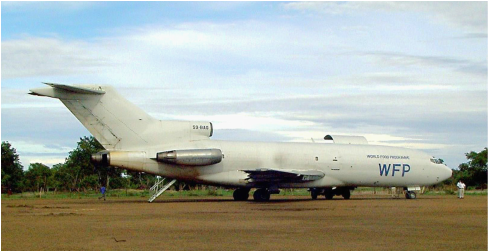 Photo: Don Rogers, Kindu, DRC, March 1999.
Photo: Don Rogers, Kindu, DRC, March 1999.
"Transair Sweden Boeing 727-30C Sunjet SE-DDD arriving at Athens Ellinikon from Stockholm, with another load of blond-haired, blue-eyed Viking sun-seakers".
This Boeing 727-30C was operated by Lufthansa for just under twelve years before being sold to Tansair Sweden in 1979. Already two years later she was sold to the Nomads Travel Club in the USA, who operated this short 727 until 1993. From September 1993 she became part of the fleet of brazilian Itaperimirin Transport. Finally she was exported to dark Africa and ended up with Transafrik as S9-BAG. Since 2007 she is stored at Upington, South-Africa.
Transair Sweden AB was a charter airline from Sweden that operated until 1981.
The company began as Nordisk Aerotransport AB in 1950 with the purpose of flying newspapers from Stockholm to other locations in Sweden using Airspeed Oxford aircraft. In 1953 passenger charters were begun using Douglas DC-3 and soon after the name was changed to Transair Sweden. In 1957 the Curtiss-Wright C-46 Commando cargo aircraft was introduced. Douglas DC-6 acquired from SAS were introduced in 1959. From 1965 nine Douglas DC-7B were bought from Eastern Airlines and were added to the fleet for charter use and for flights during the civil war in Congo on behalf of the United Nations. Freight flights on behalf of SAS were begun to cities such as Malmo, Copenhagen, Hamburg, Amsterdam and Paris. In 1967 Boeing 727-134s were acquired but those were not kept very long. But a year later Transair was bought by the Svenska Handelsbank and financing was introduced to acquire once again jet aircraft. Shortly thereafter SAS took a majority holding in Transair Sweden and the airline was kept flying independently under its own colors taking tourists to Spain, the Canary Islands and other Mediterranean destinations. In 1981 SAS sold all the 727s and the employees were integrated into SAS.
Note; - The 727 is equipped with a retractable tail skid that is designed to protect the aircraft in the event of an over-rotation on takeoff.
This Boeing 727-30C was operated by Lufthansa for just under twelve years before being sold to Tansair Sweden in 1979. Already two years later she was sold to the Nomads Travel Club in the USA, who operated this short 727 until 1993. From September 1993 she became part of the fleet of brazilian Itaperimirin Transport. Finally she was exported to dark Africa and ended up with Transafrik as S9-BAG. Since 2007 she is stored at Upington, South-Africa.
Transair Sweden AB was a charter airline from Sweden that operated until 1981.
The company began as Nordisk Aerotransport AB in 1950 with the purpose of flying newspapers from Stockholm to other locations in Sweden using Airspeed Oxford aircraft. In 1953 passenger charters were begun using Douglas DC-3 and soon after the name was changed to Transair Sweden. In 1957 the Curtiss-Wright C-46 Commando cargo aircraft was introduced. Douglas DC-6 acquired from SAS were introduced in 1959. From 1965 nine Douglas DC-7B were bought from Eastern Airlines and were added to the fleet for charter use and for flights during the civil war in Congo on behalf of the United Nations. Freight flights on behalf of SAS were begun to cities such as Malmo, Copenhagen, Hamburg, Amsterdam and Paris. In 1967 Boeing 727-134s were acquired but those were not kept very long. But a year later Transair was bought by the Svenska Handelsbank and financing was introduced to acquire once again jet aircraft. Shortly thereafter SAS took a majority holding in Transair Sweden and the airline was kept flying independently under its own colors taking tourists to Spain, the Canary Islands and other Mediterranean destinations. In 1981 SAS sold all the 727s and the employees were integrated into SAS.
Note; - The 727 is equipped with a retractable tail skid that is designed to protect the aircraft in the event of an over-rotation on takeoff.
"Douglas DC-8-62 HB-IDL is seen here proudly sporting the Swissair Arrow emblem next to its front-door".
Douglas DC-8-62 HB-IDL was operated by Swissair from 1970 until April 1984 and sold to aircraft broker Crown Arcot Corp. that same year. The next couple of years she changed hands quite often and flew for Capitol Air, National Airlines, Eagle Air and finally ABX Air as N802AX. She was stored at Wilmington, Ohio, USA by May 2001 and sold to Tarmac Accessory Service for scrap in 2002. The fuselage was gone by 2003.
The long-range Series 62 followed in April 1967. It had a more modest stretch, two 40-inch (1.0 m) plugs fore and aft of the wing taking overall length to 157 feet 5 inches (47.98 m) and a number of modifications to provide greater range. 3 feet (0.91 m) wingtip extensions reduced drag and added fuel capacity and Douglas redesigned the engine pods, extending the pylons and substituting new shorter and neater nacelles, all in the cause of drag reduction. The 18,000 lb JT3D-3B was retained but the engine pylons were redesigned to eliminate their protrusion above the wing and make them sweep forward more sharply, so that the engines were some 40 inches (1.0 m) further forward. The engine pods were also modified with a reduction in diameter and the elimination of the -50 and -61 bypass duct. The changes all improved the aircraft's aerodynamic efficiency. The DC-8 Series 62 is slightly heavier than the -53 or -61 at 335,000 pounds (151,953 kg) and able to seat up to 189 passengers, the -62 had a range with full payload of about 5,200 nautical miles (9,600 km; 6,000 mi), or about the same as the -53 but with 40 extra passengers. Many late production -62s had 350,000 pounds (158,760 kg) maximum takeoff weight and were known as the -62H. Also available as the cargo door equipped convertible -62CF or all cargo -62AF. 51 DC-8-62s were built plus 10 -62CF and 6 -62AF.
Douglas DC-8-62 HB-IDL was operated by Swissair from 1970 until April 1984 and sold to aircraft broker Crown Arcot Corp. that same year. The next couple of years she changed hands quite often and flew for Capitol Air, National Airlines, Eagle Air and finally ABX Air as N802AX. She was stored at Wilmington, Ohio, USA by May 2001 and sold to Tarmac Accessory Service for scrap in 2002. The fuselage was gone by 2003.
The long-range Series 62 followed in April 1967. It had a more modest stretch, two 40-inch (1.0 m) plugs fore and aft of the wing taking overall length to 157 feet 5 inches (47.98 m) and a number of modifications to provide greater range. 3 feet (0.91 m) wingtip extensions reduced drag and added fuel capacity and Douglas redesigned the engine pods, extending the pylons and substituting new shorter and neater nacelles, all in the cause of drag reduction. The 18,000 lb JT3D-3B was retained but the engine pylons were redesigned to eliminate their protrusion above the wing and make them sweep forward more sharply, so that the engines were some 40 inches (1.0 m) further forward. The engine pods were also modified with a reduction in diameter and the elimination of the -50 and -61 bypass duct. The changes all improved the aircraft's aerodynamic efficiency. The DC-8 Series 62 is slightly heavier than the -53 or -61 at 335,000 pounds (151,953 kg) and able to seat up to 189 passengers, the -62 had a range with full payload of about 5,200 nautical miles (9,600 km; 6,000 mi), or about the same as the -53 but with 40 extra passengers. Many late production -62s had 350,000 pounds (158,760 kg) maximum takeoff weight and were known as the -62H. Also available as the cargo door equipped convertible -62CF or all cargo -62AF. 51 DC-8-62s were built plus 10 -62CF and 6 -62AF.
"SAS Scandinavian Airlines DC-8-63 SE-DBL 'Tord Viking' seen here on a sweltering Athens tarmac on July 26, 1979".
This is the last ever built DC-8 and was originally delivered to SAS in 1972. They operated her 1982 after which she was transferred to Scanair. In 1989 she left the Scandinavian skies after she was sold to Aerolease International and was converted to a freighter. From August 1989 she operated for Emery Worldwide Airlines. The Douglas has been stored at Victorville since at least 2007, still wearing her CF Airfreight/Emery colors.
The Series 63 was the final new-build variant and entered service in June 1968. It had the long fuselage of the -61, the aerodynamic refinements and increased fuel capacity of the -62 and 19,000 lb (85.1 kN) JT3D-7 engines. This allowed a maximum take off weight of 350,000 pounds (158,760 kg)[20] and a range with full payload of 4,110 nautical miles (7,610 km; 4,730 mi). Like the -62, the Series 63 was also available as a cargo door equipped -63CF or all cargo -63AF. The freighters had a further increase in Maximum Take Off Weight to 355,000 pounds (161,030 kg). Eastern Airlines bought 6 -63PFs with the strengthened floor of the freighters but no cargo door. 41 DC-8-63s were built, plus 53 -63CF, 7 -63AF and the 6 -63PFs. The Flying Tiger Line was a major early customer for the DC-8-63F.
This is the last ever built DC-8 and was originally delivered to SAS in 1972. They operated her 1982 after which she was transferred to Scanair. In 1989 she left the Scandinavian skies after she was sold to Aerolease International and was converted to a freighter. From August 1989 she operated for Emery Worldwide Airlines. The Douglas has been stored at Victorville since at least 2007, still wearing her CF Airfreight/Emery colors.
The Series 63 was the final new-build variant and entered service in June 1968. It had the long fuselage of the -61, the aerodynamic refinements and increased fuel capacity of the -62 and 19,000 lb (85.1 kN) JT3D-7 engines. This allowed a maximum take off weight of 350,000 pounds (158,760 kg)[20] and a range with full payload of 4,110 nautical miles (7,610 km; 4,730 mi). Like the -62, the Series 63 was also available as a cargo door equipped -63CF or all cargo -63AF. The freighters had a further increase in Maximum Take Off Weight to 355,000 pounds (161,030 kg). Eastern Airlines bought 6 -63PFs with the strengthened floor of the freighters but no cargo door. 41 DC-8-63s were built, plus 53 -63CF, 7 -63AF and the 6 -63PFs. The Flying Tiger Line was a major early customer for the DC-8-63F.
"Douglas DC-8-55 'Harald Viking' is seen here arriving at Athens Ellinikon on a bloody hot day in July, 1979".
Douglas DC-8-55 LN-MOH, which was manufactured in December 1965 and enjoyed a long and various career. She operated respectively for SAS Scandinavian Airlines, Swissair, Scan air, United Air Leasing, who converted her to a freighter with registration N722UA, Saudi Arabian Airlines, Overseas National Airways, with registration N902R, Rich International Airways, Zantop International Airlines, National Airlines, Equator Leasing One Inc., Volcanair, Connie Kalitta Services, who registrated her N807CK, Kalitta American International Airways and Kitty Hawk International. In December 1999 she was withdrawn from use and stored at Greenville, Mississippi, USA. Around 2005, fifty year after she rolled-off the Long Beach production line, she was finally broken-up.
The definitive short-fuselage DC-8 with the same engine that powered the vast majority of 707s, the JT3D. Fourteen earlier DC-8s were converted to this standard. All but the -55 were certified in 1961. The DC-8-51, DC-8-52 and DC-8-53 all had 17,000 lb (76.1 kN) JT3D-1 or 18,000 lb (80.6 kN) JT3D-3B engines, varying mainly in their weights: 276,000 pounds (125,200 kg), 300,000 pounds (136,100 kg) and 315,000 pounds (142,900 kg) respectively. The DC-8-55 arrived in June 1964, retaining the JT3D-3B engines but with strengthened structure from the freighter versions and 325,000-pound (147,420 kg) maximum weight. 88 DC-8-50s were built plus the 14 converted from Series 10/30.
Douglas DC-8-55 LN-MOH, which was manufactured in December 1965 and enjoyed a long and various career. She operated respectively for SAS Scandinavian Airlines, Swissair, Scan air, United Air Leasing, who converted her to a freighter with registration N722UA, Saudi Arabian Airlines, Overseas National Airways, with registration N902R, Rich International Airways, Zantop International Airlines, National Airlines, Equator Leasing One Inc., Volcanair, Connie Kalitta Services, who registrated her N807CK, Kalitta American International Airways and Kitty Hawk International. In December 1999 she was withdrawn from use and stored at Greenville, Mississippi, USA. Around 2005, fifty year after she rolled-off the Long Beach production line, she was finally broken-up.
The definitive short-fuselage DC-8 with the same engine that powered the vast majority of 707s, the JT3D. Fourteen earlier DC-8s were converted to this standard. All but the -55 were certified in 1961. The DC-8-51, DC-8-52 and DC-8-53 all had 17,000 lb (76.1 kN) JT3D-1 or 18,000 lb (80.6 kN) JT3D-3B engines, varying mainly in their weights: 276,000 pounds (125,200 kg), 300,000 pounds (136,100 kg) and 315,000 pounds (142,900 kg) respectively. The DC-8-55 arrived in June 1964, retaining the JT3D-3B engines but with strengthened structure from the freighter versions and 325,000-pound (147,420 kg) maximum weight. 88 DC-8-50s were built plus the 14 converted from Series 10/30.
"Boeing 737-205 LN-SUD is seen here at Athens Ellinikon awaiting its passengers before the flight back to Oslo, Norway".
This Boeing 737-200 operated respectively for Braathens, Time Air Sweden, Sudan Airways, Air One, Magnicharters Mexico, Aero Continente Peru, Nuevo Continente and finally Air Guinea as 3C-LQA. She was reported grounded at Malabo, Equetorial Guinea in 2005, due to over-cycled engines.
Braathens South American & Far East Airtransport A/S was founded on 26 March 1946 by Ludvig G. Braathen through his shipping company Ludvig G. Braathens Rederi. Braathens SAFE ordered three jet Boeing 737-200 in 1965, which were intended for their charter operations. During the 1970s, Braathens SAFE took delivery of another eleven 737s, including three with extended range tanks which allowed for non-stop flights to the Canary Islands and Athens.
This Boeing 737-200 operated respectively for Braathens, Time Air Sweden, Sudan Airways, Air One, Magnicharters Mexico, Aero Continente Peru, Nuevo Continente and finally Air Guinea as 3C-LQA. She was reported grounded at Malabo, Equetorial Guinea in 2005, due to over-cycled engines.
Braathens South American & Far East Airtransport A/S was founded on 26 March 1946 by Ludvig G. Braathen through his shipping company Ludvig G. Braathens Rederi. Braathens SAFE ordered three jet Boeing 737-200 in 1965, which were intended for their charter operations. During the 1970s, Braathens SAFE took delivery of another eleven 737s, including three with extended range tanks which allowed for non-stop flights to the Canary Islands and Athens.
"Sterling Airlines Boeing 727-200, taxies into her stand at Athens Ellinikon airport on July 27, 1979".
Boeing 727-2J4 OY-SBC changed hands several times. Her first owner was Sterling Airways. In April 1980 she was sold to Dan Air London as G-BHNF. During the 80's she was leased by Dan Air to Sun Country Airlines and Australian Airlines. In 1991 ILFC bought the 727 and leased her to Sun Country Airlines. Her last flight was in April 2003 and she was parked at Opa Locka, Florida for part-out and scrap.
Sterling Airlines traces its history back to 1962, when Eilif Krogager, founder of Danish travel agency Tjæreborg, started the charter airline Sterling Airways with two Douglas DC-6B bought from Swissair, in order to better service his own package tours from Scandinavia to the Mediterranean. In 1965 Sterling received its first Caravelle and in 1968 the company was bought out of the Tjæreborg Group and started servicing other travel agents as well. In 1987, the company celebrated its 25th anniversary, but a few years later, in 1993, Sterling Airways went bankrupt.
Boeing 727-2J4 OY-SBC changed hands several times. Her first owner was Sterling Airways. In April 1980 she was sold to Dan Air London as G-BHNF. During the 80's she was leased by Dan Air to Sun Country Airlines and Australian Airlines. In 1991 ILFC bought the 727 and leased her to Sun Country Airlines. Her last flight was in April 2003 and she was parked at Opa Locka, Florida for part-out and scrap.
Sterling Airlines traces its history back to 1962, when Eilif Krogager, founder of Danish travel agency Tjæreborg, started the charter airline Sterling Airways with two Douglas DC-6B bought from Swissair, in order to better service his own package tours from Scandinavia to the Mediterranean. In 1965 Sterling received its first Caravelle and in 1968 the company was bought out of the Tjæreborg Group and started servicing other travel agents as well. In 1987, the company celebrated its 25th anniversary, but a few years later, in 1993, Sterling Airways went bankrupt.
"BAC One-Eleven D-AMUC ready to depart her stand at Athens Ellinikon with another load sun-burned Germans".
During 1970's and 80's, BAC One-Eleven-528FL D-AMUC was a common sight in the European skies. During this period she operated for Barvaria, Germanair and Hapag Lloyd before being sold to Argentina in January 1980. Registrated as LV-OAY she became part of the Austral Líneas Aéreas fleet and was named 'Isla Soledad'. Thirteen years later she was withdrawn from use and stored at Buenos Aires. She was broken-up in May 1994.
During 1970's and 80's, BAC One-Eleven-528FL D-AMUC was a common sight in the European skies. During this period she operated for Barvaria, Germanair and Hapag Lloyd before being sold to Argentina in January 1980. Registrated as LV-OAY she became part of the Austral Líneas Aéreas fleet and was named 'Isla Soledad'. Thirteen years later she was withdrawn from use and stored at Buenos Aires. She was broken-up in May 1994.
"Boeing 727-2L5 5A-DII is one of a number operated by Libyan Arab Airlines on the company's network".
This Boeing has spent its entire life with Libyan Arab Airlines flying passenger’s services between Europe and its Tripoli base. It is believed that this ship stored at Tripoli since 2008.
This Boeing has spent its entire life with Libyan Arab Airlines flying passenger’s services between Europe and its Tripoli base. It is believed that this ship stored at Tripoli since 2008.
"Iran Air, branded as The Airline of the Islamic Republic of Iran, Boeing 707-386C, with the Huma bird sporting majestically on its ventral fin, seen here shortly after arriving from Tehran-Mehrabad airport".
Boeing 707-386C EP-IRN was operated by Iran Air for a number of years before being transferred to Iranian Air Force as #5-8307, presumably for spares. The 707 was spotted in 2013 parked at Tehran AFB with a white fuselage, blue tail and IRIAF titles.
The Huma, is a mythical bird of Iranian legends and fables and continuing as a common motif in Sufi and Diwan poetry. Although there are many legends of the creature, common to all is that the bird is said to never alight on the ground and instead to live its entire life flying invisibly high above the earth.
Note; - Boeing 707 used a HF antenna mounted on top of the tail fin.
Also note; - The -320C has no ventral fin. A little flare at the wingtip that adds 3 feet to the overall span and extra Kruger flaps, actually solved some aerodynamic problems, so the ventral fin could now be removed.
Also note; - Another -320C feature is the hat-rack door right behind the wing. It's bigger than the over-wing exits but it's only as tall as the emergency exits. So it's about a 3/4 size door.
Boeing 707-386C EP-IRN was operated by Iran Air for a number of years before being transferred to Iranian Air Force as #5-8307, presumably for spares. The 707 was spotted in 2013 parked at Tehran AFB with a white fuselage, blue tail and IRIAF titles.
The Huma, is a mythical bird of Iranian legends and fables and continuing as a common motif in Sufi and Diwan poetry. Although there are many legends of the creature, common to all is that the bird is said to never alight on the ground and instead to live its entire life flying invisibly high above the earth.
Note; - Boeing 707 used a HF antenna mounted on top of the tail fin.
Also note; - The -320C has no ventral fin. A little flare at the wingtip that adds 3 feet to the overall span and extra Kruger flaps, actually solved some aerodynamic problems, so the ventral fin could now be removed.
Also note; - Another -320C feature is the hat-rack door right behind the wing. It's bigger than the over-wing exits but it's only as tall as the emergency exits. So it's about a 3/4 size door.
"SyrianAir welcomed the late seventies with an active fleet of three Boeing 727s, which were adorned with the airline's logo; - a mythical bird rising over a Mediterranean-blue disk".
Boeing 727-294 YK-AGC was operated by Syrian air for 25 years before being withdrawn from use at Damascus in 2001. It seem the 727 is still stored at Damascus airport.
Boeing 727-294 YK-AGC was operated by Syrian air for 25 years before being withdrawn from use at Damascus in 2001. It seem the 727 is still stored at Damascus airport.
"Boeing 737-200 operated many charter flight throughout Europe during its time in service with TEA".
Boeing 737-2Q8 OO-TEM was brand new when I photographed her at Ellinikon on July 27, 1979. On June 06, 1979 she was delivered new to Trans European Airlines. Already in 1982 she left TEA's fleet and operated respectively for Southwest Airlines, America West Airlines, British Midland, Malev and finally Vanguard Airlines. During December 2007 she was stored at Tucson, Arizona, USA.
Boeing 737-2Q8 OO-TEM was brand new when I photographed her at Ellinikon on July 27, 1979. On June 06, 1979 she was delivered new to Trans European Airlines. Already in 1982 she left TEA's fleet and operated respectively for Southwest Airlines, America West Airlines, British Midland, Malev and finally Vanguard Airlines. During December 2007 she was stored at Tucson, Arizona, USA.
"Another very efficient turn-round for this Egypt Air Boeing 737-266".
Boeing 737-200 SU-AYO of Egyptair left Renton during July 1976. Later in her career she operated for Air Sinai, Bali International Air and Jatayu Air from Indonesia. She was stored at Jakarta Cengkareng during 2004.
Note; - The original 737-1/200 thrust reversers were pneumatically powered clamshell doors taken straight from the 727. When reverse was selected, 13th stage bleed air was ported to a pneumatic actuator that rotated the deflector doors and clamshell doors into position. Unfortunately they were relatively ineffective and apparently tended to push the aircraft up off the runway when deployed. This reduced the downforce on the main wheels thereby reducing the effectiveness of the wheel brakes. By 1969 these had been changed by Boeing and Rohr to the much more successful hydraulically powered target type thrust reversers . This required a 48 inch extension to the tailpipe to accommodate the two cylindrical deflector doors which were mounted on a four bar linkage system and associated hydraulics. The doors are set 35 degrees away from the vertical to allow the exhaust to be deflected inboard and over the wings and outboard and under the wings. This ensures that exhaust and debris is not blown into the wheel-well, nor is it blown directly downwards which would lift the weight off the wheels or be re-ingested. Fortunately the new longer nacelle improved cruise performance by improving internal airflow within the engine and also reduced cruise drag. These thrust reversers are locked against inadvertent deployment by both deflector door locks and the four bar linkage being overcenter.
Boeing 737-200 SU-AYO of Egyptair left Renton during July 1976. Later in her career she operated for Air Sinai, Bali International Air and Jatayu Air from Indonesia. She was stored at Jakarta Cengkareng during 2004.
Note; - The original 737-1/200 thrust reversers were pneumatically powered clamshell doors taken straight from the 727. When reverse was selected, 13th stage bleed air was ported to a pneumatic actuator that rotated the deflector doors and clamshell doors into position. Unfortunately they were relatively ineffective and apparently tended to push the aircraft up off the runway when deployed. This reduced the downforce on the main wheels thereby reducing the effectiveness of the wheel brakes. By 1969 these had been changed by Boeing and Rohr to the much more successful hydraulically powered target type thrust reversers . This required a 48 inch extension to the tailpipe to accommodate the two cylindrical deflector doors which were mounted on a four bar linkage system and associated hydraulics. The doors are set 35 degrees away from the vertical to allow the exhaust to be deflected inboard and over the wings and outboard and under the wings. This ensures that exhaust and debris is not blown into the wheel-well, nor is it blown directly downwards which would lift the weight off the wheels or be re-ingested. Fortunately the new longer nacelle improved cruise performance by improving internal airflow within the engine and also reduced cruise drag. These thrust reversers are locked against inadvertent deployment by both deflector door locks and the four bar linkage being overcenter.
"Boeing 720-023B of Middle East Airlines. OD-AFZ served this Lebanese airline from 1972 until the late '80s".
Boeing 720-023B OD-AFZ was originally delivered to American Airlines in 1962. Sold to Middle East Airlines she served this Lebanese airline from 1972 until the late '80s. After spending a period of storage at Beirut, this aircraft was converted into a restaurant at Jounieh, Lebanon. It is reported as destroyed by fire during 2000.
The 720 uses an improved wing based on the 707 wing. The wingspan remained the same as the 707-120. For the 720, the wing was changed between the fuselage and inner engines by adding a wing root glove. This glove reduced the drag of the wing by decambering the root, which reduced the "middle effect", thereby increasing the effective local wing sweep. It is reported that the wing root glove increased the drag divergence Mach number of the wing by Mach 0.02.
Note; - The Boeing 720 lacked an APU, and was reliant instead on ground power and pneumatic air to power the aircraft's systems, provide air conditioning, and start the engines while on the ground. The normal practice for Boeing 720 aircraft was to start the number 3 (inner starboard) engine first, disconnect ground power and air. After start of the first engine the use of bleed air from that engine could be used to provide necessary air pressure to start the other engines one by one. However, on ground, with ground starting crew already at hand, all four engines were usually started with ground crew help as this was more reliable and faster.
Also note: - The standard 707 nose gear door for the 707-120/120B/138/720/720B/220/320/320B/420. The 320C have the rectangular nose gear doors.
Boeing 720-023B OD-AFZ was originally delivered to American Airlines in 1962. Sold to Middle East Airlines she served this Lebanese airline from 1972 until the late '80s. After spending a period of storage at Beirut, this aircraft was converted into a restaurant at Jounieh, Lebanon. It is reported as destroyed by fire during 2000.
The 720 uses an improved wing based on the 707 wing. The wingspan remained the same as the 707-120. For the 720, the wing was changed between the fuselage and inner engines by adding a wing root glove. This glove reduced the drag of the wing by decambering the root, which reduced the "middle effect", thereby increasing the effective local wing sweep. It is reported that the wing root glove increased the drag divergence Mach number of the wing by Mach 0.02.
Note; - The Boeing 720 lacked an APU, and was reliant instead on ground power and pneumatic air to power the aircraft's systems, provide air conditioning, and start the engines while on the ground. The normal practice for Boeing 720 aircraft was to start the number 3 (inner starboard) engine first, disconnect ground power and air. After start of the first engine the use of bleed air from that engine could be used to provide necessary air pressure to start the other engines one by one. However, on ground, with ground starting crew already at hand, all four engines were usually started with ground crew help as this was more reliable and faster.
Also note: - The standard 707 nose gear door for the 707-120/120B/138/720/720B/220/320/320B/420. The 320C have the rectangular nose gear doors.
"Boeing 707-320C 'Intercontinental' of short lived Ontario World Air seen here approached by aircraft handlers at Ellinikon on July 27, 1979".
Ontario World Air. This Airline was formed in 1978 and already ceased operations in 1980. Their ship C-GRYN is a Boeing 707-338C and was build for the Qantas in 1968. After her career in Australia she flew in Canada with Ontario Worldair and Worldways Canada. In 1981 she returned to 'down-under' and enlisted with the Australian Air Forces as A20-623. The Commonwealth of Australia/Defence Disposals Agency sold her to Omega Air and ferried her in basic RAAF colors Victorville CA for storage. In 2013 she was re-engined with JT8D-200. From February 2014 she was part of the Omega Aerial Refueling Services Inc tanker fleet.
Note; - The 707 uses engine-driven turbocompressors to supply pressurized air for cabin pressurization. On many commercial 707s, the outer port (number 1) engine mount is distinctly different from the other three, as this engine is not fitted with a turbocompressor. Later-model 707s typically had this configuration, although American Airlines had turbocompressors on engines 2 and 3 only. Early 707 models often had turbocompressor fairings on all four engines, but with only two or three compressors installed.
Ontario World Air. This Airline was formed in 1978 and already ceased operations in 1980. Their ship C-GRYN is a Boeing 707-338C and was build for the Qantas in 1968. After her career in Australia she flew in Canada with Ontario Worldair and Worldways Canada. In 1981 she returned to 'down-under' and enlisted with the Australian Air Forces as A20-623. The Commonwealth of Australia/Defence Disposals Agency sold her to Omega Air and ferried her in basic RAAF colors Victorville CA for storage. In 2013 she was re-engined with JT8D-200. From February 2014 she was part of the Omega Aerial Refueling Services Inc tanker fleet.
Note; - The 707 uses engine-driven turbocompressors to supply pressurized air for cabin pressurization. On many commercial 707s, the outer port (number 1) engine mount is distinctly different from the other three, as this engine is not fitted with a turbocompressor. Later-model 707s typically had this configuration, although American Airlines had turbocompressors on engines 2 and 3 only. Early 707 models often had turbocompressor fairings on all four engines, but with only two or three compressors installed.
"This Boeing 737-266 left the Boeing factory in 1976 for delivery to the Egyptair and was registrated SU-AYL".
For a short period she flew in Macedonia for Macedonian Airlines. She was exported to Indonesia in May 2000 and her next operator was Bouraq Indonesia Airlines. The aircraft changed hands once more as she was acquired by Bali Air. Between 2002 and 2007 she was seen stored at Jakarta.
Note; - The JT8D tailpipe was fitted as standard from line number 135 onwards (as seen here on SU-AYL) because the original thrust reversers were totally redesigned by Boeing and Rohr since the aircraft had inherited the same internal pneumatically powered clamshell thrust reversers as the 727 which were relatively ineffective and apparently tended to lift the aircraft off the runway when deployed! The redesign to external hydraulically powered target reversers cost Boeing $24 million but dramatically improved its short field performance which boosted sales to carriers proposing to use the aircraft as a regional jet from short runways. Also the engine nacelles were extended by 1.14m as a drag reduction measure.
For a short period she flew in Macedonia for Macedonian Airlines. She was exported to Indonesia in May 2000 and her next operator was Bouraq Indonesia Airlines. The aircraft changed hands once more as she was acquired by Bali Air. Between 2002 and 2007 she was seen stored at Jakarta.
Note; - The JT8D tailpipe was fitted as standard from line number 135 onwards (as seen here on SU-AYL) because the original thrust reversers were totally redesigned by Boeing and Rohr since the aircraft had inherited the same internal pneumatically powered clamshell thrust reversers as the 727 which were relatively ineffective and apparently tended to lift the aircraft off the runway when deployed! The redesign to external hydraulically powered target reversers cost Boeing $24 million but dramatically improved its short field performance which boosted sales to carriers proposing to use the aircraft as a regional jet from short runways. Also the engine nacelles were extended by 1.14m as a drag reduction measure.
"Turbojet powered Boeing 707-131 OO-TED just arrived and is awaiting stairs and a ground power unit".
This Classic Boeing had its first flight from Renton on April 10, 1959. She was delivered one month later to Trans World Airlines as N738TW, who operated their former flagship till 1971 when she was placed in storage at Kansas City airport. Six months later she was ferried to Tel-Aviv after she was sold to Israel Aircraft Ind. for use by the Israel government. Live with them was short as the 707 was already sold in January 1974 to Trans European Airlines. With TEA she became a well-known visitor on the European vacation hot-spots. In October 1984 OO-TED made last flight and was scrapped at Brussels during September 1987.
Note; - The 707-120 was the first production 707 variant, with a longer, wider fuselage, and greater wingspan than the Dash 80. The cabin had a full set of rectangular windows and could seat up to 189 passengers. It was designed for transcontinental routes and often required a refueling stop when flying across the North Atlantic. It had four Pratt & Whitney JT3C-6 turbojets, civilian versions of the military J57, initially producing 13,000 lb (57.8 kN) with water injection. Maximum takeoff weight was 247,000 lb and first flight was on December 20, 1957. Major orders were the launch order for 20 707-121 aircraft by Pan Am and an American Airlines order for 30 707-123 aircraft. The first revenue flight was on October 26, 1958; 56 were built, plus seven short-bodied −138s; the last −120 was delivered to Western in May 1960.
Also note; - The Boeing 707-120 has a ventral fin and it is a big one! Early 707's had poor yaw stability as the rudder wasn't hydraulically powered and the yaw damper was ineffective. So the vertical stabilizer was extended 40 inches and a ventral fin was installed.
This Classic Boeing had its first flight from Renton on April 10, 1959. She was delivered one month later to Trans World Airlines as N738TW, who operated their former flagship till 1971 when she was placed in storage at Kansas City airport. Six months later she was ferried to Tel-Aviv after she was sold to Israel Aircraft Ind. for use by the Israel government. Live with them was short as the 707 was already sold in January 1974 to Trans European Airlines. With TEA she became a well-known visitor on the European vacation hot-spots. In October 1984 OO-TED made last flight and was scrapped at Brussels during September 1987.
Note; - The 707-120 was the first production 707 variant, with a longer, wider fuselage, and greater wingspan than the Dash 80. The cabin had a full set of rectangular windows and could seat up to 189 passengers. It was designed for transcontinental routes and often required a refueling stop when flying across the North Atlantic. It had four Pratt & Whitney JT3C-6 turbojets, civilian versions of the military J57, initially producing 13,000 lb (57.8 kN) with water injection. Maximum takeoff weight was 247,000 lb and first flight was on December 20, 1957. Major orders were the launch order for 20 707-121 aircraft by Pan Am and an American Airlines order for 30 707-123 aircraft. The first revenue flight was on October 26, 1958; 56 were built, plus seven short-bodied −138s; the last −120 was delivered to Western in May 1960.
Also note; - The Boeing 707-120 has a ventral fin and it is a big one! Early 707's had poor yaw stability as the rudder wasn't hydraulically powered and the yaw damper was ineffective. So the vertical stabilizer was extended 40 inches and a ventral fin was installed.
"Bristol 175 Brittania 253 C.1 G-BDUP and G-BDUR on a broiling Athens Ellinikon ramp in July, 1979. Both still in basic Royal Air Force colour scheme".
Both Brittania's were operated by the RAF on worldwide trooping and freight flights before their sale to Afrek. Brisol 175 Brittania 253's were a passenger/freight variant for the Royal Air Force, designated Britannia C1. Fitted with full length heavy-duty floor and provision for rearwards-facing seats as preferred by the RAF. Capacity for 115 troops or equivalent in cargo, 20 built. Aircraft later sold on the civil market as freighters designated Series 253F. During their time with Afrek Ltd. they were mainly used for transporting oil equipment from Greece to Nigeria.
G-BDUP has a interesting and long history. Delivered to the Royal Air Force Transport Command at RAF Lyneham on 17 September 1960, serialled XM496 and named 'Regulus', she was taken on RAFTC charge from 19 September 1960 and used within the Britannia pool from her acceptance. XM496 was withdrawn from RAF use on 27 October 1975 and stored at RAF Kemble with 18,413 hours and 8122 landings to her credit. XM496 was purchased by Monarch Airline's Airline Engineering on 6 January 1976. Converted at Luton by Airline Engineering to 253F configuration and registered G-BDUP on 31 March 1976. Two weeks later she was painted in the livery of Afrek Ltd, who purchased her on 21 May 1976 and was delivered to them in Athens on 6 June 1976 with a private C of A. Later she was withdrawn from use and stored in Athens, Greece. Purchased by Monarch Aircraft Engineering Ltd on 30 July 1984 and ferried to Luton for overhaul, then sold to the Cuban Airline, AeroCaribbean, in August 1984. She was painted in their full livery and registered CU-T120. CU-T120 operated her last flight on 21 March 1990 and was grounded due to lack of spares. Following sale to Transair Cargo the aircraft was flown via the UK as 9Q-CJH "Jack" and operated with Trans Service Airlift ltd. Reregistered as EL-WXA to Transair Cargo in August 1997. Her stay in Zaïre was brief as she was flown back to the UK when she flew into Cotswold Airport on 14th October 1997. Repainted in RAF Transport Command livery she is being fully preserved as a non flying example.
Her sistership, G-BDUR, was not so lucky. After operating Afrek she too left for Cuba and worked for AeroCaribbean as CU-T121. After this adventure she was sold to Zaïre, where she finally was scrapped in November, 1995.
Both Brittania's were operated by the RAF on worldwide trooping and freight flights before their sale to Afrek. Brisol 175 Brittania 253's were a passenger/freight variant for the Royal Air Force, designated Britannia C1. Fitted with full length heavy-duty floor and provision for rearwards-facing seats as preferred by the RAF. Capacity for 115 troops or equivalent in cargo, 20 built. Aircraft later sold on the civil market as freighters designated Series 253F. During their time with Afrek Ltd. they were mainly used for transporting oil equipment from Greece to Nigeria.
G-BDUP has a interesting and long history. Delivered to the Royal Air Force Transport Command at RAF Lyneham on 17 September 1960, serialled XM496 and named 'Regulus', she was taken on RAFTC charge from 19 September 1960 and used within the Britannia pool from her acceptance. XM496 was withdrawn from RAF use on 27 October 1975 and stored at RAF Kemble with 18,413 hours and 8122 landings to her credit. XM496 was purchased by Monarch Airline's Airline Engineering on 6 January 1976. Converted at Luton by Airline Engineering to 253F configuration and registered G-BDUP on 31 March 1976. Two weeks later she was painted in the livery of Afrek Ltd, who purchased her on 21 May 1976 and was delivered to them in Athens on 6 June 1976 with a private C of A. Later she was withdrawn from use and stored in Athens, Greece. Purchased by Monarch Aircraft Engineering Ltd on 30 July 1984 and ferried to Luton for overhaul, then sold to the Cuban Airline, AeroCaribbean, in August 1984. She was painted in their full livery and registered CU-T120. CU-T120 operated her last flight on 21 March 1990 and was grounded due to lack of spares. Following sale to Transair Cargo the aircraft was flown via the UK as 9Q-CJH "Jack" and operated with Trans Service Airlift ltd. Reregistered as EL-WXA to Transair Cargo in August 1997. Her stay in Zaïre was brief as she was flown back to the UK when she flew into Cotswold Airport on 14th October 1997. Repainted in RAF Transport Command livery she is being fully preserved as a non flying example.
Her sistership, G-BDUR, was not so lucky. After operating Afrek she too left for Cuba and worked for AeroCaribbean as CU-T121. After this adventure she was sold to Zaïre, where she finally was scrapped in November, 1995.
"During the summer of 1979 Antonov An-24RV YR-BMI operated Tarom's once weekly flight between Bucarest, Romania and Athens Ellinikon. Spotting and photographing a Tarom An-24 was very unique during the 70's and this An-24 was one of our main reasons to visit Athens".
YR-BMI rolled-off the production line at Kiev-Svyatoshino in November 1975. The Antonov operated local services from Bucarest for the next 25 years before being sold to a broker and registrated EX-24408. Only one month later this broker already sold their possession as she was registrated RA-46712 of Angara Airlines. This all happened in July 2001.
An On March 24, 2013, she was involved in an accident. Our An-24 was performing flight IK-84 from Kirensk to Irkutsk (Russia) with 44 passengers and 5 crew and was accelerating for takeoff from Kirensk's runway 27 when the aircraft veered to and went beyond the left runway edge about 350 meters/1000 feet into the takeoff run before the crew steered the aircraft back onto the runway. The takeoff was continued, the aircraft climbed out and continued to destination without further incident. It was reported that the aircraft's left main gear temporarily rolled on the runway shoulder and took out a runway sign. The aircraft continued to destination, a post flight examination showed damage to the left hand tires.
It seem that this indestructible An-24 still soldiers on with Angara on passenger flights from their Irkutsk, Russia, base.
YR-BMI rolled-off the production line at Kiev-Svyatoshino in November 1975. The Antonov operated local services from Bucarest for the next 25 years before being sold to a broker and registrated EX-24408. Only one month later this broker already sold their possession as she was registrated RA-46712 of Angara Airlines. This all happened in July 2001.
An On March 24, 2013, she was involved in an accident. Our An-24 was performing flight IK-84 from Kirensk to Irkutsk (Russia) with 44 passengers and 5 crew and was accelerating for takeoff from Kirensk's runway 27 when the aircraft veered to and went beyond the left runway edge about 350 meters/1000 feet into the takeoff run before the crew steered the aircraft back onto the runway. The takeoff was continued, the aircraft climbed out and continued to destination without further incident. It was reported that the aircraft's left main gear temporarily rolled on the runway shoulder and took out a runway sign. The aircraft continued to destination, a post flight examination showed damage to the left hand tires.
It seem that this indestructible An-24 still soldiers on with Angara on passenger flights from their Irkutsk, Russia, base.
"Noratlas 53-228 on training mission at Ellinikon. Operated by the Hellenic Air Force and based at Athens Elefsis AFB from 1970 until the mid 80's".
The Nord Noratlas was a 1950s French military transport aircraft intended to replace the older types in service at the end of World War II. Several hundred were produced in a run lasting over a decade, finding a wide variety of uses. In 1970, the Hellenic Air Force received 50 surplus Noratlases from Germany as World War II compensations and NATO help. These Noratlases were based at Elefsis AFB near Athens, with the 354th Tactical Airlift Squadron. 53-228 wore the marking 53+28 during her military career with the German Air Force.
Accordingly, in 1947 Direction Technique Industrielle organized a design competition for a medium-weight cargo aircraft offering great flexibility in use. Société Nationale de Construction Aéronautique du Nord (SNCAN) answered with the Nord 2500, while their competitors, Breguet and SNCASO, offered the BR-891R Mars and SO-30C respectively. The Nord 2500, with its rear-opening clamshell doors allowing ease of loading, was considered the most promising, and DTI ordered two prototypes on April 27, 1948.
The first prototype took to the air on September 10, 1949 powered by two Gnome-Rhône 14R engines of 1,600 hp driving 3-bladed variable-pitch propellers, but it was found to be too slow for most applications. The second prototype replaced the 14Rs with two SNECMA-built Bristol Hercules 738/9 2,040 hp engines driving four-bladed propellers, and this model was rechristened the Nord 2501. DTI ordered 3 more preproduction Nord 2501s, which they flight-tested extensively against the similar Fairchild C-82 Packet. The N-2501 was found superior, and the first 34 were ordered on July 10, 1951.
After an eventual production run of some 425 planes, the last Noratlas was constructed in 1961.
The Nord Noratlas was a 1950s French military transport aircraft intended to replace the older types in service at the end of World War II. Several hundred were produced in a run lasting over a decade, finding a wide variety of uses. In 1970, the Hellenic Air Force received 50 surplus Noratlases from Germany as World War II compensations and NATO help. These Noratlases were based at Elefsis AFB near Athens, with the 354th Tactical Airlift Squadron. 53-228 wore the marking 53+28 during her military career with the German Air Force.
Accordingly, in 1947 Direction Technique Industrielle organized a design competition for a medium-weight cargo aircraft offering great flexibility in use. Société Nationale de Construction Aéronautique du Nord (SNCAN) answered with the Nord 2500, while their competitors, Breguet and SNCASO, offered the BR-891R Mars and SO-30C respectively. The Nord 2500, with its rear-opening clamshell doors allowing ease of loading, was considered the most promising, and DTI ordered two prototypes on April 27, 1948.
The first prototype took to the air on September 10, 1949 powered by two Gnome-Rhône 14R engines of 1,600 hp driving 3-bladed variable-pitch propellers, but it was found to be too slow for most applications. The second prototype replaced the 14Rs with two SNECMA-built Bristol Hercules 738/9 2,040 hp engines driving four-bladed propellers, and this model was rechristened the Nord 2501. DTI ordered 3 more preproduction Nord 2501s, which they flight-tested extensively against the similar Fairchild C-82 Packet. The N-2501 was found superior, and the first 34 were ordered on July 10, 1951.
After an eventual production run of some 425 planes, the last Noratlas was constructed in 1961.
"With a midday temperature of 40 degrees centigrade, Scandinavian Airline System DC-8-63P OY-KTH is seen here landing at Athens Ellinikon on July 29, 1979".
This stretched DC-8, which rolled of the Douglas production line in December 1969, changed hands many times. After only five years she was sold to SAS as OY-KTH and in August 1979 she was re-registrated LN-MOF. Other owners were Scanair, Icelandair, Air Algerie, Challenge Air Cargo, Arrow Air, Air Transport International, Air Charter Express and her last operator was Meridian Airways with registration 9G-AXB. As such she was parked several years at Ostend airport in Belgium, where she finally was scrapped during 2013.
Note; - The Series 63 was the final new-build variant and entered service in June 1968. It had the long fuselage of the -61, the aerodynamic refinements and increased fuel capacity of the -62 and 85.1 kN JT3D-7 engines. This allowed a maximum take off weight of 158,760 kg and a range with full payload of 7,610 km. Like the -62, the Series 63 was also available as a cargo door equipped -63CF or all cargo -63AF. The freighters had a further increase in Maximum Take Off Weight to 161,030 kg. Eastern Airlines bought 6 -63PFs with the strengthened floor of the freighters but no cargo door. 41 DC-8-63s were built, plus 53 -63CF, 7 -63AF and the 6 -63PFs.
This stretched DC-8, which rolled of the Douglas production line in December 1969, changed hands many times. After only five years she was sold to SAS as OY-KTH and in August 1979 she was re-registrated LN-MOF. Other owners were Scanair, Icelandair, Air Algerie, Challenge Air Cargo, Arrow Air, Air Transport International, Air Charter Express and her last operator was Meridian Airways with registration 9G-AXB. As such she was parked several years at Ostend airport in Belgium, where she finally was scrapped during 2013.
Note; - The Series 63 was the final new-build variant and entered service in June 1968. It had the long fuselage of the -61, the aerodynamic refinements and increased fuel capacity of the -62 and 85.1 kN JT3D-7 engines. This allowed a maximum take off weight of 158,760 kg and a range with full payload of 7,610 km. Like the -62, the Series 63 was also available as a cargo door equipped -63CF or all cargo -63AF. The freighters had a further increase in Maximum Take Off Weight to 161,030 kg. Eastern Airlines bought 6 -63PFs with the strengthened floor of the freighters but no cargo door. 41 DC-8-63s were built, plus 53 -63CF, 7 -63AF and the 6 -63PFs.
"DC-8-62 HB-IDE was one of many Douglas built transport aircraft that have been operated by Swissair and is seen here at Ellinikon in August 1979".
Two month's later, to be precise, on 7 October 1979, this aircraft crashed while attempting to land at Athens Ellinikon. Of the 154 passengers and crew on board, 14 perished in the accident. Swissair Flight 316 was an international scheduled passenger service from Geneva, Switzerland to Athens, Greece.
The DC-8 touched down on runway 15L at a speed of 146 knots. The aircraft decelerated but overran the runway and came to rest on a public road. The left wing and tail separated and fire broke out. 14 of the 142 passengers on board perished. The accident investigation determined the causes of the accident were that the crew touched down too far down the runway, at too high a speed, following a non-stabilized approach, and that they failed to properly utilise the aircraft's brake and reverse thrust systems, which resulted in their being unable to stop the aircraft within the available runway and overrun distance.
Two month's later, to be precise, on 7 October 1979, this aircraft crashed while attempting to land at Athens Ellinikon. Of the 154 passengers and crew on board, 14 perished in the accident. Swissair Flight 316 was an international scheduled passenger service from Geneva, Switzerland to Athens, Greece.
The DC-8 touched down on runway 15L at a speed of 146 knots. The aircraft decelerated but overran the runway and came to rest on a public road. The left wing and tail separated and fire broke out. 14 of the 142 passengers on board perished. The accident investigation determined the causes of the accident were that the crew touched down too far down the runway, at too high a speed, following a non-stabilized approach, and that they failed to properly utilise the aircraft's brake and reverse thrust systems, which resulted in their being unable to stop the aircraft within the available runway and overrun distance.
"Alia Royal Jordan spotless Boeing 727-2D3 JY-ADV seen here seconds before touch-down Athens Ellinikon runway 15L on July 28, 1979".
JY-ADV only served with Alia for just 10 years before being sold to Domincana Air in May, 1984. During 1987 this 727-200 was a common sight in the European skies when she was operated by Dutch charter airline Air Holland as PH-AHZ. In the following years she worked for Dan Air London, Air Terrex, Sabre Airways, Cougar Airlines Cargo and she ended her duties with Amerijet International as N804AJ. Since 2004 she has been stored at Phoenix Goodyear airport.
Note; - The Advanced version of the 727-200, introduced in 1970, gave the 727-program a new source of life. More powerful engines, increases in both fuel capacity and MTOW and an increase in range by nearly 50%, combined with excellent economics and improved interior, made the 727-200 Advanced a major success. After the first delivery in mid 1972, Boeing eventually raised production to more than a hundred a year to meet demand by the late seventies. Of the passenger model of the 727-200 Advanced, a total of 935 were delivered after which it had to give way to a new generation of aircraft.
JY-ADV only served with Alia for just 10 years before being sold to Domincana Air in May, 1984. During 1987 this 727-200 was a common sight in the European skies when she was operated by Dutch charter airline Air Holland as PH-AHZ. In the following years she worked for Dan Air London, Air Terrex, Sabre Airways, Cougar Airlines Cargo and she ended her duties with Amerijet International as N804AJ. Since 2004 she has been stored at Phoenix Goodyear airport.
Note; - The Advanced version of the 727-200, introduced in 1970, gave the 727-program a new source of life. More powerful engines, increases in both fuel capacity and MTOW and an increase in range by nearly 50%, combined with excellent economics and improved interior, made the 727-200 Advanced a major success. After the first delivery in mid 1972, Boeing eventually raised production to more than a hundred a year to meet demand by the late seventies. Of the passenger model of the 727-200 Advanced, a total of 935 were delivered after which it had to give way to a new generation of aircraft.
"This Boeing 727 few in the Middle-eastern skies for more than 25 years and is believed still stored at Damascus airport".
Boeing 727-294 YK-AGB was operated by Syrian air for more than 25 years. I spotted this aircraft in operational condition at Damascus airport in February 2008. Maybe this frame will survived the civil was and could be still stored at Damascus airport.
Note; - The 727 is equipped with a retractable tail skid (which is clearly visible in this pic) that is designed to protect the aircraft in the event of an over-rotation on takeoff.
Boeing 727-294 YK-AGB was operated by Syrian air for more than 25 years. I spotted this aircraft in operational condition at Damascus airport in February 2008. Maybe this frame will survived the civil was and could be still stored at Damascus airport.
Note; - The 727 is equipped with a retractable tail skid (which is clearly visible in this pic) that is designed to protect the aircraft in the event of an over-rotation on takeoff.
"Boeing 707-369C 'Al-Jahra' is ready to roll".
This Boeing 707-369C has spent the best part of her life with Kuwait Airways, flying passenger’s services between Kuwait and the rest of the world. In 1984 she was exported to Sudan and was operated for a couple of years by Sudan Airways as ST-AIX. It is believed that this ship was stored at Khartoum, Sudan, since the early '90s and it most probably broken-up.
Note; - The JT3D-3B engines are readily identifiable by the large secondary air inlet doors in the nose cowl. These doors are fully open (sucked in at the rear) during takeoff to provide additional air. When the engines are throttled back to cruise, the doors are shut.
The 707 was the first commercial jet aircraft to be fitted with clamshell-type thrust reversers on each of the four engines.
This Boeing 707-369C has spent the best part of her life with Kuwait Airways, flying passenger’s services between Kuwait and the rest of the world. In 1984 she was exported to Sudan and was operated for a couple of years by Sudan Airways as ST-AIX. It is believed that this ship was stored at Khartoum, Sudan, since the early '90s and it most probably broken-up.
Note; - The JT3D-3B engines are readily identifiable by the large secondary air inlet doors in the nose cowl. These doors are fully open (sucked in at the rear) during takeoff to provide additional air. When the engines are throttled back to cruise, the doors are shut.
The 707 was the first commercial jet aircraft to be fitted with clamshell-type thrust reversers on each of the four engines.
"ELAL Boeing 720B 4X-ABA makes contact with Ellinikon's runway 05L on July 28, 1979".
This Boeing 720-058B has been manufactured in 1962 at the Boeing Renton factory and delivered to ELAL Israel Airlines in June that year. The -720 served point in the ELAL network for many years but in 1980 her service life was over and she was sold to Jet Power and finally ended up at AMARC, Davis Monthan, Arizona for part-out. She was finally scrapped during 1996.
Note; - Though initially fitted with turbojet engines, the dominant engine for the Boeing 720 was the Pratt & Whitney JT3D, a turbofan variant of the JT3C with lower fuel consumption and higher thrust. JT3D-engined 720s had a "B" suffix; some of American's 720Bs were conversions of JT3C-powered 720s. Like the 707, the 720/720B used engine-driven turbocompressors to supply high-pressure air for pressurization. The engines could not supply sufficient bleed air for this purpose without a serious loss of thrust. The small air inlets and associated humps are visible just above the main engine inlets on the two inner engine pods of all 720s and 720Bs; the lack of the turbocompressor inlet on the outer starboard pod (no.4 engine) helps spotters distinguish 720/720Bs from most 707s, which had three turbocompressors.
Also note; - The small ventral fin was found on all Boeing 720's and Boeing 707-100's with fan-engines. The purpose was to limit damage to fuselage in case of over-rotation as the stall warning (stick shaker) did not operate early enough.
This Boeing 720-058B has been manufactured in 1962 at the Boeing Renton factory and delivered to ELAL Israel Airlines in June that year. The -720 served point in the ELAL network for many years but in 1980 her service life was over and she was sold to Jet Power and finally ended up at AMARC, Davis Monthan, Arizona for part-out. She was finally scrapped during 1996.
Note; - Though initially fitted with turbojet engines, the dominant engine for the Boeing 720 was the Pratt & Whitney JT3D, a turbofan variant of the JT3C with lower fuel consumption and higher thrust. JT3D-engined 720s had a "B" suffix; some of American's 720Bs were conversions of JT3C-powered 720s. Like the 707, the 720/720B used engine-driven turbocompressors to supply high-pressure air for pressurization. The engines could not supply sufficient bleed air for this purpose without a serious loss of thrust. The small air inlets and associated humps are visible just above the main engine inlets on the two inner engine pods of all 720s and 720Bs; the lack of the turbocompressor inlet on the outer starboard pod (no.4 engine) helps spotters distinguish 720/720Bs from most 707s, which had three turbocompressors.
Also note; - The small ventral fin was found on all Boeing 720's and Boeing 707-100's with fan-engines. The purpose was to limit damage to fuselage in case of over-rotation as the stall warning (stick shaker) did not operate early enough.
"Boeing 707-331B N18704 in TWA's dual stripe livery crossed the Atlantic numerous times in hand of her american crew".
Boeing’s incomparable 707-300-series “Intercontinental” was the world’s first jet airliner to connect all seven continents with luxury airline service. Introduced in 1959, the Intercontinental revolutionized air travel by effortlessly carrying 150 passengers for distances of up to 4,000 miles. Improved fan-jet engines made the 707 Intercontinental a superstar jetliner, giving Boeing a leg-up on rival Douglas for the very first time.
Boeing 707-331B N18704 spent all its life operating for TWA. In 1983 her service life was over and she was withdrawn from use and stored at Kansas City.She finally ended up at AMARC, Davis Monthan, Arizona for part-out & scrap.
Note; - In the early 1980s, Boeing and the US Air Force purchased a large number of retired Boeing 707-series airliners. The engine pylons and JT3D turbofan engines were removed from these aircraft, refurbished and used to replace the J57 turbojets on approximately 100 KC-135A Stratotankers. Along with some other changes, this program produced KC-135E tankers that were operated by USAF Reserve and National Guard units from the mid-1980s until the last KC-135E was withdrawn from service in 2009. The program was economical and very successful, providing Reserve and National Guard units with aircraft that had significantly reduced noise and emissions. Many of those units were based at civilian airports, and the turbofan conversions were welcomed by the nearby communities. Fuel consumption was reduced, and performance was also improved. The retired airliners from which the pylons and turbofan engines were removed remained in storage for many years, providing a source of additional parts as well as airframes for various types of training and testing.
Boeing’s incomparable 707-300-series “Intercontinental” was the world’s first jet airliner to connect all seven continents with luxury airline service. Introduced in 1959, the Intercontinental revolutionized air travel by effortlessly carrying 150 passengers for distances of up to 4,000 miles. Improved fan-jet engines made the 707 Intercontinental a superstar jetliner, giving Boeing a leg-up on rival Douglas for the very first time.
Boeing 707-331B N18704 spent all its life operating for TWA. In 1983 her service life was over and she was withdrawn from use and stored at Kansas City.She finally ended up at AMARC, Davis Monthan, Arizona for part-out & scrap.
Note; - In the early 1980s, Boeing and the US Air Force purchased a large number of retired Boeing 707-series airliners. The engine pylons and JT3D turbofan engines were removed from these aircraft, refurbished and used to replace the J57 turbojets on approximately 100 KC-135A Stratotankers. Along with some other changes, this program produced KC-135E tankers that were operated by USAF Reserve and National Guard units from the mid-1980s until the last KC-135E was withdrawn from service in 2009. The program was economical and very successful, providing Reserve and National Guard units with aircraft that had significantly reduced noise and emissions. Many of those units were based at civilian airports, and the turbofan conversions were welcomed by the nearby communities. Fuel consumption was reduced, and performance was also improved. The retired airliners from which the pylons and turbofan engines were removed remained in storage for many years, providing a source of additional parts as well as airframes for various types of training and testing.
"Douglas DC-10-30CF OO-SLC seconds before touch-down on runway 05L".
The Societé Anonyme Belge d'Exploitation de la Navigation Aérienne, better known internationally by the acronym Sabena or SABENA, was the national airline of Belgium from 1923 to 2001, with its base at Brussels National Airport. The Douglas DC-10-30 entered service with Sabena in 1974. In total, the airline purchased five of these convertible (Passengers and/or freight) combi aircraft wide-body jets.
The history of OO-SLC reads as follows; - This airframe left the factory at Long beach in 1975 and was, like two other DC-10s, delivered to Société Anonyme Belge d'Exploitation de la Navigation Aérienne (Sabena). After her service for the Belgium flag carrier she worked for company’s such as; Federal Express in 1992 and Cielos del Peru in 2004. MTA Cargo (Master Top Cargo) bought her in 2006 and is using her to service their ports-of-call in their network. In 2013 she was seen partly dismantled at Orlando Sanford.
The Societé Anonyme Belge d'Exploitation de la Navigation Aérienne, better known internationally by the acronym Sabena or SABENA, was the national airline of Belgium from 1923 to 2001, with its base at Brussels National Airport. The Douglas DC-10-30 entered service with Sabena in 1974. In total, the airline purchased five of these convertible (Passengers and/or freight) combi aircraft wide-body jets.
The history of OO-SLC reads as follows; - This airframe left the factory at Long beach in 1975 and was, like two other DC-10s, delivered to Société Anonyme Belge d'Exploitation de la Navigation Aérienne (Sabena). After her service for the Belgium flag carrier she worked for company’s such as; Federal Express in 1992 and Cielos del Peru in 2004. MTA Cargo (Master Top Cargo) bought her in 2006 and is using her to service their ports-of-call in their network. In 2013 she was seen partly dismantled at Orlando Sanford.
"Back in the sixties this Twin-Globe logo 707 used to be the newest wonder in the world of TWA and the newest jetliner in the sky!"
The second U.S. flag airline to fly the 707-300 was TWA, which hatched a brilliant marketing scheme calling their prized new 707-331B fanjets the “StarStream” Intercontinental. Taking a cue from their former flagship, the elegant piston-powered Lockheed 1649 “Jetstream” Constellation, TWA brought glamour to world air travel in ways no other airline could. For instance, the first inflight feature movies were introduced aboard TWA 707s.
Boeing 707-331B N18708 formed part of TWA's fleet for almost 25 years in which she crossed the Atlantic numerous times. In 1983 her service life was over and she was stored at Kansas City. Finally ended up at AMARC, Davis Monthan, Arizona for part-out & scrap.
Note; - The JT3D-3B engines are readily identifiable by the large gray secondary air inlet doors in the nose cowl. These doors are fully open (sucked in at the rear) during takeoff to provide additional air. When the engines are throttled back to cruise, the doors are shut.
The 707 was the first commercial jet aircraft to be fitted with clamshell-type thrust reversers on each of the four engines. There are two types of secondary intake doors on the JT3D's cowling. The earlier style is like this TWA 707 has small, vertical and thin rectangles.
The second U.S. flag airline to fly the 707-300 was TWA, which hatched a brilliant marketing scheme calling their prized new 707-331B fanjets the “StarStream” Intercontinental. Taking a cue from their former flagship, the elegant piston-powered Lockheed 1649 “Jetstream” Constellation, TWA brought glamour to world air travel in ways no other airline could. For instance, the first inflight feature movies were introduced aboard TWA 707s.
Boeing 707-331B N18708 formed part of TWA's fleet for almost 25 years in which she crossed the Atlantic numerous times. In 1983 her service life was over and she was stored at Kansas City. Finally ended up at AMARC, Davis Monthan, Arizona for part-out & scrap.
Note; - The JT3D-3B engines are readily identifiable by the large gray secondary air inlet doors in the nose cowl. These doors are fully open (sucked in at the rear) during takeoff to provide additional air. When the engines are throttled back to cruise, the doors are shut.
The 707 was the first commercial jet aircraft to be fitted with clamshell-type thrust reversers on each of the four engines. There are two types of secondary intake doors on the JT3D's cowling. The earlier style is like this TWA 707 has small, vertical and thin rectangles.
"Singapore Airlines Boeing 747-212B featuring the "California here we come" promotion. Back in 1979 9V-SIA was still Singapore Airlines flagship of the line".
Boeing 747-212B started her airline career in Singapore with Singapore airlines as 9V-SIA. Only six years later, in 1979, she was sold to Flying Tiger Line and converted to a freighter. In 1983 Flying Tigers was taken over by Pan Am who operated this freighter until 1991, when she was acquired by Evergreen International. In 2012 she was withdrawn from use and being used for spares.
Boeing 747-212B started her airline career in Singapore with Singapore airlines as 9V-SIA. Only six years later, in 1979, she was sold to Flying Tiger Line and converted to a freighter. In 1983 Flying Tigers was taken over by Pan Am who operated this freighter until 1991, when she was acquired by Evergreen International. In 2012 she was withdrawn from use and being used for spares.
"Back in the sixties this 707 used to be the newest wonder in the world of TWA and the newest jetliner in the sky!"
Flying westbound from Europe to New York non-stop became routine, eliminating time-consuming fuel stops at Shannon, Ireland or Gander, Newfoundland. Moreover, passengers from the U.S. west coast cities of Los Angeles and San Francisco were now able to enjoy luxury non-stop service to Europe and beyond. By 1969, TWA’s StarStream 707s were carrying nearly 200,000 passengers across the North Atlantic every month!
Boeing 707-331B N8735 spent all its life operating for TWA. In 1984 her service life was over and she was sold to Aviation Sales Company and finally ended up at K-Tech's yard at, Davis Monthan AFB, Arizona for part-out & scrap.
Note; - The pointy rod that sticks out on the 707's vertical stabilizer is the HF Radio probe antenna. The HF is a long range radio normally used for trans-oceanic and remote locations communication where the more popular VHF radio is range limited. The Boeng 720's flown by American and United Airlines did not have a probe, probably becaue the aircraft were mostly utilized in trans-continental US service where an HF radio was not a requirement.
Flying westbound from Europe to New York non-stop became routine, eliminating time-consuming fuel stops at Shannon, Ireland or Gander, Newfoundland. Moreover, passengers from the U.S. west coast cities of Los Angeles and San Francisco were now able to enjoy luxury non-stop service to Europe and beyond. By 1969, TWA’s StarStream 707s were carrying nearly 200,000 passengers across the North Atlantic every month!
Boeing 707-331B N8735 spent all its life operating for TWA. In 1984 her service life was over and she was sold to Aviation Sales Company and finally ended up at K-Tech's yard at, Davis Monthan AFB, Arizona for part-out & scrap.
Note; - The pointy rod that sticks out on the 707's vertical stabilizer is the HF Radio probe antenna. The HF is a long range radio normally used for trans-oceanic and remote locations communication where the more popular VHF radio is range limited. The Boeng 720's flown by American and United Airlines did not have a probe, probably becaue the aircraft were mostly utilized in trans-continental US service where an HF radio was not a requirement.
"Back in 1979 the A300 was a high-tech airplane".
Airbus A300B4-2C D-AIBD flew in Germany and Great-Britain, before being acquired by Iberia. She was withdrawn from use and sold to a broker. I photographed this frame in a bad condition at the storage dump of Theran-Mehrabad, Iran, in September 2006.
Airbus A300B4-2C D-AIBD flew in Germany and Great-Britain, before being acquired by Iberia. She was withdrawn from use and sold to a broker. I photographed this frame in a bad condition at the storage dump of Theran-Mehrabad, Iran, in September 2006.
"Douglas DC-8-62 HB-IDL is seen here on short finals".
Douglas DC-8-62 HB-IDL was operated by Swissair from 1970 until April 1984 and sold to aircraft broker Crown Arcot Corp. that same year. The next couple of years she changed hands quite often and flew for Capitol Air, National Airlines, Eagle Air and finally ABX Air as N802AX. She was stored at Wilmington, Ohio, USA by May 2001 and sold to Tarmac Accessory Service for scrap in 2002. The fuselage was gone by 2003.
Douglas DC-8-62 HB-IDL was operated by Swissair from 1970 until April 1984 and sold to aircraft broker Crown Arcot Corp. that same year. The next couple of years she changed hands quite often and flew for Capitol Air, National Airlines, Eagle Air and finally ABX Air as N802AX. She was stored at Wilmington, Ohio, USA by May 2001 and sold to Tarmac Accessory Service for scrap in 2002. The fuselage was gone by 2003.
"Boeing 747 Super-B, named 'Swartberg', is seen here ready to depart to yet another place in South African Airways far-flung network".
Boeing 747-244B ZS-SAP served South African Airways faithfully for all of its life. After three years of storage, this 1972 manufactured 747 was scrapped at Jo'burg some-where around 2006.
Boeing 747-244B ZS-SAP served South African Airways faithfully for all of its life. After three years of storage, this 1972 manufactured 747 was scrapped at Jo'burg some-where around 2006.
"Boeing 747-206 of KLM seen here just about to touch-down at Ellinikon".
General Electric CF6 engined Boeing 747-206B PH-BUM was acquired by KLM Royal Dutch Airlines in April 1979 and operated scheduled services world-wide for a number of years prior to being converted to a Streched Upper Deck (SUD) 747-306B. In December 2003 she was exported to Thailand where she operated a couple of years for charter outfit Phuket Airlines. From 2005 she flew a brief period for Thai Sky Airlines but during 2006 her service life was over and she was stored at Jakarta-Cengkareng. By 2012 she was still parked at this airport without titles.
Note; - After launching the -200 with Pratt & Whitney JT9D-7 engines, on August 1, 1972 Boeing announced that it had reached an agreement with General Electric to certify the 747 with CF6-50 series engines to increase the aircraft's market potential. Rolls-Royce followed 747 engine production with a launch order from British Airways for four aircraft. The option of RB211-524B engines was announced on June 17, 1975. The -200 was the first 747 to provide a choice of powerplant from the three major engine manufacturers.
General Electric CF6 engined Boeing 747-206B PH-BUM was acquired by KLM Royal Dutch Airlines in April 1979 and operated scheduled services world-wide for a number of years prior to being converted to a Streched Upper Deck (SUD) 747-306B. In December 2003 she was exported to Thailand where she operated a couple of years for charter outfit Phuket Airlines. From 2005 she flew a brief period for Thai Sky Airlines but during 2006 her service life was over and she was stored at Jakarta-Cengkareng. By 2012 she was still parked at this airport without titles.
Note; - After launching the -200 with Pratt & Whitney JT9D-7 engines, on August 1, 1972 Boeing announced that it had reached an agreement with General Electric to certify the 747 with CF6-50 series engines to increase the aircraft's market potential. Rolls-Royce followed 747 engine production with a launch order from British Airways for four aircraft. The option of RB211-524B engines was announced on June 17, 1975. The -200 was the first 747 to provide a choice of powerplant from the three major engine manufacturers.
"Boeing 747-243 I-DEMB named 'Carlo Del Prete' of Alitalia is seen here about to depart from to her home-base in Rome Fiumicino".
Boeing 747-243B I-DEMB operated respectively for Alitalia, Kabo Air, People Express, Continental Airlines and Continent Micronesia. During 1998 she was stored at Mojave. Four years later the frame was moved to Potter's World scrapyard. During 2014 the plane was partly dismantled.
Boeing 747-243B I-DEMB operated respectively for Alitalia, Kabo Air, People Express, Continental Airlines and Continent Micronesia. During 1998 she was stored at Mojave. Four years later the frame was moved to Potter's World scrapyard. During 2014 the plane was partly dismantled.
"Stretched Super DC-8 N8766 is a -61 model and seen here departing Athens Ellinikon on July 30, 1979".
Capitol Air, originally founded as Capitol Airways in 1946, and then renamed Capitol International Airways in 1967, was a charter airline from the United States, which was operational from 1946 to 1984. The company was founded by former Army Air Corps pilots, Jesse Stallings, Richmond McGinnis and Francis Roach, following the end of World War II. In the late 1970s, Capitol Air became a scheduled air carrier following the passage of the Airline Deregulation Act of 1978. The airline was headquartered in Smyrna, Tennessee. Capitol was strong as a military contract air carrier. In 1980, the airline changed its name to Capitol Air.
Capitol Air declared bankruptcy in the mid-1980s after George Batchelor, now Capitol's owner, had largely dismantled the airline in favor of his newly acquired venture, Arrow Air, another formerly all-charter air carrier that eventually initiated scheduled passenger airline operations.
Douglas DC-8-61 N8766, which was manufactured in 1968 new to Eastern Airlines enjoyed a long working life. Next to Eastern she operated passenger services for Japan Airlines and Capitol. In 1983 she was converted to a freighter by Airlift International. In June 1985 Airlift leased the DC-8 for a brief spell to Aviaco. In 1987 she became part of the Airborne Express DC-8 freighter fleet. During 2006 it was over-and-out for this DC-8 and she was finally stored at Chennault International airport, near Lake Charles, Louisiana, USA.
Capitol Air, originally founded as Capitol Airways in 1946, and then renamed Capitol International Airways in 1967, was a charter airline from the United States, which was operational from 1946 to 1984. The company was founded by former Army Air Corps pilots, Jesse Stallings, Richmond McGinnis and Francis Roach, following the end of World War II. In the late 1970s, Capitol Air became a scheduled air carrier following the passage of the Airline Deregulation Act of 1978. The airline was headquartered in Smyrna, Tennessee. Capitol was strong as a military contract air carrier. In 1980, the airline changed its name to Capitol Air.
Capitol Air declared bankruptcy in the mid-1980s after George Batchelor, now Capitol's owner, had largely dismantled the airline in favor of his newly acquired venture, Arrow Air, another formerly all-charter air carrier that eventually initiated scheduled passenger airline operations.
Douglas DC-8-61 N8766, which was manufactured in 1968 new to Eastern Airlines enjoyed a long working life. Next to Eastern she operated passenger services for Japan Airlines and Capitol. In 1983 she was converted to a freighter by Airlift International. In June 1985 Airlift leased the DC-8 for a brief spell to Aviaco. In 1987 she became part of the Airborne Express DC-8 freighter fleet. During 2006 it was over-and-out for this DC-8 and she was finally stored at Chennault International airport, near Lake Charles, Louisiana, USA.
"Boeing 707-320B 9K-ACJ seen here heading purposefully towards the runway threshold".
Until 1985 Kuwait Airways employed a couple of 707s to supply cargo and passengers to locations in their far-flung network. In 1985 their Boeing 707-369C went 'West' when she was sold to Southern Airlines as N525SJ.In 1994 she went working for Millon Air and in 1999 she was exported to Peru for employment with Cielos del Peru. In 2000 the freighter fleet of Skymaster Airlines in Brasil as PT-MTR. Since 2009 she was put in storage at Manaus and by 2011 she was scrapped.
Note; - Auxiliary inlet doors were fitted to early JT-3's around the nose cowl. These were spring loaded and opened automatically whenever the pressure differential between inlet and external static pressures was high, ie slow speed, high thrust conditions (takeoff) to give additional engine air and closed again as airspeed increased causing inlet static pressure to rise.
Until 1985 Kuwait Airways employed a couple of 707s to supply cargo and passengers to locations in their far-flung network. In 1985 their Boeing 707-369C went 'West' when she was sold to Southern Airlines as N525SJ.In 1994 she went working for Millon Air and in 1999 she was exported to Peru for employment with Cielos del Peru. In 2000 the freighter fleet of Skymaster Airlines in Brasil as PT-MTR. Since 2009 she was put in storage at Manaus and by 2011 she was scrapped.
Note; - Auxiliary inlet doors were fitted to early JT-3's around the nose cowl. These were spring loaded and opened automatically whenever the pressure differential between inlet and external static pressures was high, ie slow speed, high thrust conditions (takeoff) to give additional engine air and closed again as airspeed increased causing inlet static pressure to rise.
"Boeing 747-206B PH-BUA, named 'Mississippi' was once a flagship in the KLM's Royal Dutch Airlines fleet".
Boeing 747-206B PH-BUA flew from January 1971 with KLM Royal Dutch Airlines on scheduled services from their Amsterdam-Schiphol base, until sold to America West Airlines in October 1989. In 1992 her service life was over and she was stored at Las Vegas, Arizona. Finally she ended up at Kingman airport, Arizona for part-out & scrap. By 2003 her fuselage was completely scrapped.
Boeing 747-206B PH-BUA flew from January 1971 with KLM Royal Dutch Airlines on scheduled services from their Amsterdam-Schiphol base, until sold to America West Airlines in October 1989. In 1992 her service life was over and she was stored at Las Vegas, Arizona. Finally she ended up at Kingman airport, Arizona for part-out & scrap. By 2003 her fuselage was completely scrapped.
|
"Air Inter Mecure 100 F-BTTB lines-up to depart to Paris-Orly".
In May 1995 F-BTTB was transported to Speyer, Technik Museum, Germany. The Dassault Mercure was a French twin-engined narrow-body jet-powered airliner. It was proposed in 1967, its first production flight was in 1973 and it last flew in 1995. The aircraft only flew with Air Inter and had very little success, resulting in only 12 aircraft built, all between 1971 - 1975. |
"Exceedingly large, bright white 'LTU' titles are well and truly emblazoned on the Tristar vertical fin".
Lockheed L.1011 Tristar-1 D-AERE was operated by LTU for nearly 18 years before being sold to American Trans Air as N179AT. She was retired from service and flown to Amarillo airport for storage in 1997. In passing year she was broken-up.
LTU, legally LTU Lufttransport-Unternehmen GmbH, was a German leisure airline headquartered in Düsseldorf. LTU was established in May 1955 as Lufttransport Union and started operations in Frankfurt. It adopted its present name in 1956 when it operated charter flights. LTU has been headquartered in Düsseldorf since 1961. It operated medium and long-haul routes and maintained hubs at Düsseldorf Airport, Munich Airport and Berlin-Tegel Airport. In March 2007, Air Berlin took over LTU International. As of April 2011, the AOC of LTU had been expired and the company itself was dissolved.
Lockheed L.1011 Tristar-1 D-AERE was operated by LTU for nearly 18 years before being sold to American Trans Air as N179AT. She was retired from service and flown to Amarillo airport for storage in 1997. In passing year she was broken-up.
LTU, legally LTU Lufttransport-Unternehmen GmbH, was a German leisure airline headquartered in Düsseldorf. LTU was established in May 1955 as Lufttransport Union and started operations in Frankfurt. It adopted its present name in 1956 when it operated charter flights. LTU has been headquartered in Düsseldorf since 1961. It operated medium and long-haul routes and maintained hubs at Düsseldorf Airport, Munich Airport and Berlin-Tegel Airport. In March 2007, Air Berlin took over LTU International. As of April 2011, the AOC of LTU had been expired and the company itself was dissolved.
"Caravelle III F-BOHA 'Comte de Nice' spent all her life operating for Air France. This fine machine has been preserved at Avignon since the mid-1990".
This tubrojet powered Sud Avion Caravelle III F-BOHA 'Guyane' left its French factory in 1968. This ship had serviced Air France for all her service live. Since 1996 she is on display in 'old' Air France colors near Avignon. In 2012 she got a full repaint and this fine machine is still looking immaculate.
The Sud Aviation SE 210 Caravelle was the world's first short/medium-range jet airliner, produced by the French Sud Aviation firm. Its maiden flight occurred in 1955 when the company was known as SNCASE. The Caravelle was one of the most successful European first-generation jetliners, selling throughout Europe and even penetrating the United States market, with an order for 20 from United Airlines. The Caravelle established the aft-mounted engine, clean-wing design that has since been used on a wide variety of aircraft.
Improvements of the Avon engine of the Caravelle I and IA led to the Caravelle III. It first flew on 30 December 1959, beginning service with Alitalia in April 1960. The Caravelle III was powered with Rolls-Royce Avon RA-29/3 Mk.527 and RA-29/3 Mk.527B, both with 5,170 kgf (50,700 N; 11,400 lbf) of unitary thrust.
Sales: The Series III was the best-selling Caravelle with 78 built. Of the 32 Series I, 31 were upgraded to Series III standard. Air Inter used 16 of this type for its domestic routes. Major deliveries to Air France, as well as examples for Swissair, Alitalia, SAS, and Royal Air Maroc.
This tubrojet powered Sud Avion Caravelle III F-BOHA 'Guyane' left its French factory in 1968. This ship had serviced Air France for all her service live. Since 1996 she is on display in 'old' Air France colors near Avignon. In 2012 she got a full repaint and this fine machine is still looking immaculate.
The Sud Aviation SE 210 Caravelle was the world's first short/medium-range jet airliner, produced by the French Sud Aviation firm. Its maiden flight occurred in 1955 when the company was known as SNCASE. The Caravelle was one of the most successful European first-generation jetliners, selling throughout Europe and even penetrating the United States market, with an order for 20 from United Airlines. The Caravelle established the aft-mounted engine, clean-wing design that has since been used on a wide variety of aircraft.
Improvements of the Avon engine of the Caravelle I and IA led to the Caravelle III. It first flew on 30 December 1959, beginning service with Alitalia in April 1960. The Caravelle III was powered with Rolls-Royce Avon RA-29/3 Mk.527 and RA-29/3 Mk.527B, both with 5,170 kgf (50,700 N; 11,400 lbf) of unitary thrust.
Sales: The Series III was the best-selling Caravelle with 78 built. Of the 32 Series I, 31 were upgraded to Series III standard. Air Inter used 16 of this type for its domestic routes. Major deliveries to Air France, as well as examples for Swissair, Alitalia, SAS, and Royal Air Maroc.
"Airbus A300B2-1C is the 7th Airbus built and is seen here operating the Air France flight to Paris-Charles de Gaulle airport".
This A300B2 rolled-off the Toulouse production-line in August 1974. With construction number 07 she was delivered to Air France. In May 1997 she was withdrawn from use at Paris-Orly. During November 1997, she was ferried to Bournemouth, UK, for part-out and scrap which was completed on July, 1999.
This A300B2 rolled-off the Toulouse production-line in August 1974. With construction number 07 she was delivered to Air France. In May 1997 she was withdrawn from use at Paris-Orly. During November 1997, she was ferried to Bournemouth, UK, for part-out and scrap which was completed on July, 1999.
"Condor Boeing 727-230 is rocketing through the Greek sky".
Boeing 727-30 D-ABIQ, which was manufactured in May 1965 and enjoyed a long and interesting career. She operated respectively for Lufthansa, Condor, Jet Aviation, the Government of Brunei, Royal Brunei Airlines, Royal Pahang, Aimes Company, One Charter LLC and the Congo Government. In May 2007 she was impounded and parked at Faro, Portugal. This 727 has been at Faro since it was used by business magnate, rebel leader and ultimately Vice-President Jean-Pierre Bemba of the Democratic Republic of the Congo to flee treason charges after his election defeat in 2006 and subsequent violence in 2007. He was subsequently arrested in Belgium by the International Criminal Court.
Boeing 727-30 D-ABIQ, which was manufactured in May 1965 and enjoyed a long and interesting career. She operated respectively for Lufthansa, Condor, Jet Aviation, the Government of Brunei, Royal Brunei Airlines, Royal Pahang, Aimes Company, One Charter LLC and the Congo Government. In May 2007 she was impounded and parked at Faro, Portugal. This 727 has been at Faro since it was used by business magnate, rebel leader and ultimately Vice-President Jean-Pierre Bemba of the Democratic Republic of the Congo to flee treason charges after his election defeat in 2006 and subsequent violence in 2007. He was subsequently arrested in Belgium by the International Criminal Court.
"Trans World was a pretty big airline back in the '70s and Athens was an important base for the Americans"
Powered by four Pratt & Whitney JT3D-3 turbofan engines producing 18,000 pounds of thrust each, TWA’s StarStream measured 153 feet long with a wingspan of 146 feet. Its graceful swept tail fin was as high as a four-story building. Although the big jet weighed 335,000 pounds at takeoff, it used less runway than its predecessor, the turbojet-powered Boeing 707-131. It was as fast as an early-generation jet fighter, and cruised at 600 mph.
Boeing 707-331B N8733 spent all its life operating for TWA in which she crisscrossed the globe numerous times. In 1980 her service life with TWA was over and she was sold to Arabian-American Corp. (ARAMCO). Four years later she was sold an aircraft broker and finally ended up at AMARC, Davis Monthan AFB, Arizona for part-out & scrap.
Note; - Only the Boeing 707-300B-Adv and the -300C had no ventral fin. All of these were airplanes with full set of leading edge flaps and 14 flaps for takeoff. Their stick shaker operated much prior reaching over-rotation attitude.
Powered by four Pratt & Whitney JT3D-3 turbofan engines producing 18,000 pounds of thrust each, TWA’s StarStream measured 153 feet long with a wingspan of 146 feet. Its graceful swept tail fin was as high as a four-story building. Although the big jet weighed 335,000 pounds at takeoff, it used less runway than its predecessor, the turbojet-powered Boeing 707-131. It was as fast as an early-generation jet fighter, and cruised at 600 mph.
Boeing 707-331B N8733 spent all its life operating for TWA in which she crisscrossed the globe numerous times. In 1980 her service life with TWA was over and she was sold to Arabian-American Corp. (ARAMCO). Four years later she was sold an aircraft broker and finally ended up at AMARC, Davis Monthan AFB, Arizona for part-out & scrap.
Note; - Only the Boeing 707-300B-Adv and the -300C had no ventral fin. All of these were airplanes with full set of leading edge flaps and 14 flaps for takeoff. Their stick shaker operated much prior reaching over-rotation attitude.
"A dirty Iberia Boeing 727-256(Adv) banking left over Glyfada beach seconds after departing Ellinikon's runway 33R".
"The mess from the engine exhaust has to come out somewhere as seen here on the lower part of rudder! - Dark fuzzy stains extend back for number 2 engine".
Note; -The Advanced version of the 727-200, introduced in 1970, gave the program a new source of life. More powerful engines, increases in both fuel capacity and MTOW and an increase in range by nearly 50%, combined with excellent economics and improved interior, made the 727-200Advanced a major success. After the first delivery in mid 1972, Boeing eventually raised production to more than a hundred a year to meet demand by the late seventies. Of the passenger model of the 727-200Advanced, a total of 935 were delivered after which it had to give way to a new generation of aircraft.
Boeing 727-256(Adv) EC-CBG 'Extremadura' was one of many -727s operated by Iberia. She made her first flight on December 14, 1972 and was one of the last 727s operated by Iberia in 2000. She was withdrawn from use in July 2000 and is presumably broken-up somewhere in Spain.
"The mess from the engine exhaust has to come out somewhere as seen here on the lower part of rudder! - Dark fuzzy stains extend back for number 2 engine".
Note; -The Advanced version of the 727-200, introduced in 1970, gave the program a new source of life. More powerful engines, increases in both fuel capacity and MTOW and an increase in range by nearly 50%, combined with excellent economics and improved interior, made the 727-200Advanced a major success. After the first delivery in mid 1972, Boeing eventually raised production to more than a hundred a year to meet demand by the late seventies. Of the passenger model of the 727-200Advanced, a total of 935 were delivered after which it had to give way to a new generation of aircraft.
Boeing 727-256(Adv) EC-CBG 'Extremadura' was one of many -727s operated by Iberia. She made her first flight on December 14, 1972 and was one of the last 727s operated by Iberia in 2000. She was withdrawn from use in July 2000 and is presumably broken-up somewhere in Spain.
"A long way from home! - Nordair DC-8-52 C-GNDF just departed Athens on her way back to Montreal, Canada".
Nordair. The airline operated from the 1940s to the 1980s. Initially, most of its business was international and transatlantic passenger and freight charters and other contracts. It also operated scheduled flights to a number of destinations in the Northwest Territories. Nordair initially flew out of Montreal's two airports: Dorval Airport and Montréal-Mirabel International Airport.
Douglas DC-8-52 C-GNDF, which was manufactured in 1961 enjoyed a long and various career. She operated respectively for Iberia, Aerolineas Peruanas and Aviaco as EC-ARC. Aviaco sold her in 1972 to aircraft broker American Jet Industries as N57AJ, who in their turn leased her to Nordair as C-GNDF. During the '80s she changed hands numerous times and this short DC-8 was owned by the following companies; - Air Fleets International, Nordairo, Onyx Aviation, Eagel Aviation, Lords Airlines, JN Associates, FB Air, Jet Aviation Corp., 1300 Inc., Harry Borenstein and IASG. In July 1990 she was finally broken-up at Miami.
Nordair. The airline operated from the 1940s to the 1980s. Initially, most of its business was international and transatlantic passenger and freight charters and other contracts. It also operated scheduled flights to a number of destinations in the Northwest Territories. Nordair initially flew out of Montreal's two airports: Dorval Airport and Montréal-Mirabel International Airport.
Douglas DC-8-52 C-GNDF, which was manufactured in 1961 enjoyed a long and various career. She operated respectively for Iberia, Aerolineas Peruanas and Aviaco as EC-ARC. Aviaco sold her in 1972 to aircraft broker American Jet Industries as N57AJ, who in their turn leased her to Nordair as C-GNDF. During the '80s she changed hands numerous times and this short DC-8 was owned by the following companies; - Air Fleets International, Nordairo, Onyx Aviation, Eagel Aviation, Lords Airlines, JN Associates, FB Air, Jet Aviation Corp., 1300 Inc., Harry Borenstein and IASG. In July 1990 she was finally broken-up at Miami.
"Boeing 727-2D3 JY-ADR, here seen in a Kodak blue sky, was a regular visitors to Ellinikon on Alia Royal Jordanian many flights between Amman and Athens".
This -727-200 operated respectively for Alia-Royal Jordanian Airline from 1974 until 1986, Air Panama from October 1986 until May 1988 and with Avensa as YV-97C until airline collapsed in 1997. I don't know if she is scrapped by now!
This -727-200 operated respectively for Alia-Royal Jordanian Airline from 1974 until 1986, Air Panama from October 1986 until May 1988 and with Avensa as YV-97C until airline collapsed in 1997. I don't know if she is scrapped by now!
"TWA Boeing 747-131 N93104 rotate from Ellinikon's runway 33L".
This Pratt & Whitney JT9D-7A powered Jumbo-Jet left the Paine Field factory in 1970 and has spent its entire life with TWA flying on the company's far-flung network. N93104 was retired from service in November 1996 and ferried to Marana, Arizona, only to be broken-up by Jetaway Aviation Service in February 1998.
Note; -The first 747-100's were built with six upper deck windows (three per side) to accommodate upstairs lounge areas. Later, as airlines began to use the upper deck for premium passenger seating instead of lounge space, Boeing offered a ten-window upper deck as an option. Some early -100's were retrofitted with the new configuration. The -100 was equipped with Pratt & Whitney JT9D-3A engines. A total of 167 747-100's were built.Iran Air was the last airline to use the 747-100 for passenger service until 2014.
The livery that preceded the Red Stripe was referred to as the Star Stream colors. It was the color scheme that TWA launched back in 1972,in the forward section where the red arrow, white fuselage color, exposed aluminum, and black anti-reflection paint come together right under the cockpit windows.
This Pratt & Whitney JT9D-7A powered Jumbo-Jet left the Paine Field factory in 1970 and has spent its entire life with TWA flying on the company's far-flung network. N93104 was retired from service in November 1996 and ferried to Marana, Arizona, only to be broken-up by Jetaway Aviation Service in February 1998.
Note; -The first 747-100's were built with six upper deck windows (three per side) to accommodate upstairs lounge areas. Later, as airlines began to use the upper deck for premium passenger seating instead of lounge space, Boeing offered a ten-window upper deck as an option. Some early -100's were retrofitted with the new configuration. The -100 was equipped with Pratt & Whitney JT9D-3A engines. A total of 167 747-100's were built.Iran Air was the last airline to use the 747-100 for passenger service until 2014.
The livery that preceded the Red Stripe was referred to as the Star Stream colors. It was the color scheme that TWA launched back in 1972,in the forward section where the red arrow, white fuselage color, exposed aluminum, and black anti-reflection paint come together right under the cockpit windows.
"British Airways VC-10 G-ASGE is keeping the British flag high in 1979!"
British Airways Vickers Super VC10 Srs1151 were BOAC Supers. Of this version, only 17 were built.
Retirement of BA's Super VC10 fleet began in April 1980 and was completed the following year. After failing to sell them to other operators, British Airways sold 14 of the 15 survivors to the RAF in May 1981 (one went for preservation at Duxford). The VC10 served its intended market for only one decade and a half. Written down and amortised by the 1970s, it could have continued in airline service much longer despite its high fuel consumption but high noise levels sealed its fate. Hush-kitting the Conways was considered in the late 1970s but rejected on grounds of cost. G-ASGE was sold to the RAF and used for spares.
British Airways Vickers Super VC10 Srs1151 were BOAC Supers. Of this version, only 17 were built.
Retirement of BA's Super VC10 fleet began in April 1980 and was completed the following year. After failing to sell them to other operators, British Airways sold 14 of the 15 survivors to the RAF in May 1981 (one went for preservation at Duxford). The VC10 served its intended market for only one decade and a half. Written down and amortised by the 1970s, it could have continued in airline service much longer despite its high fuel consumption but high noise levels sealed its fate. Hush-kitting the Conways was considered in the late 1970s but rejected on grounds of cost. G-ASGE was sold to the RAF and used for spares.
"Boeing 737-284 SX-BCA 'Apollo', climbing and beginning its left turn after a runway 33R takeoff".
The Boeing 737-200 is one of the most successful commercial jet airliner ever built. A total of 1,114 were built between 1967 and 1988
Note; - The antennae cables (I'm assuming they are HF or a ADF Sense Antenna) can be seen between the leading edge of the tail connecting to the top of the fuselage of this Boeing 737-200.
After 26 years of passenger service with Olympic, Boeing 737-284 SX-BCC was stored at Ellinikon in December 2001 without engines. Fifteen years later she is still parked at abandoned Ellinikon and since April 2011 she is part of Olympic Airways Museum. The museum opened in the West Terminal and has three airplanes that had been parked there since the airport's closure.
The Boeing 737-200 is one of the most successful commercial jet airliner ever built. A total of 1,114 were built between 1967 and 1988
Note; - The antennae cables (I'm assuming they are HF or a ADF Sense Antenna) can be seen between the leading edge of the tail connecting to the top of the fuselage of this Boeing 737-200.
After 26 years of passenger service with Olympic, Boeing 737-284 SX-BCC was stored at Ellinikon in December 2001 without engines. Fifteen years later she is still parked at abandoned Ellinikon and since April 2011 she is part of Olympic Airways Museum. The museum opened in the West Terminal and has three airplanes that had been parked there since the airport's closure.
"Volcanic gases hurtle rearward from her Rolls Royce Conway engines as ELAL Boeing 707-458 takes-off from Ellinikon's runway 33R".
Boeing 707-458 4X-ATC was manufactured in 1961 and delivered new to ELAL in February 1962. This Rolls Royce Conway powered served the Tel-Aviv based airlines faithfully for 18 year. In February 1980 she was sold to Zaire AeroService from Kinshasa, Zaire and registrated 9Q-CPM. After only one year she changed hands again and was sold to El Aloss. In November 1983 she ownership changed again and our 707 became part of the Wolf Aviation fleet as 9Q-CWR. Both were operators in the Democratic Republic of Zaire. In July 1984 she was damaged beyond repair in hard landing at Isiro-Matari, Congo. The plane was later flown to Kinshasa and broken up there.
Note; -The Rolls-Royce RB.80 Conway was the first by-pass engine (or turbofan) in the world to enter service. Development started at Rolls-Royce in the 1940s, but it was used only briefly in the late 1950s and early 1960s before other turbofan designs were introduced that replaced it. The Conway powered versions of the Handley Page Victor, Vickers VC10, Boeing 707-420 and Douglas DC-8-40. The name "Conway" is an Anglo-Saxon permutation of River Conwy, in Wales, in keeping with Rolls' use of river names for gas turbine engines.
Boeing had calculated that the Conway, even though it had limited bypass in keeping with its original in-wing mounting, would increase the range of the 707-420 by 8% compared to the otherwise identical 707-320 powered by the non-bypass Pratt & Whitney JT4A (J75). In May 1956, TCA ordered Conway-powered DC-8s, followed by additional orders from Alitalia and Canadian Pacific Air Lines, while the Conway-powered 707 was ordered by BOAC, Lufthansa, Varig and Air India. These models also featured a distinctive scalloped silencer and a thrust reverser that could provide up to 50% reverse thrust.
Although successful in this role, only sixty-nine 707's and DC-8s were built with the Conway, due largely to the delivery of the first US-built bypass engines, particularly the Pratt & Whitney JT3D. Nevertheless, the Conway was successful on these designs and was the first commercial aero engine to be awarded clearance to operate for periods up to 10,000 hours between major overhaul.
Also note; - The large ventral fin was was found on all old "straight pipe" Boeing 707-300 and 400s but could also be found on the early 300B's with fan engines. Note that the very first 300s had a shorter tail fin. The ventral fins were also fitted on Boeing 707-100s which had JT3C engines. The purpose was to improve lateral stability and prevent over-rotation.
The small ventral fin was found on all Boeing 720's and Boein 707-100's with fan-engines. The purpose was to limit damage to fuselage in case of over-rotation as the stall warning (stick shaker) did not operate early enough.
Only the Boeing 707-300B-Adv and the -300C had no ventral fin. All of these were airplanes with full set of leading edge flaps and 14 flaps for takeoff. Their stick shaker operated much prior reaching over-rotation attitude.
Boeing 707-458 4X-ATC was manufactured in 1961 and delivered new to ELAL in February 1962. This Rolls Royce Conway powered served the Tel-Aviv based airlines faithfully for 18 year. In February 1980 she was sold to Zaire AeroService from Kinshasa, Zaire and registrated 9Q-CPM. After only one year she changed hands again and was sold to El Aloss. In November 1983 she ownership changed again and our 707 became part of the Wolf Aviation fleet as 9Q-CWR. Both were operators in the Democratic Republic of Zaire. In July 1984 she was damaged beyond repair in hard landing at Isiro-Matari, Congo. The plane was later flown to Kinshasa and broken up there.
Note; -The Rolls-Royce RB.80 Conway was the first by-pass engine (or turbofan) in the world to enter service. Development started at Rolls-Royce in the 1940s, but it was used only briefly in the late 1950s and early 1960s before other turbofan designs were introduced that replaced it. The Conway powered versions of the Handley Page Victor, Vickers VC10, Boeing 707-420 and Douglas DC-8-40. The name "Conway" is an Anglo-Saxon permutation of River Conwy, in Wales, in keeping with Rolls' use of river names for gas turbine engines.
Boeing had calculated that the Conway, even though it had limited bypass in keeping with its original in-wing mounting, would increase the range of the 707-420 by 8% compared to the otherwise identical 707-320 powered by the non-bypass Pratt & Whitney JT4A (J75). In May 1956, TCA ordered Conway-powered DC-8s, followed by additional orders from Alitalia and Canadian Pacific Air Lines, while the Conway-powered 707 was ordered by BOAC, Lufthansa, Varig and Air India. These models also featured a distinctive scalloped silencer and a thrust reverser that could provide up to 50% reverse thrust.
Although successful in this role, only sixty-nine 707's and DC-8s were built with the Conway, due largely to the delivery of the first US-built bypass engines, particularly the Pratt & Whitney JT3D. Nevertheless, the Conway was successful on these designs and was the first commercial aero engine to be awarded clearance to operate for periods up to 10,000 hours between major overhaul.
Also note; - The large ventral fin was was found on all old "straight pipe" Boeing 707-300 and 400s but could also be found on the early 300B's with fan engines. Note that the very first 300s had a shorter tail fin. The ventral fins were also fitted on Boeing 707-100s which had JT3C engines. The purpose was to improve lateral stability and prevent over-rotation.
The small ventral fin was found on all Boeing 720's and Boein 707-100's with fan-engines. The purpose was to limit damage to fuselage in case of over-rotation as the stall warning (stick shaker) did not operate early enough.
Only the Boeing 707-300B-Adv and the -300C had no ventral fin. All of these were airplanes with full set of leading edge flaps and 14 flaps for takeoff. Their stick shaker operated much prior reaching over-rotation attitude.
"This StarStream Boeing 747, in her inimitable style, blasts into the Greek sky".
Boeing 747-331 N93104 spent most of her career operating for TWA. In 1990 she was leased a couple of months to Tower Air. In April 1996 her service life was over and she was stored at Los Angeles. Soon she was sold to Jetaway Aviation Service and ferried to Marana where she finally was scrapped by February 1998.
Note; - The sun has faded the colors of the this 'Twin-Globe' livery TWA. Ultra violet light is the culprit, bleaching out colors. Airplanes are no different and high altitude flight, such as that preformed by the Big-Jets, accelerates the fading process.
Also note; - Auxiliary inlet doors were fitted to early JT9D's around the nose cowl. These were spring loaded and opened automatically whenever the pressure differential between inlet and external static pressures was high, ie slow speed, high thrust conditions (takeoff) to give additional engine air and closed again as airspeed increased causing inlet static pressure to rise.
Boeing 747-331 N93104 spent most of her career operating for TWA. In 1990 she was leased a couple of months to Tower Air. In April 1996 her service life was over and she was stored at Los Angeles. Soon she was sold to Jetaway Aviation Service and ferried to Marana where she finally was scrapped by February 1998.
Note; - The sun has faded the colors of the this 'Twin-Globe' livery TWA. Ultra violet light is the culprit, bleaching out colors. Airplanes are no different and high altitude flight, such as that preformed by the Big-Jets, accelerates the fading process.
Also note; - Auxiliary inlet doors were fitted to early JT9D's around the nose cowl. These were spring loaded and opened automatically whenever the pressure differential between inlet and external static pressures was high, ie slow speed, high thrust conditions (takeoff) to give additional engine air and closed again as airspeed increased causing inlet static pressure to rise.
"Boeing 737-2S3 was operated by Air Europe in 1979 on IT charters to the Mediterranean and seen here bringing in another load of British sun-worshippers".
Boeing 737-2S3 was part of a fleet of 737s-200s operated by Air Europe on IT and charter flights from the UK to Mediterranean holiday resorts. From the mid 80s she respectivly operated for Western Airlines, Delta Airlines and Ciudad Bolivar, Venezuela based Rutas Aéreas C.A. (RUTACA). During 2009 she was still operational and a common sight at Caracas Maquetia airport. I don't know if she still crisscrosses the Venezuelan skies!
By 1969 the thrust reversers on the 737 had been changed by Boeing and Rohr to the much more successful hydraulically powered target type thrust reversers . This required a 48 inch extension to the tailpipe to accommodate the two cylindrical deflector doors which were mounted on a four bar linkage system and associated hydraulics. The doors are set 35 degrees away from the vertical to allow the exhaust to be deflected inboard and over the wings and outboard and under the wings. This ensures that exhaust and debris is not blown into the wheel-well, nor is it blown directly downwards which would lift the weight off the wheels or be re-ingested. Fortunately the new longer nacelle improved cruise performance by improving internal airflow within the engine and also reduced cruise drag. These thrust reversers are locked against inadvertent deployment by both deflector door locks and the four bar linkage being overcenter.
Boeing 737-2S3 was part of a fleet of 737s-200s operated by Air Europe on IT and charter flights from the UK to Mediterranean holiday resorts. From the mid 80s she respectivly operated for Western Airlines, Delta Airlines and Ciudad Bolivar, Venezuela based Rutas Aéreas C.A. (RUTACA). During 2009 she was still operational and a common sight at Caracas Maquetia airport. I don't know if she still crisscrosses the Venezuelan skies!
By 1969 the thrust reversers on the 737 had been changed by Boeing and Rohr to the much more successful hydraulically powered target type thrust reversers . This required a 48 inch extension to the tailpipe to accommodate the two cylindrical deflector doors which were mounted on a four bar linkage system and associated hydraulics. The doors are set 35 degrees away from the vertical to allow the exhaust to be deflected inboard and over the wings and outboard and under the wings. This ensures that exhaust and debris is not blown into the wheel-well, nor is it blown directly downwards which would lift the weight off the wheels or be re-ingested. Fortunately the new longer nacelle improved cruise performance by improving internal airflow within the engine and also reduced cruise drag. These thrust reversers are locked against inadvertent deployment by both deflector door locks and the four bar linkage being overcenter.
"Boeing 727-243 I-DIRG 'Citta di Urbino' is seen here on finals to Ellinikon's runway 05L".
I-DIRG was delivered new to Alitalia in January 1978 and only had a short live with the Italian flag carrier. In 1984 she was already sold to People Express. Unfortunately her career with the People Express was short lived as the company merged with Continental 1987. At the start of 2000 Continental started to dispose their fuel guzzling 727's and she was converted to a freighter. Fortunately old 'Citta di Bergamo' again found employment in 1999. This time with Express One International as N17410. Also this adventure was short lived and in 2004 she was exported to Canada and went working for Kelowna Flightcraft as C-GXKF but in Purolator colors. Since 2015 she is stored at Hamilton International Airport.
I-DIRG was delivered new to Alitalia in January 1978 and only had a short live with the Italian flag carrier. In 1984 she was already sold to People Express. Unfortunately her career with the People Express was short lived as the company merged with Continental 1987. At the start of 2000 Continental started to dispose their fuel guzzling 727's and she was converted to a freighter. Fortunately old 'Citta di Bergamo' again found employment in 1999. This time with Express One International as N17410. Also this adventure was short lived and in 2004 she was exported to Canada and went working for Kelowna Flightcraft as C-GXKF but in Purolator colors. Since 2015 she is stored at Hamilton International Airport.
"The SAS "Dragon Ship" livery is, in my opinion, one of the classiest airliner liveries ever".
This is the last ever built DC-8 and was originally delivered to SAS in 1972. They operated her 1982 after which she was transferred to Scanair. In 1989 she left the Scandinavian skies after she was sold to Aerolease International and was converted to a freighter. From August 1989 she operated for Emery Worldwide Airlines. The Douglas has been stored at Victorville since at least 2007, still wearing her CF Airfreight/Emery colors.
This is the last ever built DC-8 and was originally delivered to SAS in 1972. They operated her 1982 after which she was transferred to Scanair. In 1989 she left the Scandinavian skies after she was sold to Aerolease International and was converted to a freighter. From August 1989 she operated for Emery Worldwide Airlines. The Douglas has been stored at Victorville since at least 2007, still wearing her CF Airfreight/Emery colors.
"Sabena Boeing 707-329C still manages to look majestic despite her age".
Boeing 707-329C OO-SJN was one of several -707s operated by Sabena. In 1982 she was leased to Jet Charter Service for three years and after the lease the 707 was sold the North Atlantic Treaty Organization (NATO). In 1986 she was modified at Oberpfaffenhofen and delivered to NATO and based at Geilenkirchen. In 2011 her service life ended and she was flown to Maastricht airport for part-out & scrap. Her left wing, engines and centre fuselage went go to the Leeuwenborgh maintenance school.
Note; - Boeing 707 used a HF antenna mounted on top of the tail fin.
Also note; - Only the Boeing 707-300B-Adv and the -300C had no ventral fin. All of these were airplanes with full set of leading edge flaps and 14 flaps for takeoff. Their stick shaker operated much prior reaching over-rotation attitude.
Boeing 707-329C OO-SJN was one of several -707s operated by Sabena. In 1982 she was leased to Jet Charter Service for three years and after the lease the 707 was sold the North Atlantic Treaty Organization (NATO). In 1986 she was modified at Oberpfaffenhofen and delivered to NATO and based at Geilenkirchen. In 2011 her service life ended and she was flown to Maastricht airport for part-out & scrap. Her left wing, engines and centre fuselage went go to the Leeuwenborgh maintenance school.
Note; - Boeing 707 used a HF antenna mounted on top of the tail fin.
Also note; - Only the Boeing 707-300B-Adv and the -300C had no ventral fin. All of these were airplanes with full set of leading edge flaps and 14 flaps for takeoff. Their stick shaker operated much prior reaching over-rotation attitude.
"July 1979; - The Boomtown Rats had their number 1 hit "I Don't Like Mondays", Margaret Thatcher was Great-Britain premier and Britannia Airways Boeing 737-204 was transporting sun-seekers escaping the bleak British summer".
Boeing 737-204 G-AWSY. This very old old 737-200, which was build in 1969, flew respectively for; Britannia Airways, Yemenia, Viscount Air Service, Apple Vacations and finally Grand Air of the Philippines. She was grounded in 1998 at the former Clark AFB near Manila, Philippines. In 2012 she was still stored at Clark but in poor condition.
Note; - Auxiliary inlet doors were fitted to early JT8's around the nose cowl. These were spring loaded and opened automatically whenever the pressure differential between inlet and external static pressures was high, ie slow speed, high thrust conditions (takeoff) to give additional engine air and closed again as airspeed increased causing inlet static pressure.
Boeing 737-204 G-AWSY. This very old old 737-200, which was build in 1969, flew respectively for; Britannia Airways, Yemenia, Viscount Air Service, Apple Vacations and finally Grand Air of the Philippines. She was grounded in 1998 at the former Clark AFB near Manila, Philippines. In 2012 she was still stored at Clark but in poor condition.
Note; - Auxiliary inlet doors were fitted to early JT8's around the nose cowl. These were spring loaded and opened automatically whenever the pressure differential between inlet and external static pressures was high, ie slow speed, high thrust conditions (takeoff) to give additional engine air and closed again as airspeed increased causing inlet static pressure.
"YR-TPI Tupolev Tu-154-B2 was operated by Tarom on flights within Europe and the former Iron curtain countries".
Tarom Tupolev Tu-154-B2 YR-TPI was delivered on June 06, 1979, so it was a brand new ship when I photographed her three weeks later at Athens. Her CofA (Certificate of Airworthiness) was expired on September 18, 1996 and she was broken-up during January 1999.
Tarom Tupolev Tu-154-B2 YR-TPI was delivered on June 06, 1979, so it was a brand new ship when I photographed her three weeks later at Athens. Her CofA (Certificate of Airworthiness) was expired on September 18, 1996 and she was broken-up during January 1999.
"Douglas DC-10-30 HB-IHI was delivered new to Swissair in 1977".
When Swissair went bust in 1992 HB-IHI and several other Swissair DC-10s were bought by Northwest Airlines. I have been handling these DC-10s at Amsterdam-Schiphol while working for Northwest as a Cargo Agent in the early '90s. Their DC-10s were very hard working airplanes. HB-IHI flew with registration N227NW during its time with NWA and did numerous Atlantic crossing. Most of them clocked-up 126.000 flying hours when they were retired during 2004. N227NW sold to Qwest Air Parts Inc. in November 2007 for part-out & scrap at Marana.
When Swissair went bust in 1992 HB-IHI and several other Swissair DC-10s were bought by Northwest Airlines. I have been handling these DC-10s at Amsterdam-Schiphol while working for Northwest as a Cargo Agent in the early '90s. Their DC-10s were very hard working airplanes. HB-IHI flew with registration N227NW during its time with NWA and did numerous Atlantic crossing. Most of them clocked-up 126.000 flying hours when they were retired during 2004. N227NW sold to Qwest Air Parts Inc. in November 2007 for part-out & scrap at Marana.
"Its only a short hop from Larnaca to Athens for this smart looking Cyprus Airways Super SunJet BAC One-Eleven 5B-DAG".
BAC 1-11-537GF 5B-DAG operated as a SunJet from 1977 until 1995 for Cyprus Airways from Larnaca. In 1995 she was exported to South-Africa and worked for Nationwide as ZS-NUH. During 2001 she was withdrawn from use and stored at Lanseria. Here she was finally broken-up by December 2005.
BAC 1-11-537GF 5B-DAG operated as a SunJet from 1977 until 1995 for Cyprus Airways from Larnaca. In 1995 she was exported to South-Africa and worked for Nationwide as ZS-NUH. During 2001 she was withdrawn from use and stored at Lanseria. Here she was finally broken-up by December 2005.
"Europe Aero Service (EAS) was a prime example of an airline making do with outdated equipment".
Vickers Vanguard VC952 F-BVUY. The aircraft, spotless considering its constant use, initially flew for Trans Canada Airlines and later Air Canada from 1962. The Vanguard was sold via broker Air Holdings to Europe Aéro Service as F-BVUY in the early '70s. After several years flying charters within Europe, EAS sold their Vanguard to Merpati Nusantara of Indonesia in March, 1981. During 1985 she was scrapped at the abandoned Jakarta Kemayoran airport.
Vickers Vanguard VC952 F-BVUY. The aircraft, spotless considering its constant use, initially flew for Trans Canada Airlines and later Air Canada from 1962. The Vanguard was sold via broker Air Holdings to Europe Aéro Service as F-BVUY in the early '70s. After several years flying charters within Europe, EAS sold their Vanguard to Merpati Nusantara of Indonesia in March, 1981. During 1985 she was scrapped at the abandoned Jakarta Kemayoran airport.
|
Following the end of World War II, the Greek government allowed the United States to use the airport from 1945 until 1993. Known as Hassani Airport in 1945, it was used by the United States Army Air Forces as early as 1 October 1945, as a base of operations for Air Transport Command flights between Rome, Italy and points in the Middle East.USAAF presence was established in May 1947 as the facility was being reconstructed to facilitate Marshall Plan aid to Greece and Turkey. On 5 October 1948, the United States Air Force assigned the Military Air Transport Service 1632d Air Base Squadron to the airport with ten C-47 Skytrain cargo aircraft being based at the airport.
A new control tower opened in 1951, and by 1954 with the end of Marshall Plan, the United States Air Forces In Europe 7206th Air Base Squadron (later Group) was assigned to the airport. Commercial airline service returned to the facility in 1956 with the airport being turned over to Greek civil aviation authorities. The airport was renamed Athenai International Airport, and the USAF used a small part of the airport for military cargo use, along with United States diplomatic air traffic. The 7206th Air Base Group remained the primary USAF unit at the airport with the 6916th Security squadron providing electronic aerial surveillance of the eastern Mediterranean and the Middle East). The USAF used the airport for airlift evacuation operations from Middle East (1967), Cyprus (1975), Ethiopia (1977), and Iran (1979, 1981). The American base was renamed Hellenikon Air Base on 25 February 1976, and also provided administrative and logistical support to U.S. units and organizations in Greece, the Middle East, Eastern Mediterranean, and parts of Africa. With the end of the Cold War, it was agreed to end the USAF presence at the airport and the United States closed its facilities in 1993. |
"Military Airlift Command Lockheed C-130E #7847 still painted in Southeast Asia scheme and seen here leaving Athens on another mission".
This transport retired at AMARC on December 19, 2006. |
"US Air Force C-9A Nightingale 10881, which made her first flight on July 27, 1972, is seen here on short finals at Ellinikon's runway 05L".
The McDonnell Douglas C-9 is a military version of the McDonnell Douglas DC-9 airliner. It was produced as the C-9A Nightingale for the United States Air Force, and the C-9B Skytrain II for the U.S. Navy and Marine Corps. The final flight of the C-9A Nightingale was in September 2005 and the C-9C was retired in September 2011. The U.S. Navy retired its last C-9B in July 2014.
In 1966, the U.S. Air Force identified a need for an aeromedical transport aircraft and ordered C-9A Nightingale aircraft the following year. Deliveries began in 1968 and the C-9As were used for medical evacuation, passenger transportation, and special missions from 1968 to 2005. The C-9A aircraft were named for English social reformer Florence Nightingale (1820–1910), the founder of modern nursing.
After selecting a modified DC-9 for passenger and cargo transport, the U.S. Navy ordered its first five C-9Bs in April 1972. The C-9B aircraft have provided cargo and passenger transportation as well as forward deployed air logistics support for the Navy and Marine Corps.
Many of the Navy's C-9Bs have a higher maximum gross take-off weight of 114,000 lb (52,000 kg) and are fitted with auxiliary fuel tanks installed in the lower cargo hold to augment the aircraft's range to nearly 2,600 nautical miles (4,800 km) for overseas missions along with tail mounted infra-red scramblers to counter heat seeking missile threats in hostile environments.
The McDonnell Douglas C-9 is a military version of the McDonnell Douglas DC-9 airliner. It was produced as the C-9A Nightingale for the United States Air Force, and the C-9B Skytrain II for the U.S. Navy and Marine Corps. The final flight of the C-9A Nightingale was in September 2005 and the C-9C was retired in September 2011. The U.S. Navy retired its last C-9B in July 2014.
In 1966, the U.S. Air Force identified a need for an aeromedical transport aircraft and ordered C-9A Nightingale aircraft the following year. Deliveries began in 1968 and the C-9As were used for medical evacuation, passenger transportation, and special missions from 1968 to 2005. The C-9A aircraft were named for English social reformer Florence Nightingale (1820–1910), the founder of modern nursing.
After selecting a modified DC-9 for passenger and cargo transport, the U.S. Navy ordered its first five C-9Bs in April 1972. The C-9B aircraft have provided cargo and passenger transportation as well as forward deployed air logistics support for the Navy and Marine Corps.
Many of the Navy's C-9Bs have a higher maximum gross take-off weight of 114,000 lb (52,000 kg) and are fitted with auxiliary fuel tanks installed in the lower cargo hold to augment the aircraft's range to nearly 2,600 nautical miles (4,800 km) for overseas missions along with tail mounted infra-red scramblers to counter heat seeking missile threats in hostile environments.
"Boeing RC-135V #14845 'spy-plane' still soldiers on with the USAF 37 years after I saw her blasting herself off Ellinikon's runway 33R. The aircraft was and is still festooned with a variety of aerials for direction finding, communications and other spooky hardware".
The Boeing RC-135 is a family of large reconnaissance aircraft built by Boeing and modified by a number of companies and used by the United States Air Force and Royal Air Force to support theater and national level intelligence consumers with near real-time on-scene collection, analysis and dissemination capabilities. Based on the C-135 Stratolifter airframe, various types of RC-135s have been in service since 1961. Unlike the C-135 and KC-135 which are recognized by Boeing as the Model 717, the RC-135 is internally designated as the Model 739 by the company. Many variants have been modified numerous times, resulting in a large variety of designations, configurations, and program names.
The first RC-135 variant, the RC-135A, were ordered in 1962 by the United States Air Force to replace the Boeing RB-50 Superfortress. They used the same J57-P engines as the tanker variant did, but carried cameras in a bay just aft of the nose wheel bay where the forward fuel tank was normally located. They had no refueling system fitted and they were to be used for photographic and surveying tasks.
The next variant ordered was the RC-135B to be used as an electronic intelligence aircraft to replace the Boeing RB-47H Stratojet on ELINT duties. Similar to the earlier variants, the RC-135Bs were fitted with TF-33 turbofans rather than the older J57s. These ten aircraft were delivered directly into storage in 1965 while they awaited installation of an improved electronics suite. By 1967, they emerged as RC-135Cs and were all delivered that year. The refueling boom was not fitted and the boom operator station was used as a camera bay for a KA-59 camera. Externally, the aircraft were fitted with sideways looking airborne radar (SLAR) antenna on the lower forward fuselage.
The RC-135Bs were the last of the new aircraft built. All the RC variants that followed were modified aircraft, either from earlier RC variants or from tankers.
In 2005, the RC-135 fleet completed a series of significant airframe, navigation and powerplant upgrades which include re-engining from the Pratt & Whitney TF33 to the CFM International CFM-56 (F108) engines used on the KC-135R and T Stratotanker and upgrade of the flight deck instrumentation and navigation systems to the AMP standard. The AMP standard includes conversion from analog readouts to a digital "glass cockpit" configuration.
The current RC-135 fleet is the latest iteration of modifications to this pool of aircraft dating back to the early 1960s. Initially employed by Strategic Air Command for reconnaissance, the RC-135 fleet has participated in every armed conflict involving U.S. forces during its tenure. RC-135s supported operations in Vietnam War, the Mediterranean for Operation El Dorado Canyon, Grenada for Operation Urgent Fury, Panama for Operation Just Cause, the Balkans for Operations Deliberate Force and Allied Force, and Southwest Asia for Operations Desert Shield, Desert Storm, Enduring Freedom and Iraqi Freedom. RC-135s have maintained a constant presence in Southwest Asia since the early 1990s. They were stalwarts of Cold War operations, with missions flown around the periphery of the USSR and its client states in Europe and around the world.
The RC-135 fleet is permanently based at Offutt Air Force Base, Nebraska and operated by the 55th Wing, using forward operating locations worldwide. The 55th Wing operates 22 platforms in three variants: three RC-135S Cobra Ball, two RC-135U Combat Sent, and 17 RC-135V/W Rivet Joint.
The RC-135V/W is the USAF's standard airborne SIGINT platform. Its sensor suite allows the mission crew to detect, identify and geolocate signals throughout the electromagnetic spectrum. The mission crew can then forward gathered information in a variety of formats to a wide range of consumers via Rivet Joint's extensive communications suite. The crew consists of the cockpit crew, electronic warfare officers, intelligence operators, and airborne systems maintenance personnel.
All RC-135s are assigned to Air Combat Command. The RC-135 is permanently based at Offutt Air Force Base, Nebraska., and operated by the 55th Wing, using various forward deployment locations worldwide.
The Boeing RC-135 is a family of large reconnaissance aircraft built by Boeing and modified by a number of companies and used by the United States Air Force and Royal Air Force to support theater and national level intelligence consumers with near real-time on-scene collection, analysis and dissemination capabilities. Based on the C-135 Stratolifter airframe, various types of RC-135s have been in service since 1961. Unlike the C-135 and KC-135 which are recognized by Boeing as the Model 717, the RC-135 is internally designated as the Model 739 by the company. Many variants have been modified numerous times, resulting in a large variety of designations, configurations, and program names.
The first RC-135 variant, the RC-135A, were ordered in 1962 by the United States Air Force to replace the Boeing RB-50 Superfortress. They used the same J57-P engines as the tanker variant did, but carried cameras in a bay just aft of the nose wheel bay where the forward fuel tank was normally located. They had no refueling system fitted and they were to be used for photographic and surveying tasks.
The next variant ordered was the RC-135B to be used as an electronic intelligence aircraft to replace the Boeing RB-47H Stratojet on ELINT duties. Similar to the earlier variants, the RC-135Bs were fitted with TF-33 turbofans rather than the older J57s. These ten aircraft were delivered directly into storage in 1965 while they awaited installation of an improved electronics suite. By 1967, they emerged as RC-135Cs and were all delivered that year. The refueling boom was not fitted and the boom operator station was used as a camera bay for a KA-59 camera. Externally, the aircraft were fitted with sideways looking airborne radar (SLAR) antenna on the lower forward fuselage.
The RC-135Bs were the last of the new aircraft built. All the RC variants that followed were modified aircraft, either from earlier RC variants or from tankers.
In 2005, the RC-135 fleet completed a series of significant airframe, navigation and powerplant upgrades which include re-engining from the Pratt & Whitney TF33 to the CFM International CFM-56 (F108) engines used on the KC-135R and T Stratotanker and upgrade of the flight deck instrumentation and navigation systems to the AMP standard. The AMP standard includes conversion from analog readouts to a digital "glass cockpit" configuration.
The current RC-135 fleet is the latest iteration of modifications to this pool of aircraft dating back to the early 1960s. Initially employed by Strategic Air Command for reconnaissance, the RC-135 fleet has participated in every armed conflict involving U.S. forces during its tenure. RC-135s supported operations in Vietnam War, the Mediterranean for Operation El Dorado Canyon, Grenada for Operation Urgent Fury, Panama for Operation Just Cause, the Balkans for Operations Deliberate Force and Allied Force, and Southwest Asia for Operations Desert Shield, Desert Storm, Enduring Freedom and Iraqi Freedom. RC-135s have maintained a constant presence in Southwest Asia since the early 1990s. They were stalwarts of Cold War operations, with missions flown around the periphery of the USSR and its client states in Europe and around the world.
The RC-135 fleet is permanently based at Offutt Air Force Base, Nebraska and operated by the 55th Wing, using forward operating locations worldwide. The 55th Wing operates 22 platforms in three variants: three RC-135S Cobra Ball, two RC-135U Combat Sent, and 17 RC-135V/W Rivet Joint.
The RC-135V/W is the USAF's standard airborne SIGINT platform. Its sensor suite allows the mission crew to detect, identify and geolocate signals throughout the electromagnetic spectrum. The mission crew can then forward gathered information in a variety of formats to a wide range of consumers via Rivet Joint's extensive communications suite. The crew consists of the cockpit crew, electronic warfare officers, intelligence operators, and airborne systems maintenance personnel.
All RC-135s are assigned to Air Combat Command. The RC-135 is permanently based at Offutt Air Force Base, Nebraska., and operated by the 55th Wing, using various forward deployment locations worldwide.
"US Navy Convair R4Y-1 Samaritan #141001 visited Athens Ellinikon on July 28, 1979 from its base at Sigonella Airport, Catania, Italy".
The R4Y-1 was the United States Navy version of the Pratt & Whitney R-2800 engines powered Convair 340.
After retirement from the military, #141001, which was build in 1955, was sold on the civilian market. During the '90s she saw service with Trans-Air-Link from Miami and from 1995 till 2007 she was part of the Rhoades freighter fleet. In 2007 she was bought by Kelowna Flightcraft for spares and was reported retired at Kelowna, BC, Canada.
The Convair C-131 Samaritan was an American military transport produced from 1954 to 1956 by Convair. It was the military version of the Convair CV-240, CV-340 and CV-440. The design began life in a production requirement by American Airlines for a pressurized airliner to replace the classic Douglas DC-3. Convair's original design had two engines and 40 seats, and thus it was designated the CV-240. The first CV-240 flew on March 16, 1947.
The CV-240/340/440 series was used by the United States Air Force (USAF) for medical evacuation and VIP transport and was designated as C-131 Samaritan. The first model Samaritan, the C-131A, was derived from the CV-240 model, and was delivered to the USAF in 1954.
The earlier trainer model, designated the T-29, was also based on the Convair 240 and was used to instruct USAF navigators for all USAF aircraft and those USN Naval Flight Officers (NFOs) selected to fly land-based naval aircraft. First deliveries to the USAF were made in 1950 followed by large production quantities until early 1955. The USAF and the USN operated T-29s in separate units at separate locations until 1976.
In addition to T-29 variants, the United States Navy used the Samaritan, initially designated as the R4Y until 1962, at which point the naval aircraft were also redesignated as C-131s.
Nearly all of the C-131s left the active USAF inventory in the late 1970s, but the U.S. Coast Guard operated the aircraft until 1983, while the Air National Guard and U.S. Navy units operated additional C-131 airframes, primarily as Operational Support Aircraft (OSA) for Air National Guard flying wings and as naval air station "station aircraft" until 1990. The C-131 was primarily replaced by the C-9 Nightingale in regular USAF service, with the Air National Guard replacing their OSA with C-130 Hercules aircraft and the Navy with C-12 Hurons
The R4Y-1 was the United States Navy version of the Pratt & Whitney R-2800 engines powered Convair 340.
After retirement from the military, #141001, which was build in 1955, was sold on the civilian market. During the '90s she saw service with Trans-Air-Link from Miami and from 1995 till 2007 she was part of the Rhoades freighter fleet. In 2007 she was bought by Kelowna Flightcraft for spares and was reported retired at Kelowna, BC, Canada.
The Convair C-131 Samaritan was an American military transport produced from 1954 to 1956 by Convair. It was the military version of the Convair CV-240, CV-340 and CV-440. The design began life in a production requirement by American Airlines for a pressurized airliner to replace the classic Douglas DC-3. Convair's original design had two engines and 40 seats, and thus it was designated the CV-240. The first CV-240 flew on March 16, 1947.
The CV-240/340/440 series was used by the United States Air Force (USAF) for medical evacuation and VIP transport and was designated as C-131 Samaritan. The first model Samaritan, the C-131A, was derived from the CV-240 model, and was delivered to the USAF in 1954.
The earlier trainer model, designated the T-29, was also based on the Convair 240 and was used to instruct USAF navigators for all USAF aircraft and those USN Naval Flight Officers (NFOs) selected to fly land-based naval aircraft. First deliveries to the USAF were made in 1950 followed by large production quantities until early 1955. The USAF and the USN operated T-29s in separate units at separate locations until 1976.
In addition to T-29 variants, the United States Navy used the Samaritan, initially designated as the R4Y until 1962, at which point the naval aircraft were also redesignated as C-131s.
Nearly all of the C-131s left the active USAF inventory in the late 1970s, but the U.S. Coast Guard operated the aircraft until 1983, while the Air National Guard and U.S. Navy units operated additional C-131 airframes, primarily as Operational Support Aircraft (OSA) for Air National Guard flying wings and as naval air station "station aircraft" until 1990. The C-131 was primarily replaced by the C-9 Nightingale in regular USAF service, with the Air National Guard replacing their OSA with C-130 Hercules aircraft and the Navy with C-12 Hurons
|
"Late afternoon arrival of a Lockheed EP-3E Orion of US Navy Patrol JQ 22".
The Lockheed EP-3 is the signals reconnaissance version of the P-3 Orion, operated by the United States Navy. A total of 12 P-3C aircraft were converted to replace older versions of the aircraft, which had been converted in the late 1960s and early 1970s. The aircraft are known by the acronym ARIES, or "Airborne Reconnaissance Integrated Electronic System". |
"Lockheed C-141A Starlifter in the 1970 livery is seen here departing Hellinikon Air Base which was part of Athens Ellinikon airport".
In the early 1960s, the United States Air Force's Military Air Transport Service (MATS) relied on a substantial number of propeller-driven aircraft for strategic airlift. As these aircraft were mostly obsolescent designs and the Air Force needed the benefits of jet power, the USAF ordered 48 Boeing C-135 Stratolifters as an interim step. The C-135 was a useful stop-gap, but only had side-loading doors and most bulky and oversize equipment would not fit, especially that employed by the U.S. Army.
In the spring of 1960 the Air Force released Specific Operational Requirement 182, calling for a new aircraft that would be capable of performing both strategic and tactical airlift missions. The strategic role demanded that the aircraft be capable of missions with a radius of at least 3,500 nautical miles (6,500 km) with a 60,000 pounds (27,000 kg) load. The tactical role required it to be able to perform low-altitude air drops of supplies, as well as carry and drop combat paratroops. Several companies responded to SOR 182, including Boeing, Lockheed and General Dynamics.
Lockheed responded to the requirement with a unique design: the Lockheed Model 300, the first large jet designed from the start to carry freight. The Model 300 had a swept high-mounted wing with four 21,000 pounds-force (93 kN) thrust TF33 turbofan engines pod-mounted below the wings. An important aspect was the cabin's floor height of only 50 inches (130 cm) above the ground, allowing easy access to the cabin through the rear doors. The two rear side doors were designed to allow the aircraft to drop paratroops (in August 1965 the aircraft performed the first paratroop drop from a jet-powered aircraft). The rear cargo doors could be opened in flight for airborne cargo drops. The high-mounted wings gave internal clearance in the cargo compartment of 10 feet (3.0 m) wide, 9 ft (2.7 m) high and 70 ft (21 m) long. The size enabled the Starlifter to carry, for example, a complete LGM-30 Minuteman intercontinental ballistic missile in its container. The aircraft was capable of carrying a maximum of 70,847 pounds (32,136 kg) over short distances, and up to 92,000 pounds (42,000 kg) in the version configured to carry the Minuteman, which lacked other equipment. The aircraft could also carry up to 154 troops, 123 paratroops or 80 litter patients.
President John F. Kennedy's first official act after his inauguration was to order the development of the Lockheed 300 on 13 March 1961, with a contract for five aircraft for test and evaluation to be designated the C-141. The prototype C-141A was manufactured and assembled in record time. The prototype was rolled out of the Lockheed factory at Marietta, Georgia on 22 August 1963. The company and the Air Force then started an operational testing program and the delivery of 284 aircraft.
The prototype and development aircraft then began an intensive operational testing program including the first delivery to MATS on 19 October 1964. Due to the United States' military involvement in South Vietnam, the C-141 was soon employed in operational sorties to the combat zone. On 8 January 1966, following the disestablishment of MATS, all C-141s were transferred to the newly established Military Airlift Command (MAC).
In October 1973, C-141s and C-5s airlifted supplies from the United States to Israel during the 1973 Yom Kippur War as part of Operation Nickel Grass. The C-141 proved to be a workhorse airlifter of Operations Desert Shield and Desert Storm, flying 8,536 airlift missions.
On 16 September 2004, the C-141 left service with all active duty USAF units, being confined to Air Force Reserve and Air National Guard units for the remainder of its operational service life. The last eight C-141s were officially retired in 2006. All the remaining airframes retired to the "boneyard" at Davis-Monthan AFB, Arizona have been scrapped.
In the early 1960s, the United States Air Force's Military Air Transport Service (MATS) relied on a substantial number of propeller-driven aircraft for strategic airlift. As these aircraft were mostly obsolescent designs and the Air Force needed the benefits of jet power, the USAF ordered 48 Boeing C-135 Stratolifters as an interim step. The C-135 was a useful stop-gap, but only had side-loading doors and most bulky and oversize equipment would not fit, especially that employed by the U.S. Army.
In the spring of 1960 the Air Force released Specific Operational Requirement 182, calling for a new aircraft that would be capable of performing both strategic and tactical airlift missions. The strategic role demanded that the aircraft be capable of missions with a radius of at least 3,500 nautical miles (6,500 km) with a 60,000 pounds (27,000 kg) load. The tactical role required it to be able to perform low-altitude air drops of supplies, as well as carry and drop combat paratroops. Several companies responded to SOR 182, including Boeing, Lockheed and General Dynamics.
Lockheed responded to the requirement with a unique design: the Lockheed Model 300, the first large jet designed from the start to carry freight. The Model 300 had a swept high-mounted wing with four 21,000 pounds-force (93 kN) thrust TF33 turbofan engines pod-mounted below the wings. An important aspect was the cabin's floor height of only 50 inches (130 cm) above the ground, allowing easy access to the cabin through the rear doors. The two rear side doors were designed to allow the aircraft to drop paratroops (in August 1965 the aircraft performed the first paratroop drop from a jet-powered aircraft). The rear cargo doors could be opened in flight for airborne cargo drops. The high-mounted wings gave internal clearance in the cargo compartment of 10 feet (3.0 m) wide, 9 ft (2.7 m) high and 70 ft (21 m) long. The size enabled the Starlifter to carry, for example, a complete LGM-30 Minuteman intercontinental ballistic missile in its container. The aircraft was capable of carrying a maximum of 70,847 pounds (32,136 kg) over short distances, and up to 92,000 pounds (42,000 kg) in the version configured to carry the Minuteman, which lacked other equipment. The aircraft could also carry up to 154 troops, 123 paratroops or 80 litter patients.
President John F. Kennedy's first official act after his inauguration was to order the development of the Lockheed 300 on 13 March 1961, with a contract for five aircraft for test and evaluation to be designated the C-141. The prototype C-141A was manufactured and assembled in record time. The prototype was rolled out of the Lockheed factory at Marietta, Georgia on 22 August 1963. The company and the Air Force then started an operational testing program and the delivery of 284 aircraft.
The prototype and development aircraft then began an intensive operational testing program including the first delivery to MATS on 19 October 1964. Due to the United States' military involvement in South Vietnam, the C-141 was soon employed in operational sorties to the combat zone. On 8 January 1966, following the disestablishment of MATS, all C-141s were transferred to the newly established Military Airlift Command (MAC).
In October 1973, C-141s and C-5s airlifted supplies from the United States to Israel during the 1973 Yom Kippur War as part of Operation Nickel Grass. The C-141 proved to be a workhorse airlifter of Operations Desert Shield and Desert Storm, flying 8,536 airlift missions.
On 16 September 2004, the C-141 left service with all active duty USAF units, being confined to Air Force Reserve and Air National Guard units for the remainder of its operational service life. The last eight C-141s were officially retired in 2006. All the remaining airframes retired to the "boneyard" at Davis-Monthan AFB, Arizona have been scrapped.
|
"62-4198 USAF VIP Lockheed VC-140B Jetstar of 58th MAS seen landing at Athens Ellinikon on July 26, 1979".
The Lockheed JetStar (company designations L-329 and L-1329; designated C-140 in USAF service) is a business jet produced from the early 1960s to the 1970s. The JetStar was the first dedicated business jet to enter service. It was also one of the largest aircraft in the class for many years, seating ten plus two crew. It is distinguishable from other small jets by its four engines, mounted on the rear of the fuselage, and the "slipper"-style fuel tanks fixed to the wings. The VC-140B was a VIP transport aircraft for the US Air Force of which ony six were built. |
"Ready to roll!"
This C-130 still soldiers on! Military Airlift Command Lockheed C-130E 70-1262 was retired on June 27, 2005 and placed in store at AMARC Davis-Monthan AFB, Arizona but she was re-activated and left Ramstein AFB for Powidz, Poland, 26 April 2010, on its delivery flight to the Polish Air Force. The Polish serial is 1503.
This C-130 still soldiers on! Military Airlift Command Lockheed C-130E 70-1262 was retired on June 27, 2005 and placed in store at AMARC Davis-Monthan AFB, Arizona but she was re-activated and left Ramstein AFB for Powidz, Poland, 26 April 2010, on its delivery flight to the Polish Air Force. The Polish serial is 1503.
|
Future
When Athens’ new airport was built as part of the Summer Olympics package, Ellinikon ceased operating in 2001. The defunct airport’s facilities were used during the games and today Google Earth reveals an odd mix of decommissioned infrastructure and disused runways interrupted by modern sports facilities, football stadiums, AstroTurf pitches and faded Olympic Rings, much of it in less than great condition. Other Olympics-related upgrades to the airport included refitting one of the airport's western hangars to become the main Olympic fencing venue and one of the larger Olympic indoor basketball arenas. |
|
Whatever the future is for the abandoned international airport, its active aviation days are clearly numbered but.....Ellinikon in Athens, Greece, could be the coolest abandoned international airport around, if for no other reason than the hulking carcasses of decommissioned airliners still parked on its weed-strewn ramp.
|
|
|
|
Hier klikken om te bewerken.
Hier klikken om te bewerken.
